SUSTAINABLE HAWAI‘I
2020 Environmental | Social | Governance Report



2020 Environmental | Social | Governance Report


This is Hawaiian Electric Industries’ (HEI) second consolidated Environmental, Social and Governance (ESG) Report. This report is designed to help investors, customers, employees, and other stakeholders understand how our strategies and operations advance ESG objectives and long-term value creation.
This report encompasses ESG policies, principles and results from January to December 2020 across our two primary operating subsidiaries, Hawaiian Electric and American Savings Bank, which together represent nearly 100% of subsidiary contributions to net income. This report also describes how Pacific Current, a sustainable infrastructure investment platform and our newest subsidiary, contributes to our mission to be a catalyst for a better Hawai‘i, including our commitment to a sustainable future and our state’s ambitious sustainability goals. Given Pacific Current’s small size relative to our total enterprise, this report does not include ESG-related metrics for that subsidiary.
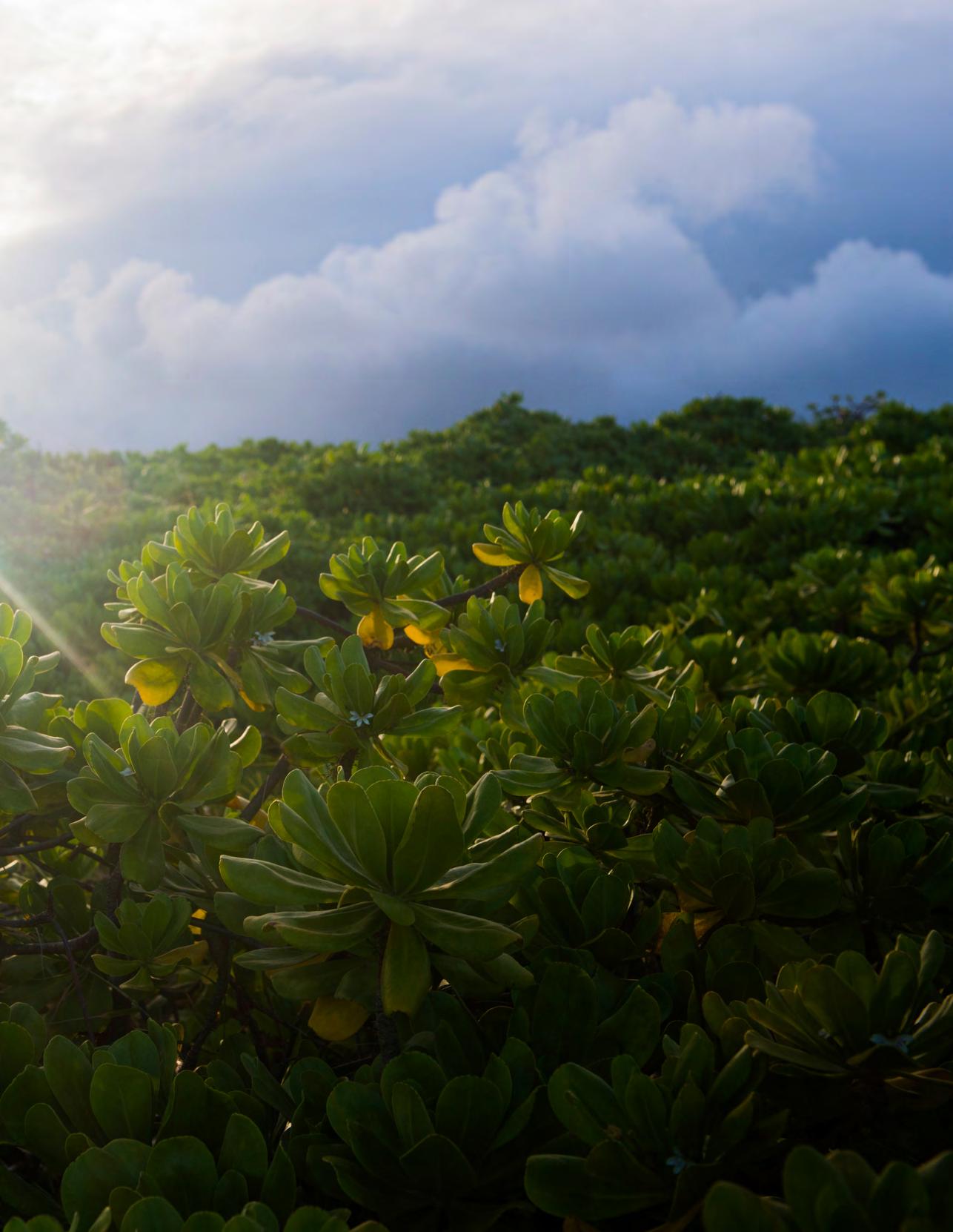
This report was prepared in accordance with Sustainability Accounting Standards Board (SASB) guidance, using the electric utilities standard for Hawaiian Electric, and the commercial banks, commercial finance, and mortgage finance standards for American Savings Bank. In addition, this report includes our first disclosures aligned with Task Force on Climate-related Financial Disclosures (TCFD) recommendations as well as our utility data in the Edison Electric Institute ESG template format.
Inclusion of information in this report should not be construed as a characterization regarding the financial materiality or financial impact of such information. For additional information regarding HEI, please see our filings with the Securities and Exchange Commission (SEC). Our SEC filings as well as direct links to certain presentations, documents and other information that may be of interest to investors are available at www.hei.com
HAWAIIAN ELECTRIC INDUSTRIESAcross the HEI family of companies, we see ESG and sustainability as an integral part of how we create value for all of our stakeholders – from customers and employees to communities and investors.
Since issuing our inaugural ESG report last fall, teams throughout the HEI enterprise have worked to further integrate ESG and climate-related factors into our governance, strategies, risk management and reporting. This second consolidated ESG report provides an update on our ESG efforts and reflects our commitment to continuous improvement, transparency and accountability.
In early 2021, leaders from across our family of companies worked together to conduct our first consolidated HEI ESG priorities assessment. The priorities we identified reflect the essential connection between the health of Hawai‘i’s environment, economy and communities and HEI’s success as a company.
These priorities include:
decarbonizing our operations and the broader Hawai‘i economy;
promoting Hawai‘i’s economic health and improving affordability for all residents;
ensuring reliability and resilience as we make our clean energy transition and adapt to a changing climate;
advancing digitalization of our operations to better serve customers and increase efficiency while protecting against cyber-security challenges;
promoting diversity, equity and inclusion both within our company and in the ways we interact with and impact external stakeholders;
increasing employee engagement; and
identifying and integrating climate-related risks and opportunities throughout our planning and decision-making.
With all of our operations in the middle of the Pacific Ocean, we know that our company’s long-term health is inextricably linked with the strength of the economy, communities, and environment of the Hawaiian Islands. This is why environmental, social and governance (ESG) and sustainability considerations are at the core of our mission to be a catalyst for a better Hawai‘i.
Our companies are doing a great deal to advance each of these priority areas, and in fact have been working to advance many of these areas for a long time. Throughout this report we highlight strategies and initiatives underway to address each of them. We see this as an evolution though, and will continue to strengthen our efforts, set additional goals and measure and report on our progress.
In this report we also include our first disclosures aligned with Task Force on Climate-related Financial Disclosures (TCFD) guidance, detailing our governance and risk management processes for identifying, monitoring and managing climaterelated risks and opportunities; describing key risks and opportunities we see for our companies and our state as we face a changing climate and related economic, customer and policy dynamics; and outlining key impacts for our companies under two climate scenarios, including a scenario targeted to limit global temperature rise to 2 degrees Celsius or lower. This is an important step, and we have developed a roadmap for deepening our TCFD analysis and reporting in the future, including by aligning it with our utility’s intensive long-range planning (Integrated Grid Planning) process.
Our focus on integrating material ESG and climate-related considerations into our strategies, risk management and operational processes underscores our commitment to creating a more sustainable, resilient company – and state – for all.
 Constance H. Lau President and Chief Executive Officer
Constance H. Lau President and Chief Executive Officer



Hawai‘i has been on the forefront of U.S. states in setting ambitious climate goals, with goals to achieve a carbon neutral to carbon negative economy by 2045 and a 100% renewable portfolio standard (RPS) by 2045, with interim RPS milestones of 30% by 2020, 40% by 2030 and 70% by 2040. At HEI, we recognize the role we play in reaching these goals and have aligned our efforts accordingly. We’re making strong progress In 2020 we reached 35% RPS, exceeding the state milestone. Throughout this report, including on pages 48 to 54, we describe our progress to date and the many efforts we have underway to reach these important goals.

Nationally and globally, among policymakers, investors, environmental stakeholders, corporations, and many others, efforts to accelerate greenhouse gas emission reductions to avoid the worst impacts from climate change have gained significant momentum, with increasing convergence around goals to reach a global net zero emissions target by 2050. As we publish this report, the Biden Administration and leadership of other countries are expected to announce updated climate commitments to hasten the pace of decarbonization around the world.
As a company in a state and community with much at stake from the effects of climate change (see our ESG Priorities on pages 16 to 25 and our Task Force on Climate-related Financial Disclosures (TCFD) reporting on pages 26 to 41), we wholeheartedly support accelerated global actions and progress in reducing greenhouse gas emissions. That’s why our state and our company have sought to be leaders in setting goals and demonstrating real progress in the near term – not just twenty or thirty years from now. We are committed to continuing to work with policymakers and our communities to reach our collective goals.
At HEI we believe our goals and plans place us on a strong path to reaching net zero carbon emissions by 2045. We are updating our planning and analysis to confirm our milestones aligned with global 2.0°C to 1.5°C climate change commitments. We will provide an update on that work in our future reporting.

At HEI, our family of Hawai‘i-based companies provides energy and financial services while advancing our state’s clean energy and sustainability goals.
As a company with a strategy focused on Hawai‘i, and with all of our operations in the state, our ability to deliver long-term value for our stakeholders is tied to the strength and sustainability of Hawai‘i’s communities.

generations, Native Hawaiians have stewarded Hawai‘i’s lands responsibly, developing a culture of sustainability that serves as an example for us today.
HEI is the parent company of three subsidiaries delivering essential services and advancing a more sustainable Hawai‘i.

Provides the energy that has fueled our islands’ growth and prosperity for 130 YRS

of Hawai‘i’s population of subsidiaries’ contribution to net income*
95% Serves 75% 25% Operates five separate electric systems on the islands of O‘ahu, Hawai‘i Island, Maui, Moloka‘i and Lāna‘i
largest financial institution in Hawai‘i 3RD
Provides the capital that has helped Hawai‘i grow for 95+ YRS
of subsidiaries’ contribution to net income*
Branches on five islands — O‘ahu, Hawai‘i Island, Kaua‘i, Maui and Moloka‘i
*Based on LTM 12/31/20 earnings to common shareholders and excludes other companies’ net losses.
Established in
2017
to advance Hawai‘i’s sustainability goals through infrastructure investment
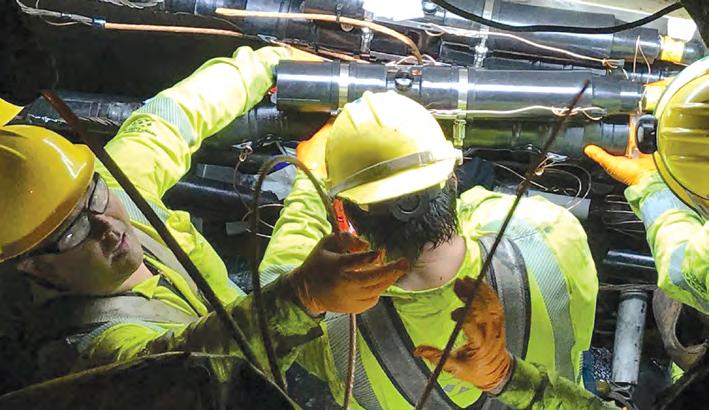
Projects on four islands, including O‘ahu, Hawai‘i Island, Kaua‘i and Maui
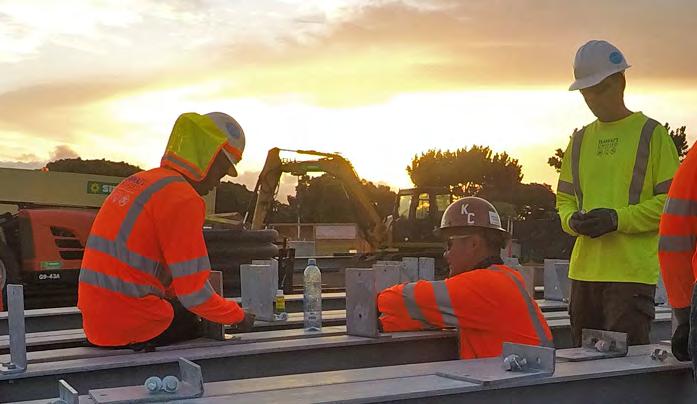

Our companies provide the energy and financial infrastructure that empower much of the economic and community activity of our state. We have long understood that our long-term success, and our ability to deliver sustainable value for our stakeholders — including our shareholders — is inextricably linked to the well-being of our employees, communities, economy, and environment. That is why we see our mission of being a catalyst for a better Hawai‘i as advancing our long-term financial sustainability. Our subsidiaries all contribute meaningfully to this mission.
Hawai‘i has a history of leading the nation in establishing ambitious climate goals, and our utility is at the center of efforts to achieve them.
Together with the state of Hawai‘i and the U.S. Department of Energy, we established in 2008 what was then viewed as an extraordinary goal to use renewable resources to power 40% of our electricity needs. This was at a time when Hawai‘i’s economy was almost entirely fueled by oil and coal and when the technology to achieve our renewable energy ambition with local intermittent solar and wind resources was not yet proven.
In 2015, Hawai‘i became the first state to set a goal of achieving a 100% renewable portfolio standard (RPS) by 2045, with interim milestones of 30% by 2020, 40% by 2030 and 70% by 2040. We’re striving to outperform these goals both in magnitude and timeframe to more
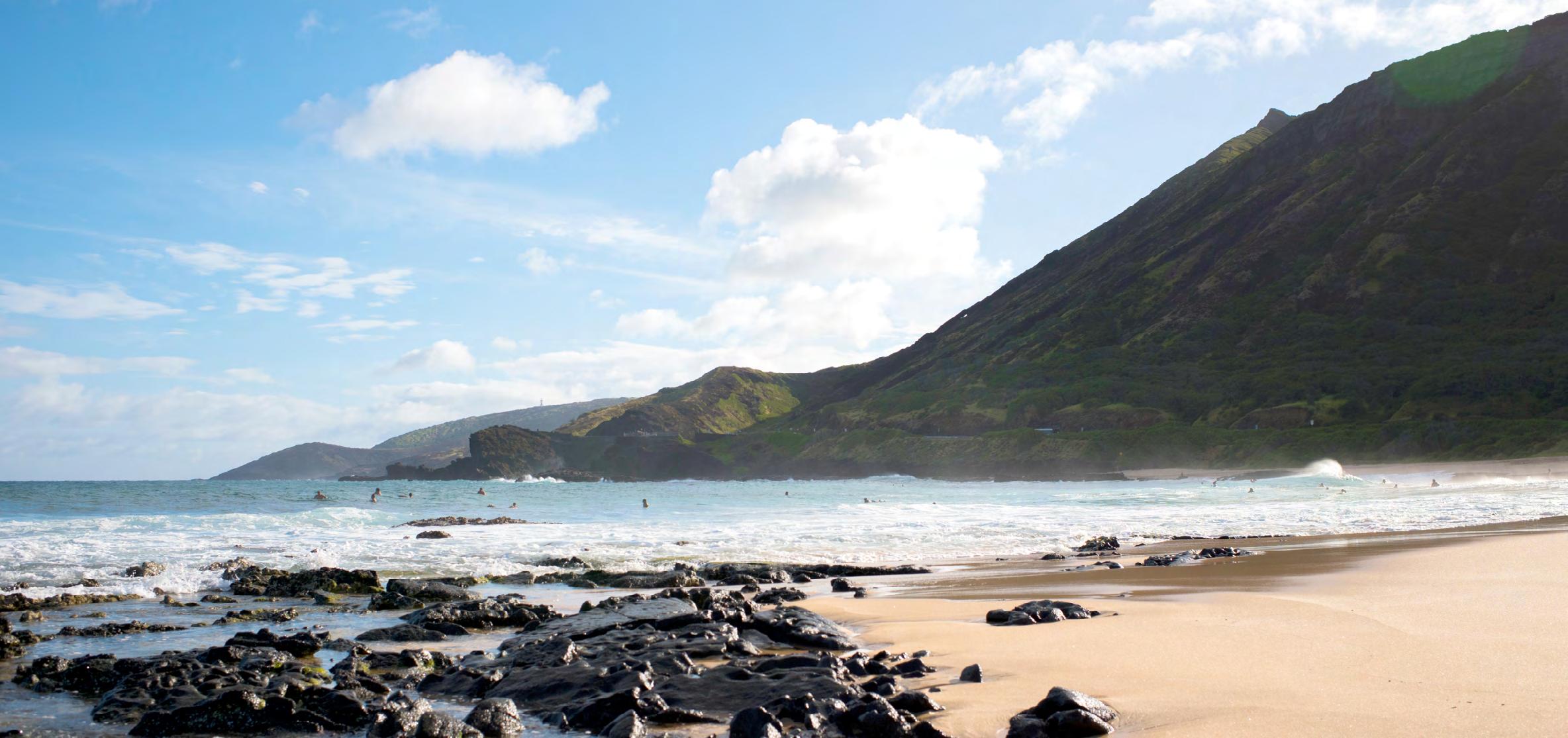
...we see our mission of being a catalyst for a better Hawai‘i as advancing our longterm financial sustainability.”
rapidly decarbonize our system and Hawai‘i’s economy. In 2020 we achieved a 35% RPS, and we’re now focused on achieving the 40% milestone well ahead of 2030.
In 2018, Hawai‘i also became the first state to set an economywide carbon neutral to carbon negative target, also by 2045. We’re playing a leading role in facilitating the achievement of this goal by increasing renewable energy and providing infrastructure and programs to help other sectors, such as transportation and buildings, decarbonize.
We’re working with stakeholders and community members to help drive a clean energy transition that benefits our whole community. Our work includes running the largest renewable energy procurement effort ever undertaken in the state so we can reduce fossil-fuel usage and the energy bill fluctuations that come with it; integrating among the nation’s highest percentage of rooftop solar per capita; expanding communitybased renewable energy programs to enable those without the ability to add rooftop solar to benefit from renewable energy; modernizing the grid and helping electrify more of our economy. The new performance-based regulation (PBR) framework adopted in Hawai‘i is designed to support the state’s renewable energy policies while ensuring the financial integrity of the utility.
To achieve our goals in the right way for our island state, we must balance important community needs such as affordability, social equity, reliability, resilience and environmental and cultural considerations with key challenges such as limited land and competing needs for that land, affordable housing and agriculture, and impacts on neighborhoods, protected species and ecosystems.
This is why we say reaching our goals must be done in a way that is kākou, meaning it will take our whole community working together, and pono, ensuring it is done in a way that is right and just for our communities. Only together can we find the solutions that strike the right balance for our island home.
American Savings Bank’s (ASB) success relies upon the economic health of businesses and families in our state. That’s why ASB is actively engaged in building a sustainable local economy. We do this through our core banking operations by financing businesses that help diversify our economy and create new jobs; lending for clean energy, electrification and energy efficiency projects that support our state’s decarbonization
efforts; and providing funding for community development efforts and sustainable, affordable and workforce housing to enable more Hawai‘i families to thrive.
We also work to build a more sustainable local economy by fostering innovation and entrepreneurship and by working to further financial literacy among our own customers and in the broader community.
ASB has been a leader in making our own operations more environmentally sustainable. We’ve reduced our total physical footprint, invested in energy and water efficiency, rooftop solar and electric vehicle charging for our headquarters, and rolled out many of these improvements for our branches. We also incentivize our teammates to reduce their own carbon footprint through our green transportation employee benefit.
Pacific Current was created in 2017 with the mission to advance Hawai‘i’s sustainability through infrastructure investment. We see sustainable infrastructure — to advance clean transportation, renewable energy, local agriculture and manage water and wastewater — as an opportunity to help solve important challenges for our state, create local jobs and support our economy while also earning a return for investors.
Pacific Current’s investments to date are contributing to greater sustainability. Its Hamakua Energy generating facility is transitioning to renewable energy by incorporating locally produced biodiesel. Its Port Allen solar facility is providing clean power for the island of Kaua‘i. Pacific Current has partnered with the University of Hawai‘i system (UH) and Johnson Controls to develop solar plus storage systems to help five UH campuses achieve their net-zero goals (Pacific Current is the long-term owner of the systems). Its joint venture with EverCharge is helping advance electric vehicle adoption by providing affordable, scalable charging infrastructure. Pacific Current has also partnered with innovative solutions providers such as Cambrian Innovation to identify opportunities to deploy costand resource-efficient clean water, renewable energy and water treatment.
This is just the beginning for Pacific Current. While today it is small in size relative to our overall enterprise, it is a central part of our strategy and has sustainability, including financial sustainability, at its core.
We see ESG-related strategies and risks as having the same potential as other strategies and risks to impact long-term value creation. As such, we’ve integrated material ESG factors into our governance structures and management activities.
Company strategies are overseen by the HEI Board of Directors (Board) as a whole and are managed through our strategic planning and oversight process. The Board provides guidance on strategic priorities and plans and approves the budget to allocate resources for agreed-upon strategies.
Our full Board reviews and provides input on major risks and determines our risk appetite. This includes risks relating to safety, resilience and climate change impacts. The HEI Audit & Risk Committee oversees our Enterprise Risk Management (ERM) program, which is designed to identify, assess and report key risks to the Board, along with strategies for mitigating such risks. The Hawaiian Electric Audit & Risk Committee and the ASB Audit Committee and ASB Risk Committee assist in risk oversight of those subsidiaries.
The HEI Nominating & Corporate Governance Committee is responsible for ensuring all material ESG issues have appropriate Board oversight. It is also responsible for overseeing governance and human capital management, including diversity, equity and inclusion.
The HEI Compensation Committee oversees strategies and risks relating to compensation matters. This includes establishing incentive goals to drive execution of strategy, including with respect to ESG.
See the TCFD section of this report for further detail on ESG governance.
We see our sustainability goals as central to our value proposition. Our climate goals link to our investment opportunities, regulatory framework, customer offerings, core operations and other aspects of our businesses that connect to HEI’s long-term financial performance.
Our HEI Corporate Sustainability function reports to our CFO, who is an advocate of integrating priority ESG factors throughout risk management, strategy, finance and operations on an enterprise-wide basis. We’ve received great feedback on the fact that at HEI, sustainability is intertwined with the financial organization.
Several ESG goals are included in incentive compensation for HEI and utility executives. Our bank executive goals focus predominantly on bank financial performance. See our 2021 proxy statement for more information on executive performance goals.
For 2021 the Compensation Committee has established additional ESGlinked goals related to electrification of transportation (see page 41) and diversity, equity and inclusion (see page 71).
20% of HEI and utility executive long-term incentive opportunity for 2020-22 and 2021-23 is based on RPS achievement. While Hawai‘i law requires us to achieve 40% RPS by 2030, we seek to achieve that well ahead of that time, and are incentivizing executives to do so by linking their pay to the following goals:
Our board possesses critical ESG expertise to oversee our HEI enterprise and strategies. Below we’ve highlighted the ESG expertise of seven of our independent HEI directors who have direct experience on ESG topics, including renewable energy, climate change strategy, environmental management, and sustainable investing.
Celeste Connors is a climate risk expert and has advised U.S. presidents and other officials on clean energy and sustainable development. She served as Director for Climate Change & Environment at the National Security Council and National Economic Council. She is Executive Director of Hawai‘i Green Growth Local2030 Hub, one of the world’s first UN-recognized local sustainability hubs.
Richard Dahl oversaw the development of sustainability strategies as President & COO of Dole Food Company. Under his leadership, Dole invested in a number of sustainability initiatives. Dole was named one of the World’s Most Ethical Companies by Ethisphere Magazine and undertook a carbon offset program to secure a carbon neutral operating footprint.


Peggy Fowler was CEO for Portland General Electric (PGE) when PGE made the strategic decision to reduce its use of oil and coal. Under her leadership, wind and solar projects were constructed and integrated into the PGE grid. PGE has been ranked #1 on multiple occasions for selling more renewable power to residential customers than any other U.S. utility.
Micah Kane leads the Hawai‘i Community Foundation, Hawai‘i’s largest foundation. A Native Hawaiian community leader, he brings invaluable experience in understanding Hawai‘i’s complex cultural and land use history. He has worked to bring the community together to address important issues facing Hawai‘i, including sustainability, homelessness and affordable housing.
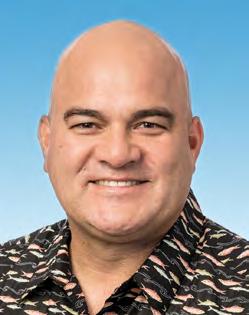
Mary Powell served as President & CEO of Green Mountain Power from 2008 to 2020. Under her leadership, the company became the world’s first utility to become a Certified B Corporation (a business that balances purpose and profit). She led an ambitious energy vision to dramatically ramp up local renewable energy resources in Vermont.


Jim Scilacci has extensive experience overseeing the financial aspects of utility clean energy transitions and managing risks, including ESGrelated risks such as climate change impacts. His career includes serving as CFO of Edison International and its subsidiary Southern California Edison, a leading utility with respect to grid modernization, transportation electrification and renewable energy.
Eva Zlotnicka has a background in utilizing markets, policy and partnerships to motivate the private sector to simultaneously improve sustainability, profitability and competitiveness. She is a co-founder of Inclusive Capital Partners, an investor in HEI, and previously served as the U.S. lead ESG equity research analyst at Morgan Stanley.


In early 2021 we completed our first consolidated HEI ESG priority assessment, building from assessments conducted with each of our subsidiaries in 2019 and updated in 2020. In this combined assessment we prioritized issues based on their importance to our business performance and value creation and importance to our stakeholders, including customers, employees, investors, policy makers, community leaders and non-profit organizations.
In the paragraphs that follow we describe our top ESG priority areas and why they are important to us. In the remaining sections of this report we detail our strategies, initiatives and achievements that support these priorities. We plan to continue to use this ESG priority assessment to enhance our efforts, identify new ways to advance these priorities, measure progress and set additional goals.

We identified 19 ESG priority areas at the consolidated enterprise level and grouped them according to the five Sustainability Accounting Standards Board (SASB) dimensions: environment, social capital, human capital, business model & innovation, and leadership & governance. While we view all 19 areas as important and have management activities in place for each, in this report and in our future efforts we are placing special focus on the seven topics in the upper-right quadrant of the matrix shown on the next page, as those ranked high in importance both to our business and to our stakeholders.
Our top ESG priority areas reflect the essential connection between the health of Hawai‘i’s environment, economy and communities and our success as a company. These priority areas are decarbonization, economic health & affordability, reliability & resilience, secure digitalization, employee engagement, climate-related risks & opportunities, and diversity, equity & inclusion.
Our top ESG priority areas reflect the essential connection between the health of Hawai‘i’s environment, economy and communities and our success as a company.”
IMPORTANCE TO STAKEHOLDERS
Diversity, Equity & Inclusion
Climate-Related Risks & Opportunities
Community Involvement
Transparency
Disasters
Sustainable Supply Chain
Customer Satisfaction
Waste Ethical Business Practices
Economic Health & Affordability
Employee Engagement
Decarbonization
Reliability & Resilience
Secure Digitalization
Effective Governance Practices
Infrastructure Investment & Modernization
Stakeholder Engagement
Safety
Beneficial Electrification
Environment
Social Capital
IMPORTANCE TO BUSINESS
SASB DIMENSIONS
Human Capital
Business Model & Innovation
Our ESG Priority Areas
Leadership & Governance
1 2 3 4 5 6 7
Decarbonization
Economic Health & Affordability
Reliability & Resilience Secure Digitalization Diversity, Equity & Inclusion
ENVIRONMENT SOCIAL CAPITAL SOCIAL CAPITAL SOCIAL CAPITAL SOCIAL CAPITAL HUMAN CAPITAL
Employee Engagement
ClimateRelated Risks & Opportunities
HUMAN CAPITAL BUSINESS MODEL & INNOVATION
Providing leadership and developing infrastructure, programs, and services to advance economy-wide decarbonization in Hawai‘i. Reducing greenhouse gas emissions (GHG) across our operations, including by transitioning away from fossil fuels, electrifying fleets, increasing facility energy efficiency and through carbon removal and offsets.
Decarbonization is a major focus of both state policy and our strategy. As an island state with an unparalleled natural environment that is the foundation of our traditions, our way of life and one of our major economic engines (tourism), Hawai‘i has much at stake from climate change. For that reason, our state has been one of the nation’s leaders in setting ambitious climate goals, including a 100% renewable portfolio standard (RPS) and a carbon neutral to carbon negative economy by 2045.
We have aligned our enterprise strategy with state policy, and it’s critical that we maintain alignment with policy and stakeholders as we move forward.
Our success in decarbonizing our own operations and helping decarbonize our state’s economy while ensuring affordability, equity, reliability and resilience has many potential impacts for our companies, including: (i) the extent to which our companies receive policy and regulatory support, (ii) our reputation and stakeholder support, (iii) our ability to attract, retain and engage a high-quality workforce and (iv) our ability to raise costeffective capital from equity and debt investors that seek to invest in companies that are helping reduce global greenhouse gas (GHG) emissions and are positioned to benefit from the lowcarbon transition.
Advance decarbonization of Hawai‘i’s economy by:
• Reducing enterprise-wide carbon emissions across facilities, employee commuting and other company activities
• Advocating for sound energy and environmental policies
• Leveraging the strengths of each of our companies
Achieve Hawai‘i’s RPS milestones faster than state mandate
Promote economy-wide decarbonization through beneficial electrification of infrastructure and programs to decarbonize other sectors
Leverage carbon offsets and other mechanisms to remove carbon
Maintain reliability, affordability and equity for all customers during transition
Finance Hawai‘i’s decarbonization through lending for energy efficiency, renewable energy and storage, electric vehicles and fleet electrification
Fund sustainable and affordable housing
Increase resource efficiency across bank operations
Invest in non-regulated sustainable infrastructure to advance decarbonization, including vehicle charging, renewable energy and storage
Contribute to decarbonization through other sectors, including water, wastewater, agriculture and technologies to remove, store and re-use carbon
Working to strengthen Hawai‘i’s economy by promoting innovation, entrepreneurship, diversification and energy independence. Directly supporting the economy through job creation, infrastructure investments, financing offerings and local sourcing and partnerships. Helping address Hawai‘i’s high cost of living through our ability to impact affordability drivers in the state. Efforts may include cost reduction strategies for equitable rates, low- to moderate-income (LMI) programs, affordable housing strategies and enhancing financial fitness.
A strong, diverse state economy that provides well-paying jobs in a range of industries is essential to the growth and continued financial strength of our entire enterprise. The COVID-19 pandemic highlighted Hawai‘i’s heavy dependence on tourism, and the challenges a severe impact to that sector poses for our economy, our communities and our companies. Efforts to diversify Hawai‘i’s economy have gained new energy, and we are heavily involved in a large-scale, multi-sector initiative to make our economy more resilient.
Cost of living and Hawai‘i’s economic health are intertwined; Hawai‘i’s affordability is a key factor in attracting businesses and better jobs. In turn, the availability of well-paying jobs helps make Hawai‘i more affordable. Hawai‘i has the highest cost of living in the nation, with a 2019 Regional Price Parity of 119.3 (compared to a national baseline of 100).1 A large proportion of Hawai‘i households – 42% in 2018 (up to 59% in 2020 after Hawai‘i severely curtailed economic activity to fight the spread of COVID-19) – were either living below the federal poverty level or were considered “ALICE” households, i.e., Asset Limited, Income Constrained, Employed.2 High demand coupled with a limited supply of affordable and workforce housing represents one of Hawai‘i’s largest affordability challenges.
Strengthening Hawai‘i’s economic health and improving Hawai‘i’s affordability will strengthen the financial health of families, businesses and state government and help advance social equity. A more economically resilient, affordable Hawai‘i can drive opportunities for our companies, including greater economic stability in the event of future broad economic shocks, lending opportunities for our bank, more opportunities for Pacific Current to invest in sustainable infrastructure, greater regulatory
and public support for utility investments to decarbonize and ensure resilience of our energy system, and the ability to attract and retain a strong workforce.
How we define it
Investing in and upgrading infrastructure to proactively address potential challenges (e.g., ensure system reliability, resilience, environmental compliance), improve our capabilities and service (e.g., grid modernization, digitization) and enhance sustainability.
Why it’s important
Delivering reliable electric service is foundational for our utility to earn and retain the support of our customers and regulators. As we add more renewable and distributed energy resources to our utility system, it is critical that we make the accompanying investments needed to ensure system resilience and reliability.
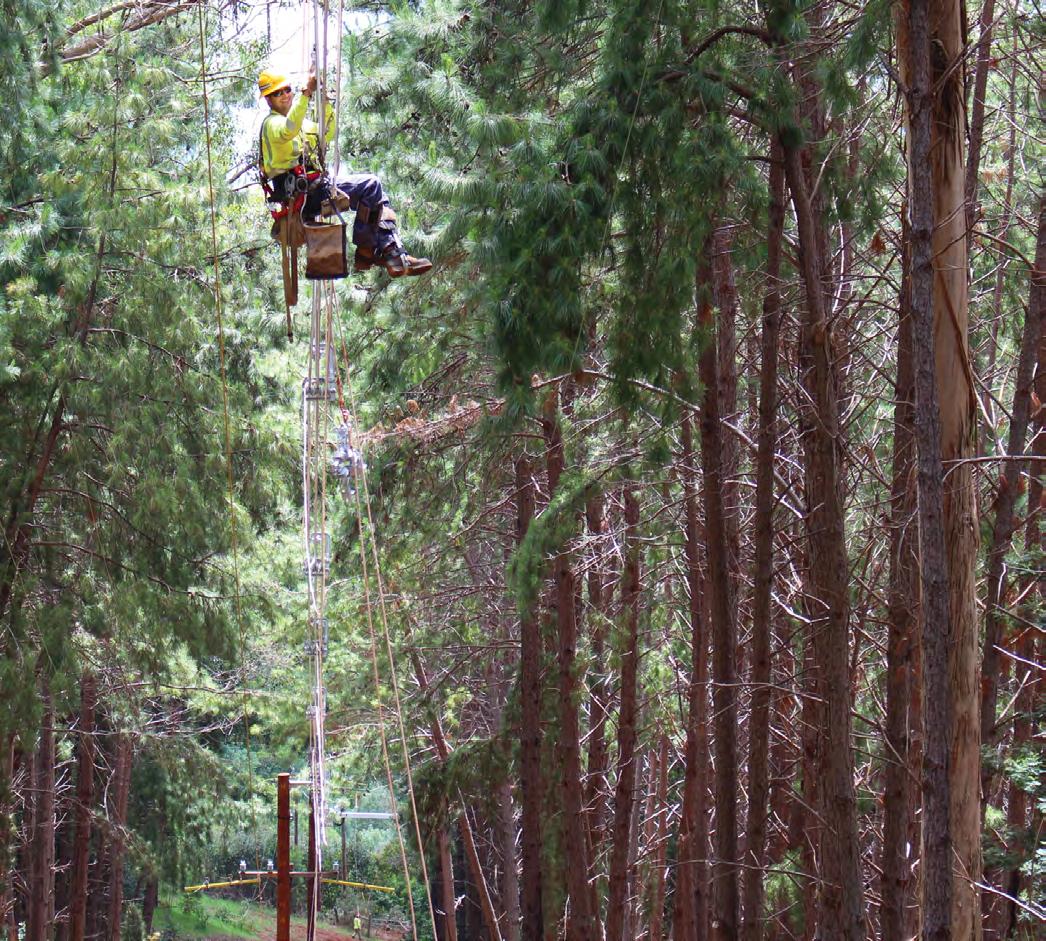
Resilience is an essential goal across our companies and our economy. We provide essential services for Hawai‘i through our utility and bank, and must be prepared to withstand and quickly recover from potential natural disasters and economic disruption, as well as adapt to a changing climate.
2 2020 ALICE Flyer HDC FINAL.pdf (auw.org)
Successfully shifting our operations and customer interactions to more digital approaches while maintaining the security of our digital assets and operations (including system operations, corporate information technology systems, and mobile solutions). Protecting proprietary corporate and private customer information against malicious and deliberate attempts to access and utilize such information.
Business operations and customer interactions at our utility and bank are rapidly shifting to more digital approaches, enabling more automated, efficient operations and increasing our ability to tailor products and services to customers’ needs. The COVID-19 pandemic accelerated the digitalization trend, re-setting paradigms around remote work and dramatically increasing customer adoption of online service options. Our utility’s Grid Modernization initiative will facilitate its ability to integrate more renewable and distributed energy resources and offer more options for customers to manage their energy usage and contribute to our clean energy goals. Our bank is implementing its Anytime, Anywhere Banking initiative, investing in upgraded technology and customer data analysis and engagement systems to offer a seamless, multi-channel customer approach.
Customer expectations of companies’ digital offerings and user experience are rising, impacting reputation, customer relationships, and competitive dynamics. Cybersecurity challenges are also increasing, and it is critical that we stay ahead of those challenges to ensure resilient operations across all of our businesses and maintain the trust of our customers, regulators and communities. We must also ensure we have a workforce with the technological and data analytics skills for an increasingly digital world, and that we offer workplace flexibility options that will enable us to effectively compete for talent.
Promoting a diverse, equitable and inclusive workplace and advancing social equity and inclusion through our customer programs and services. Diversity is the range of human differences, including but not limited to race, ethnicity, gender, gender identity, sexual orientation, age, economic status, physical ability or attributes, religious or ethical values system, national origin and political beliefs. Equity and inclusion considers issues related to equity in opportunity, access and impact as they relate to the company’s culture, products, services and activities.
We believe advancing diversity, equity and inclusion both within our company and in the broader community should be a key consideration in all that we do.
Internally, while the diversity of our employee base reflects Hawai‘i’s uniquely diverse demographics, we recognize the ongoing importance of internal programs and infrastructure to cultivate a culture of inclusivity and equity where all employees have equitable opportunities and where diverse perspectives and experiences are valued, included and help lead to stronger performance.
Externally, we see promoting diversity, equity and inclusion through our engagement activities and through our programs, products and services as important to our long-term success. For our utility, it is critical that Hawai‘i’s decarbonization not leave any part of our community behind, that policies and programs be designed to avoid inequitable shifting of costs and that siting of renewable energy and other infrastructure projects considers community needs and desires. For our bank, advancing economic equity and inclusion and financial fitness strengthens the financial health of its customer base and the overall economy.

Creating a company culture where all employees belong, contribute and can thrive. Working to foster employee enthusiasm and commitment to the organization and its mission to be a catalyst for a better Hawai‘i, improving employee satisfaction and employee retention and attracting talent. Maintaining a strong focus on development and training and fair labor practices such as those relating to pay, benefits and hours.
An engaged and qualified workforce is our greatest asset in achieving our decarbonization and other company goals, developing strong relationships with our customers and communities and remaining competitive in a rapidly evolving business landscape. Strong employee engagement promotes high performance and innovation and helps attract and retain talented employees. We believe in our employees across the HEI family of companies, who share our vision of meeting the needs of our customers and communities.
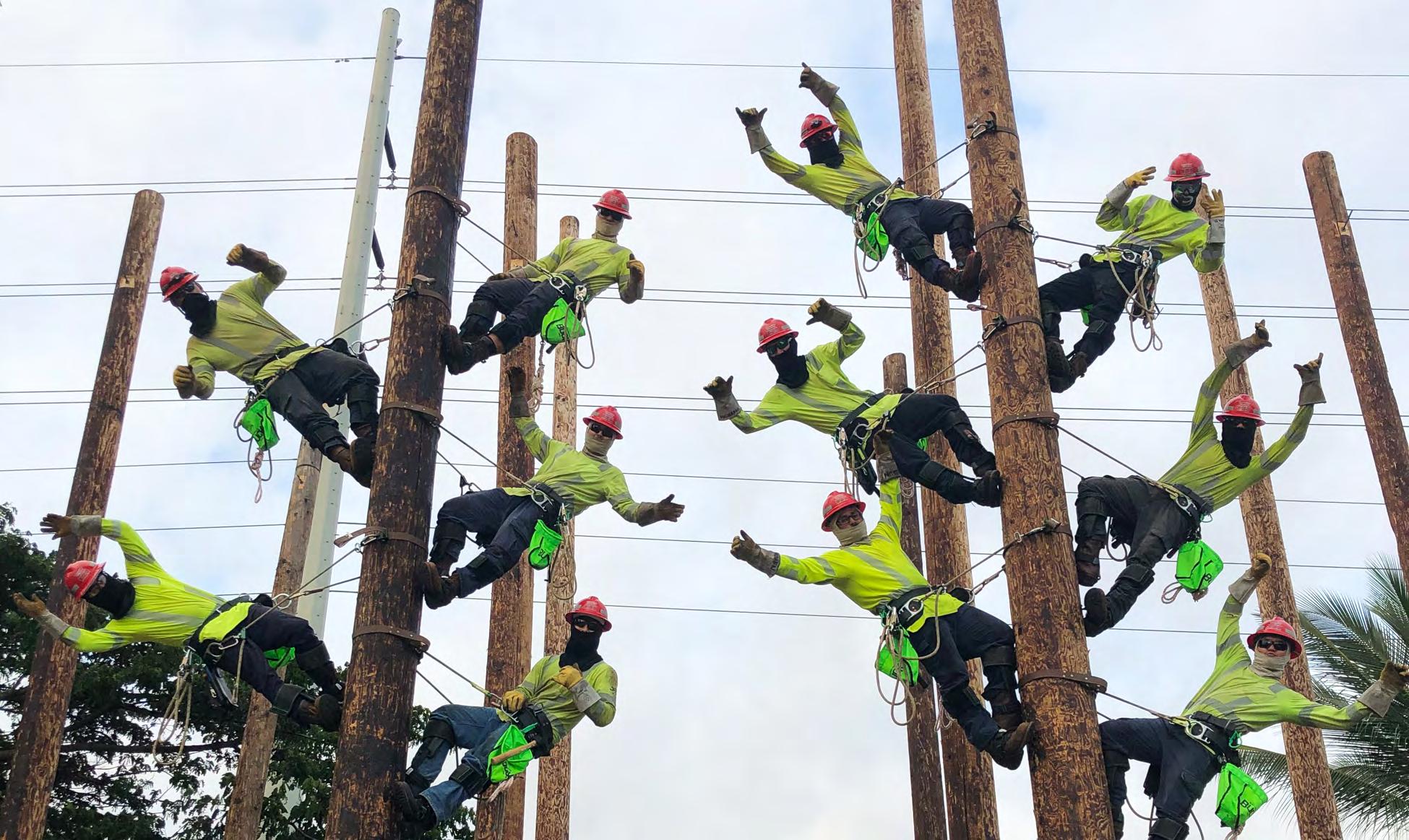
How we define it
Identification of and preparation for the impacts of climate change, including physical and transition risks. Positioning our companies for opportunities including the deployment of clean energy solutions, increasing electrification and identification of potential business growth areas to address climate change.
Climate change has wide-ranging implications for our economy, our communities and our companies. While decarbonization efforts around the world are gaining momentum and hold promise for curbing the worst effects of climate change, our climate is already changing. Here in Hawai‘i we’re seeing longer periods of warmer temperatures and greater frequency of high tide flooding. We expect further impacts in the future, including more frequent and severe storms and a potential 3.2-foot rise in sea level in Honolulu by the end of the century.1
* Constellation = a group or cluster of related elements.
Many have compared the collective action needed to combat climate change with the global effort to address the COVID-19 pandemic. Climate change presents risks for our enterprise as well as opportunities as we adapt, innovate and address its challenges. As a critical infrastructure and essential service provider, our utility has been focused on climate challenges and potential climate changes for some time and has led and participated in community-wide efforts to identify resilience vulnerabilities and opportunities to address them. Our bank evaluates potential climate change risks to its loan portfolio, real estate assets and its operations, and proactively monitors and develops mitigation plans. While our HEI companies have been working on climate change issues for some time, we know there is much more to do.
Interrelationship. Many of our top ESG priorities are related to one another. The charts above illustrate some of the key areas of interrelationship.
Our ability to successfully decarbonize our state’s economy and deliver reliable and resilient power is influenced by our ability to identify, adapt and respond to climate-related risks and opportunities. It also relies on infrastructure investment and modernization, must be aligned with our stakeholders and must be done in a manner that is inclusive, affordable and shares the costs and benefits of the transition equitably. See “HEI’s Climate Constellation,” above.
In order to engage employees successfully, we need to advance diversity, equity and inclusion within our enterprise, ensure the safety of our employees and the public, use effective governance and ethical business practices and communicate transparently with employees and external audiences. See “HEI’s Employee Engagement Constellation,” above.
Our consolidated HEI ESG priority assessment was developed through a robust process that incorporated external stakeholder input and focused internal discussions on key topics of interest.

We began by identifying potential ESG factors from reporting standards, particularly SASB and TCFD, industry peer benchmarking, credit rating agencies, ESG rating organizations, institutional investors and frameworks such as the UN Sustainable Development Goals (UN SDGs).
Interviews were conducted across a range of external and internal stakeholders, including community and non-profit organization leaders and employees and executives from each subsidiary. The interview results were augmented by our companies’ ongoing customer and other stakeholder engagement and by a utility customer survey on ESG priorities.
Subsidiary executives refined their ESG priorities through structured workshops and obtained board input through discussions at a board retreat.
The resulting subsidiary ESG priority matrices guided further integration of ESG priorities into each subsidiary’s strategic planning and risk management activities.
While our HEI companies have been working on climate change issues for some time, we know there is much more to do.”
We leveraged the subsidiary ESG priority assessments to identify initial priorities and focus areas for the consolidated HEI enterprise.
Extensive sentiment and media analyses were completed to review priorities and expectations of key stakeholder groups. This included review of equity research reports and public materials from institutional investors to understand their ESG priorities, and was informed by our ongoing engagement with investors and other stakeholders.

Interviews were completed with a diverse cross-section of HEI and subsidiary leaders to identify focus areas and understand any shifts in prioritization of topics from the subsidiary ESG priority assessments.
Executives from across the enterprise participated in structured workshops to review, validate and prioritize the identified ESG topics for the consolidated enterprise. A sub-group of Board members provided input prior to full Board review of the resulting set of priority issues.
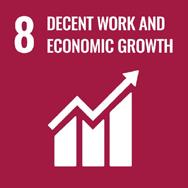


Our top ESG priority areas align with nine of the 17 UN SDGs and with the Aloha+ Challenge. The UN SDGs were created by the UN in 2015 as part of a global sustainable development agenda aimed to end poverty, protect the planet, and ensure prosperity for all. The Aloha+ Challenge is Hawai‘i’s statewide sustainability framework, and has been recognized as a model for local implementation of the UN SDGs and for other island economies as they tackle challenges like energy and food security, waste management and economic growth.
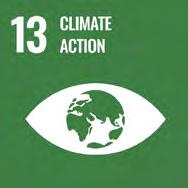


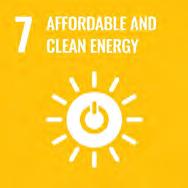







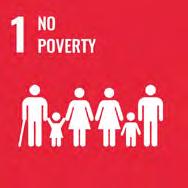



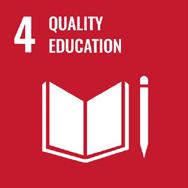
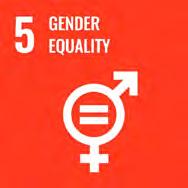

Hawai‘i Green Growth, which has been designated a UN Local2030 Hub, worked with stakeholders across the islands to develop the Aloha+ Challenge. Progress on the Aloha+ Challenge goals is tracked through an online dashboard and measured through community co-developed metrics and indicators.
SOCIAL CAPITAL
BUSINESS MODEL & INNOVATION
Climate-Related Risks & Opportunities
At HEI we have committed to implementing the recommendations of the TCFD in full over time. In this, our first TCFD- aligned disclosure, we outline our governance and risk management approach for climate change, identify key climate-related risks and opportunities, provide a high-level analysis of implications of a transition climate scenario and a physical scenario, and summarize our current primary metrics and targets related to climate change.
We intend to enhance our TCFD reporting going forward. A key element is aligning our TCFD scenario analysis with our utility’s Integrated Grid Planning (IGP) process, a long-range planning process currently underway to determine our utility generation, transmission and distribution needs to achieve our state climate goals and enhance resilience.
We believe ESG-related risks, opportunities and strategies, including those related to climate change, have the same potential to impact long-term value as other significant risks and opportunities. As a result, the Board and management determined that all material ESG factors should be identified and formally integrated into our existing governance structures and management activities.

...we have committed to implementing the recommendations of the TCFD in full over time.”
Risk Management
Metrics and Targets
Governance
The organization's governance around climate-related risks and opportunities Strategy
The actual and potential impacts of climate-related risks and opportunities on the organization's business, strategy and financial planning
The processes used by the organization to identify, assess and manage climate-related risks
Metrics and Targets
The metrics and targets used to assess and manage relevant climate-related risks and opportunities
In addition, the Board and its NCG Committee deliberately work to ensure we have directors with highly relevant experience on ESG topics applicable to our businesses and strategies, including renewable energy, climate change strategy, environmental management and sustainable investing. Seven independent members of the Board have direct experience in one or more of these areas, bringing deep expertise to the Board’s oversight of climate-related risks and opportunities. See page 15 for additional details on board expertise.
Company strategies are overseen by the Board as a whole and are managed through HEI’s strategic planning processes. The Board provides guidance on strategic priorities and plans and approves the overall corporate budget to allocate resources for agreed-upon strategies. The Board carries out these responsibilities through its annual strategic retreat, regular Board meetings, review of written reports and ongoing engagement with management. Climate-related matters have been an increasingly important focus of management and the Board and have become a key component of our long-term business and operational planning processes.
Many of our strategies, plans and investments relate to reducing the severity of climate change in the future through decarbonization, such as the utility’s work to retire fossil fuelbased generation and increase the use of renewable energy and storage and the utility’s and Pacific Current’s efforts to increase electrification of Hawai‘i’s economy, including transportation. We also have set into motion strategies, programs and plans to prepare our companies to withstand future impacts of climate change and improve the resilience of our infrastructure and operational capabilities and processes. This includes investments like our Schofield Generating Station,
which enhances resilience through its location away from the shoreline, its quick-starting capability to respond to fluctuations in solar and wind generation and its ability to use biofuels or conventional fuels. We also regularly monitor and make other investments to increase the reliability of our island power grids.
The Board, along with the operating company boards of Hawaiian Electric and American Savings Bank, are involved in frequent discussions of and receive regular reports on climaterelated strategic matters. Such discussions and reports have included:
Annual review of company strategy and enterprise risk at board strategy retreats:
the 2019 retreat included a “deep dive” on climate change risk and sea level rise, and included presentations by climate risk analytics firm Jupiter Intelligence and by each operating company on climate-related risks and mitigation plans
the 2020 retreat included an update on the integration of material ESG elements, including climate change, into risk management and strategic planning
Quarterly review of progress on strategic initiatives as part of regular board meetings
Monthly updates on Hawaiian Electric’s progress on initiatives to achieve Hawai‘i RPS goals
Board member involvement in considering climate scenarios and climate-related risks and opportunities in preparing for this initial TCFD-aligned report
Climate-related risks are integrated into HEI’s overall Enterprise Risk Management (ERM) processes. The Board provides oversight of climate-related and other risks through comprehensive and integrated ERM processes and regular reporting on the material risks that can potentially impact our operations, strategies and long-term financial performance. The Board also reviews and provides feedback on the company’s ERM processes for identifying, monitoring, managing and mitigating risks to ensure these processes are effective. Topics discussed at the board level include utility reliability and resilience, technology innovation and integration, increased frequency of natural disasters and extreme weather events and their potential impacts for our companies, sea-level rise and its potential implications for physical assets and financial assets such as the bank’s loan portfolio, and land use and community sentiment in the context of accelerated renewable energy development.
Each Board committee has responsibilities with respect to oversight of climate-related risks and opportunities, and reports on its activities and recommendations through our regular and, as necessary, special Board and/or committee meetings:
The Nominating & Corporate Governance Committee (NCG Committee) is responsible for ensuring all material ESG issues, including climate-related risks and opportunities, have appropriate Board oversight.
The Audit & Risk Committee is responsible for overseeing (i) the ERM program, which includes management of climate-related risks and (ii) financial and other reporting to ensure transparency and consistency with best practices and standards.
The Compensation Committee oversees executive compensation, including establishing incentive goals to drive execution of strategy. Several ESG goals, including climate change-related goals, are included in executive incentive compensation for HEI and utility executives. This includes existing goals for accelerating RPS achievement and improving reliability, and newly added goals in 2021 relating to electrification of transportation (EOT) and performancebased regulation (PBR).
In addition to the Board committees, committees of the independent boards at each of the utility and bank subsidiaries assist with oversight of risks, including climaterelated risks. The Hawaiian Electric Audit & Risk Committee assists in overseeing the utility ERM program and the ASB Risk Committee assists in overseeing the bank’s ERM program.
The Board has approved a consolidated ERM system recommended by management. The system is designed to identify and assess risks across the HEI enterprise so that information regarding the enterprise risks can be reported to the Board, along with proposed strategies for mitigating and managing these risks. The structure of the ERM system is decentralized, with separate chief risk officers at each of Hawaiian Electric and ASB in addition to HEI's chief risk officer (HEI CRO). The ERM functions for "other" operations of HEI, such as Pacific Current, are performed by the HEI CRO or HEI employees under the supervision of the HEI CRO. Each subsidiary chief risk officer reports directly to the respective subsidiary president and functionally to the HEI CRO, who reviews such risks on a consolidated basis. The Board believes that this decentralized risk management structure is appropriate and effective for the Company’s diverse operations and holding company structure, because it allows for industry-specific risk identification and management at the subsidiary levels while also ensuring an integrated and consolidated view of risk at the holding company level.
Business and strategic planning are designed to develop goals and priorities, establish key performance indicators and identify challenges to successfully implementing company strategy. Management hosts and actively participates in an annual multiday strategy retreat with the Board, where plans and strategic initiatives across the HEI enterprise are reviewed, providing the basis for the annual budgeting process and update to our multiyear financial forecast. Strategies and progress updates toward achieving key goals, such as the RPS, are discussed with the Board in depth at the retreat, as well as through Board meetings over the course of the year. On an ongoing basis, management plans and executes strategies to achieve organizational priorities, including ESG responsibilities and initiatives.
As the climate change landscape evolves, we will continue to build upon the strong base level of experience and knowledge within senior management and the Board, as well as continue to consider climate change expertise in Board succession planning. The full Board will continue to monitor our sustainability performance and approve updates to our sustainability strategy and goals.
RISK THEMES
HEI defines risk as uncertainty that could have an adverse effect leading to financial, physical and/or reputational loss, harm and/or damage. Opportunities arise when conditions, trends and/or company strengths present the potential to generate financial or other benefits. In preparation for this report, risks and opportunities were considered for three time horizons –short term (<5 years), medium term (5-15 years) and long term (15+ years).
In line with TCFD recommendations, HEI categorized risks into five themes: “Physical,” “Technology,” “Market,” “Policy & Legal” and “Reputation.”
RISK THEME DESCRIPTIONS
THEME DESCRIPTION
PHYSICAL
The risks posed to operations and assets by climate change. Physical risks originating from climate change can be eventdriven (acute) such as increased severity of extreme weather events (e.g., hurricanes, droughts, floods and fires). They can also relate to longer-term (chronic) shifts, such as increases in precipitation and temperature, greater variability in weather patterns and sea level rise.
TECHNOLOGY
MARKET
POLICY & LEGAL
REPUTATION
The risks associated with the substitution of existing products and services with lower emission options, unsuccessful investment in new technologies and costs to transition to lower emissions technology.
The risks associated with a significant change in consumer behavior and expectations, with consumers seeking new, enhanced and/or innovative goods and services, which may include low-carbon energy solutions and digitalized services.
The risks associated with legislative and regulatory actions to reduce carbon emissions (such as acceleration of energy transition requirements, pricing of GHG emissions, enhanced emissions reporting obligations, mandates on and regulation of existing products and services or new product development) and exposure to litigation.
The risks arising from stakeholders’ expectations of how businesses respond to climate change issues. Risks in this area can lead to loss of revenue or market share if these expectations are not addressed.

Examples of risks identified through HEI’s physical climate risk assessment are provided below and categorized by risk theme and timing:
PHYSICAL
Flooding (Acute)
Sea level rise (Chronic) Medium term
Increased frequency of intense / severe storms (Chronic)
Reliability
TECHNOLOGY
System resilience
Unsuccessful investment in new technologies
Affordability
Increased cost of raw material and key inputs
Medium term
Short term
Short term
Medium term
Short term
Short term
MARKET
Change in customer behavior / expectations
Negative impacts to state’s economy
Managing public and regulatory expectations / perceptions
Short term
Medium term
Short term
POLICY & LEGAL
GHG emissions pricing
REPUTATION
Short term
Increased stakeholder concern Short term
Stigmatization of sectors, technologies and products Medium term
THEME DESCRIPTION
ENERGY SOURCE
RESOURCE EFFICIENCY
PRODUCTS & SERVICES
These opportunities are typically associated with the utilization of lower emission sources of energy, supportive policy incentives and new technologies.
These opportunities relate to more efficient energy production and distribution and modes of transportation, increased efficiency in buildings (including water, energy and cooling/heating needs) and the reduction of water usage and consumption.
These opportunities refer to the development and/or expanding use of goods and services with lower emissions, development of climate adaptation and solutions and development of new products or services.
MARKETS
These opportunities relate to expansion of and access to new markets, supporting and facilitating the integration of new low-carbon and climate adaptation technologies, products and services by both banking and utility customers, as well as the use of public sector incentives to enable more timely and efficient energy transition and climate adaptation.
RESILIENCE
OPPORTUNITY TIMELINE
ENERGY SOURCE
These opportunities refer to improvement of system resilience and reliability, e.g., through resource and/or geographic diversification, system hardening, deployment of new technologies and customer participation in new renewable energy programs.
RESOURCE EFFICIENCY
Increased use of renewable energy sources
Growth of decentralized / distributed generation and grid services
Electrification of transportation and other sectors
More efficient transmission and distribution system and operations
Shift in customer preferences creating opportunities for new energy products
Financing physical relocation or reinforcement of properties
Short term
Short term
Short term
Short term
Short term
Short term
PRODUCTS & SERVICES
Financing the renewable energy transition
Water / wastewater management
Affordable housing
MARKET
Local catalyst for change
Sustainable / affordable / resilient community (re-)development
Diversification of geography (e.g., siting of infrastructure at higher elevations and/or other islands within the state)
Short term
Short term
Short term
Short term
Medium term
Short to medium term
RESILIENCE
Hawai‘i as center of climate change research and solutions
Medium term

HEI sees climate change as a significant challenge facing its future operations, presenting a range of risks as well as meaningful opportunities. Given the unique factors of being in remote island communities, we see many of the climate-related risks – and our need to address them – as beginning in the near term. We also see many of our opportunities as presenting themselves in the near term. The paragraphs that follow discuss key risks and opportunities related to climate change that we’re addressing and factoring into our strategies and plans.
Climate change has the potential to increase the severity and frequency of hurricanes, flooding and droughts in Hawai‘i and is expected to lead to rising temperatures and increasing sea level rise in the state. If not appropriately planned for and addressed, these physical climate change impacts could cause damage to (i) Hawaiian Electric facilities, impacting operations and reliability, (ii) the properties that secure American Savings Bank’s residential and commercial loans, impacting the value of that collateral and (iii) the state’s economic health, affecting the financial health of our customer base. We’re focused on managing and mitigating physical risks to our operations from climate change and are leaders in community planning initiatives to promote broader resilience in the state.
The utility is developing a robust approach to assessing resilience threats and prioritizing improvements to enhance resilience. This has included an independent review of potential resilience vulnerabilities, using climate risk analytics to refine and prioritize specific needs engaging with stakeholders to understand and incorporate their perspectives. We’re building these considerations into our Integrated Grid Planning (IGP) process, which is our in-progress planning effort to determine future generation, transmission and distribution needs for our system.
The utility engaged Exponent, a leading consulting firm in electric utility resilience, to perform an independent assessment to identify key vulnerabilities to severe natural events. Following this assessment, Exponent outlined a set of recommendations to ensure quick restoration of critical customers, reduce total restoration time and minimize the total amount of damage from a severe natural event. This included recommendations for system hardening, substation flood monitoring, enhanced vegetation management, emergency restoration, damage prediction modeling and additional in-depth studies. The utility is currently developing work plans based on Exponent’s recommendations, climate risk analysis and ongoing IGP efforts.
The utility engaged Jupiter Intelligence, a leading provider of predictive climate risk data and analytics, to provide climate risk analysis for its generation, transmission and distribution infrastructure. This climate risk analyses will inform decisions about the location, prioritization and timing of investments to provide the electric system resilience that customers and regulators expect.
The utility is using the Exponent and Jupiter Intelligence analyses to inform its IGP process and planning. The IGP process also includes a Resilience Working Group composed of stakeholders representing critical infrastructure providers, emergency management agencies, state and local government energy, planning, climate change and resilience officials, the hospitality and healthcare industries, the military, solar and other renewable energy providers and other stakeholders.
In parallel, the utility continues to focus on strengthening its emergency response capabilities through management training and development, as well as by engaging with community leaders and stakeholders to strengthen broader community resilience. See page 67 for more on our work to advance community resilience.
As the utility adopts and procures new technology and solutions to increase clean energy and meet customers’ evolving expectations, there is a risk of locking in long-term infrastructure or contractual commitments that become overtaken by more
efficient or more economic options. One of the utility’s core planning principles is to not let today’s technology crowd out tomorrow’s breakthroughs. The utility carefully assesses new technologies and closely monitors developing technologies and cost curves before investing in or contracting for new generation capacity or other resources.
Policies enacted at the national, state or local level to limit climate change or its physical impacts could, depending on their design, adversely impact cost of living in Hawai‘i, which has the highest cost of living in the nation (see page 19). Such policies may include a carbon tax, which may impact customers in the form of higher rates. Carbon pricing or taxes may also accelerate procurements of renewable resources, which, as noted above, could result in locking in higher prices before better or lower cost options are available, and thereby increase the total cost of the renewable transition. Other types of policies may involve increased federal and state taxes to fund governmental infrastructure hardening/relocation or other resilience programs.
American Savings Bank regularly monitors its credit exposure in areas at risk of sea-level rise and increased exposure to climaterelated weather events. Its appraisal team performs property research to confirm flood zones, and its underwriting decisions evaluate flood zone maps, which consider property location, topography and elevation. The bank requires borrowers with property in a Special Flood Hazard Area, as defined by the Federal Emergency Management Agency (FEMA), to maintain sufficient flood insurance throughout the life of the loan. Should Special Flood Hazard Areas change due to sea-level rise, the
bank may require affected borrowers to obtain flood insurance. The bank monitors leading indicators to assess how and when market valuations may reflect potential future climate change impacts and discusses such indicators and any mitigation recommendations with the ASB Risk Committee, HEI CRO and HEI Audit & Risk Committee.
The bank also considers and plans for other physical risks related to climate change, such as the potential for business interruption due to severe weather. To promote resilience and continued customer service, the bank’s core processing is located on the U.S. mainland with back-ups in several different U.S. states. This geographic diversification supports the bank’s ability to serve its customers even in the event of severe storms, flooding or other acute events impacting Hawai‘i.
The health of HEI as a consolidated enterprise is inextricably linked to the strength of the local economy, community and environment of our state. Adverse climate-related changes in Hawai‘i could impact the state’s environmental and cultural assets and its appeal as a visitor destination and place to live. Adverse climate change impacts on the U.S. mainland could reduce the market for travel to Hawai‘i. Such conditions could negatively impact HEI’s businesses to the extent they affect the state’s tourism sector, currently the largest driver of Hawai‘i’s economy, or decisions by Hawai‘i businesses and families to relocate out of state. Examples include warmer temperatures; warmer oceans that stress coral reefs and sea life, potentially reducing the abundance and variety of marine life; and sea-level rise and coastal erosion, which could adversely impact the state’s beaches and near-shore infrastructure, homes and businesses.

While climate change presents significant risks, it also offers meaningful opportunities for HEI and its subsidiaries. As the state of Hawai‘i strives to transition to a carbon neutral to carbon negative economy and continues one of the nation’s most ambitious energy transformations, our companies have opportunities to invest in decarbonization and resilience, advance electrification of our economy to benefit all customers, offer new products and services, and partner with our communities to advance a more sustainable future for Hawai‘i.
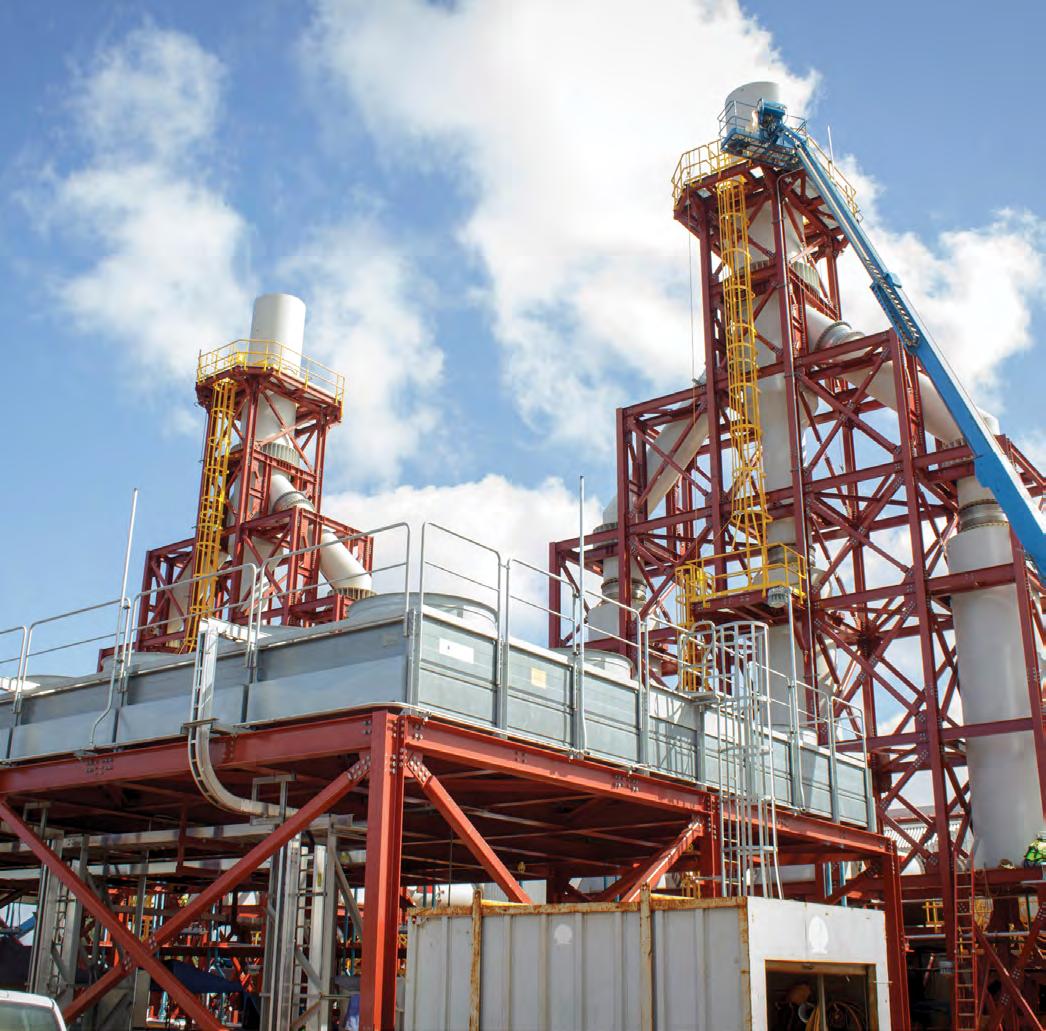
Adding hundreds of megawatts of renewable energy to our system and retiring fossil fuel-based generation to reduce carbon emissions, increase energy independence and promote customer bill stability
Incorporating battery storage to help integrate increasing amounts of intermittent renewable energy such as solar or wind resources
Creating opportunities for customers to benefit from and participate in the clean energy transition by providing programs and rate structures to integrate customer-owned distributed energy resources (DERs)
Expanding access to clean energy benefits through our community based renewable energy (community solar) program, enabling customers without the ability to add private rooftop solar, as well as qualified low- to moderateincome (LMI) customers, to participate in the clean energy transition and benefit from bill credits
Enabling the use of customer DERs to provide grid services, supporting reliable grid operations and responding to variability in electricity supply and demand
Advancing opportunities to electrify the state’s economy, including the transportation sector and thus reducing Hawai‘i’s overall carbon emissions; this includes deploying utility-owned fast chargers, proposing make-ready infrastructure to support electric buses and fleets, providing educational resources to help overcome barriers to electric vehicle adoption, and collaborating with stakeholders to further advance electrification
Modernizing our grid to facilitate increased integration of clean energy and distributed resources, greater efficiency, resilience, improved reliability and more customer options
Enhancing the resilience of our system through partnering with key customers, including the military, to develop resilient generation and microgrids that can be isolated from the grid when needed; hardening or reinforcing critical transmission circuits; locating equipment outside areas prone to flooding; and considering alternative paths for transmission circuits to increase geographic diversity
Evaluating opportunities to partner with different industries, such as agriculture, to help diversify Hawai‘i’s economy while leveraging clean energy

As businesses and consumers throughout the Hawai‘i economy work to reduce their carbon emissions and increase their resilience to climate change impacts, the bank has opportunities to finance customer investments in energy efficiency, renewable energy, storage, electric vehicles and resilience.
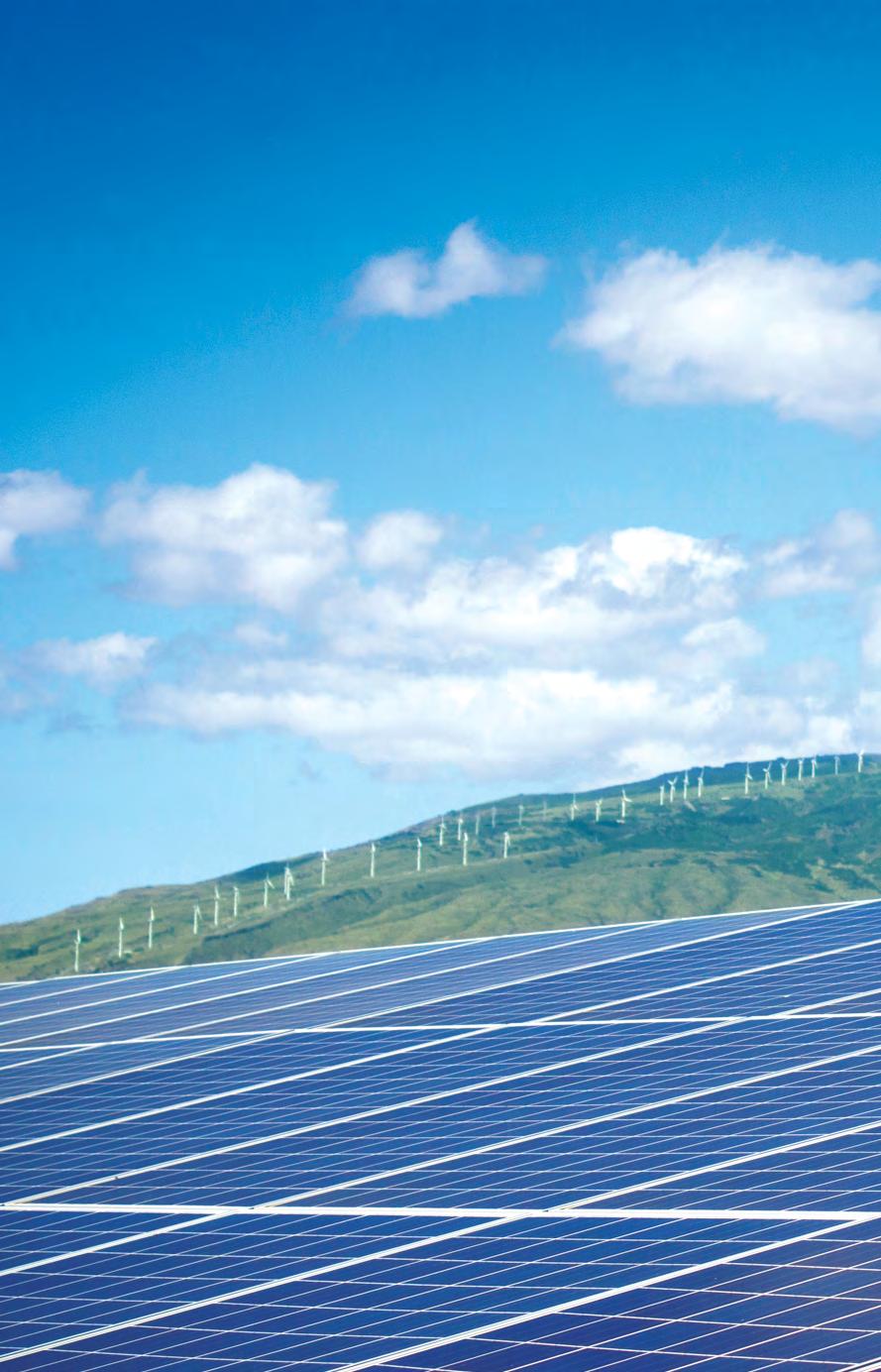
The bank also has opportunities to participate in tax credit programs, such as New Markets Tax Credits (NMTC), to help fund renewable energy and other projects in disadvantaged communities. Through a Hawai‘i-based community development entity formed in partnership with the O‘ahu Economic Development Board, the bank has helped deploy over $100 million in NMTCs and plans to apply for future allocations. These allocations help bring new investments, services and jobs to some of the most underserved, low-income communities in our state, and include direct investment in renewable energy projects as part of our state’s clean energy transition.
Climate change also presents opportunities for the bank to deepen customer relationships by offering educational resources to help them plan for climate change impacts, such as sea-level rise or increased severity of storms, to their homes and businesses.
The bank has taken significant steps to enhance the energy and water efficiency of its real estate, and has also reduced its physical footprint in recent years through back-office and branch consolidations. The bank has also incentivized employees to use low-carbon transportation options by offering a green transportation benefit. These efforts help reduce the bank’s overall carbon footprint and contribute to its cost efficiency. As the bank continues to upgrade its facilities and transition to mobile- and technology-enabled “Anytime, Anywhere Banking,” it will reduce its reliance on its physical retail branch network and have additional opportunities to increase resource efficiency.
The bank also has opportunities to finance the development of sustainable, affordable and workforce housing. Such housing can be equipped with features such as solar water heating, solar plus battery storage and efficient water and water re-use systems. These projects present the potential for the bank and Pacific Current to partner to offer these solutions.
Opportunities to invest in customer-sited and utility scale renewable energy projects supporting the transition to clean energy
Expanding deployment of EverCharge Hawai‘i charging infrastructure to provide affordable charging systems that optimize existing infrastructure
Exploring market-based business models to scale up reforestation, conservation, and carbon sequestration solutions, potentially in conjunction with renewable energy and agriculture
Partnering with water reuse and wastewater treatment technology providers to evaluate opportunities to deploy distributed wastewater treatment solutions that enable water reuse and production of renewable natural gas
In preparing for this report, we conducted a high-level scenario analysis to assess the impact on our business, strategy, and financial planning of certain climate scenarios. To inform our analysis of potential risks and opportunities, we selected one transition scenario, the International Energy Agency’s Energy Technology Perspectives (ETP) 2ºC Scenario, and one physical scenario, the Intergovernmental Panel on Climate Change’s (IPCC) Representative Concentration Pathways (RCP) 6.0.
We selected the ETP 2ºC Scenario as it (i) recognizes the importance of decarbonizing economic sectors beyond electricity to limit global temperature rise to below 2°C and (ii) highlights the role of the electricity sector in enabling broader economy decarbonization.
The ETP 2ºC Scenario assumes a transformation of energy generation and consumption to yield a broad reduction in carbon emissions across energy generation, transportation, industry, and buildings. Under this scenario, significant increases in renewable electricity generation enable decarbonization of other sectors. As more companies and sectors electrify, electricity consumption is expected to grow significantly. The scenario assumes renewable energy generation, process electrification, and other technologies, such as carbon capture, utilization and storage (CCUS) and low-carbon fuels needed to effectuate carbon reductions, are commercially available or sufficiently advanced in their development lifecycle. Policymakers will have a critical role in enabling the transition, including through policies to incentivize investment in new technologies and in electrification of the transport, industry, and building sectors.
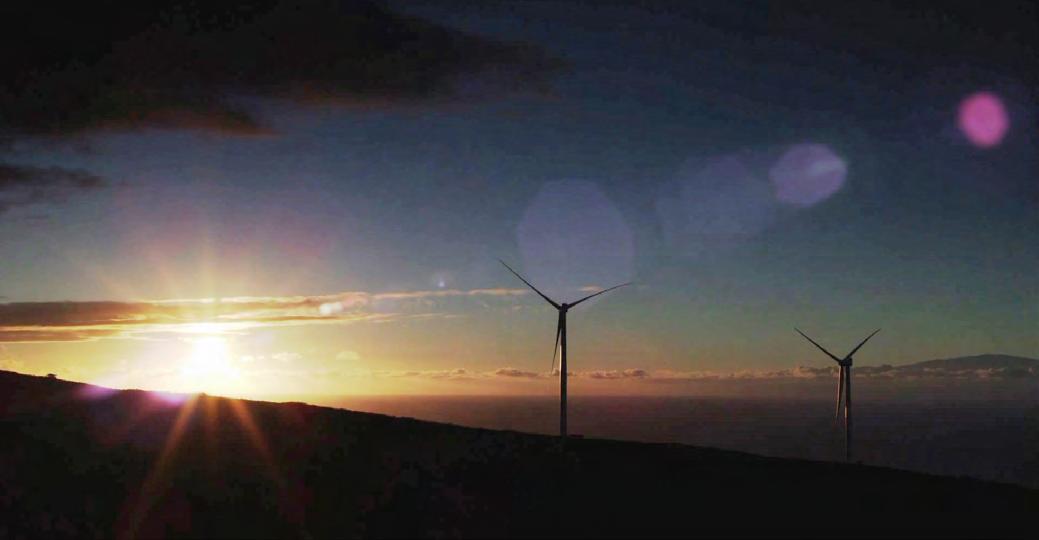
There is growing ambition among policymakers and others to limit global temperature rise to 1.5ºC. While we used a 2ºC scenario as our base transition scenario, part of the rationale for selecting the ETP scenario was its inclusion of a “Faster Innovation Case,” an accelerated version of the scenario focused on achieving a 1.5ºC target by 2050. To achieve this, the world would need to reach net-zero emissions by 2050, requiring more rapid deployment of renewable generation and faster development of solutions to electrify broader swaths of the economy.
For our companies, the transition under the Faster Innovation Case would accelerate the transition impacts described above. Such an acceleration could cause the transition to be more costly, as it would leave less time for technologies to
ANALYSIS
ETP 2ºC Scenario
Transitional Scenario
RCP 6.0 Scenario
Physical Scenario
develop / improve and for technology costs to decline. It could also exacerbate land use and other trade-off challenges for Hawai‘i, as an accelerated timeframe would leave less time for our communities and state policies to resolve such issues.
Key transition impacts under the ETP 2ºC Scenario are:
Increase in beneficial electrification. Electrification of transportation and other sectors would drive increased electricity demand. For our utility, this would require procurement and/or construction of more renewable energy generation to meet RPS and decarbonization targets, as well as infrastructure investment (such as make-ready infrastructure for electric vehicle charging) and upgrades to the transmission and distribution system. Increased electrification would enable the cost of such investments to be spread across a larger base, and thus would be expected to reduce the per-unit cost of electricity for customers. However, greater generation needs could further pressure land use issues on O‘ahu (e.g., due to limited availability of land appropriate for siting utility-scale renewable energy projects), making large-scale projects challenging.
Toward a platform business model. Increased reliance on electricity across other economic sectors would be expected to stimulate more demand for energy efficiency solutions as well as tools to manage and optimize energy usage. Customers are expected to play a more active role in energy generation and in providing services to the grid, driving further growth in DERs and increasing the need for a sophisticated grid and customer programs to integrate and optimize such resources. The role of the utility may evolve to a platform or marketplace that provides and manages a range of customer DERs and services from third-party service providers.
Opportunities to finance the clean energy transition. Our bank would be expected to see greater demand for financing solutions from retail and commercial customers to acquire and install distributed generation and storage assets, invest in energy efficiency and vehicle electrification and pursue other carbon reduction solutions, such as CCUs.
Affordable/workforce housing and sustainable investment. The bank would also be expected to see greater demand for financing solutions to develop and deliver more affordable, sustainable and energy-efficient housing options. Pacific Current is well-positioned to contribute to this effort by providing renewable energy projects and energy- and water-efficient solutions to make the cost of living in these homes more affordable.
Investment in customer relationships. The changing energy landscape creates opportunities for new customer segments and service offerings. Expanded customer relationships may require additional investments by our utility to adapt to evolving customer expectations. Our bank may also need to invest in additional customer analytics and marketing to develop and deploy new banking products and services for customers investing in clean energy, efficiency and resilience measures.
Creation of new jobs and employment opportunities. The transition to a low-carbon economy and the corresponding evolving role of the utility to a more technology-enabled delivery model will require increased technological skills within our utility workforce. These changes are likely to be similar at the bank, as customers increasingly expect technology-enabled banking solutions.
The changing energy landscape creates opportunities for new customer segments and service offerings.”
For our physical scenario we selected the RCP 6.0 Scenario. This scenario assumes a moderate approach to developing and integrating low-carbon solutions in the global economy. Under this scenario, global mean surface temperature is forecast to increase by 0.8 to 1.8ºC by mid-century and could increase up to 3.1ºC by 2100, leading to a range of climate impacts. Honolulu Climate Change Commission models indicate Hawai‘i could experience sea-level rise of 1 to 2 feet in the coming decades and as much as 3.2 feet by the end of the century. Increased temperatures and sea levels can lead to higher, more frequent storm surges, increased coastal flooding and erosion, increased inland flooding, more frequent periods of extreme heat and increased storm intensity and frequency.
Key physical impacts under the RCP 6.0 Scenario are:
Physical ramifications of climate change. Climate change could impact our utility’s physical assets, increase operational disruptions and negatively affect our customers. This would require further investments to “harden” our system, ensure sufficient geographic distribution of generation and transmission assets to enhance reliability and protect against safety risks to employees and customers. Investments to protect against/adapt to climate change physical impacts in advance are more cost effective than addressing those impacts after they occur.1
Lending zone shrinkage at the bank. For our bank these physical impacts necessitate appropriate risk mitigation steps to avoid valuation impacts to loan portfolio collateral. The bank monitors such risks and has identified risk mitigation steps to be implemented if and when needed. As climate-related impacts continue to intensify, the bank may need to cease lending in certain at-risk parts of the islands.
Potential impact on tourism and state economy. Warmer temperatures, sea-level rise, increased flooding and coastal erosion, and greater frequency of severe weather could adversely impact Hawai‘i’s appeal as a place to live and visit. Our success is closely tied to the health of Hawai‘i’s economy, and a decline in tourism and/or rise in Hawai‘i residents permanently leaving the islands could reduce our customer base or impact customers’ financial health.
While our utility regularly conducts scenario analysis for long-range planning and other purposes, this is the first year that we have conducted scenario analysis in line with TCFD. We have developed an internal roadmap to enhance our future TCFD scenario analysis, including by aligning it with our utility’s IGP process. Going forward we may also consider expanding our assessments to include additional scenarios.
...models indicate that Hawai‘i could experience sea-level rise of 1 to 2 feet in the coming decades and as much as 3.2 feet by the end of the century.”

HEI tracks a range of metrics to assess, monitor, and inform our actions to manage climate-related matters. Several of these metrics are reported in other sections of this report. For the utility our current primary climate-related metrics are carbon and other GHG emissions (see pages 104 to 107), RPS performance (see page 49) and system reliability performance (see pages 115 to 117). For the bank, key climate-related metrics relate to sea-level rise, including the number and value of mortgage loans in the 100-year flood zone (see page 127) as well as internally monitored indicators of potential future shifts in Hawai‘i property market values. As we continue to mature our analyses of climate-related risks and opportunities we may refine and/or expand the metrics we track and report.
We have aligned our efforts with Hawai‘i’s state RPS and carbon neutral to carbon negative economy goals. When the 100% RPS goal was established, we conducted long-range planning to identify paths to get there even faster. We published those longrange plans and a five-year action plan to guide near-term efforts in our Power Supply Improvement Plan (PSIP). Since then we’ve accelerated our renewable energy procurement efforts beyond what was outlined in the PSIP. As a company and management team we’re incentivized to continue our efforts to outperform the RPS milestones in both magnitude and timeframe.
Our targets focus on increasing our utility’s renewable energy usage and electrifying other economic sectors that currently rely on fossil fuel and carbon-intensive energy resources with renewable energy. Achieving these goals will result in a more rapid decarbonization of Hawai‘i’s economy.
RPS represents the percentage of electricity sales that are satisfied with renewable energy. Hawai‘i set a goal of 100% RPS by 2045, with interim RPS milestones of 30% by 2020, 40% by 2030 and 70% by 2040. Hawaiian Electric achieved a 35% RPS in 2020, exceeding the state milestone. While some of that outperformance was driven by lower electric sales in 2020 (due to COVID-19 impacts on the state economy), had sales been the same as in 2019 Hawaiian Electric would have achieved an RPS of 32%, still exceeding the milestone. Hawaiian Electric reports its RPS progress quarterly via its website
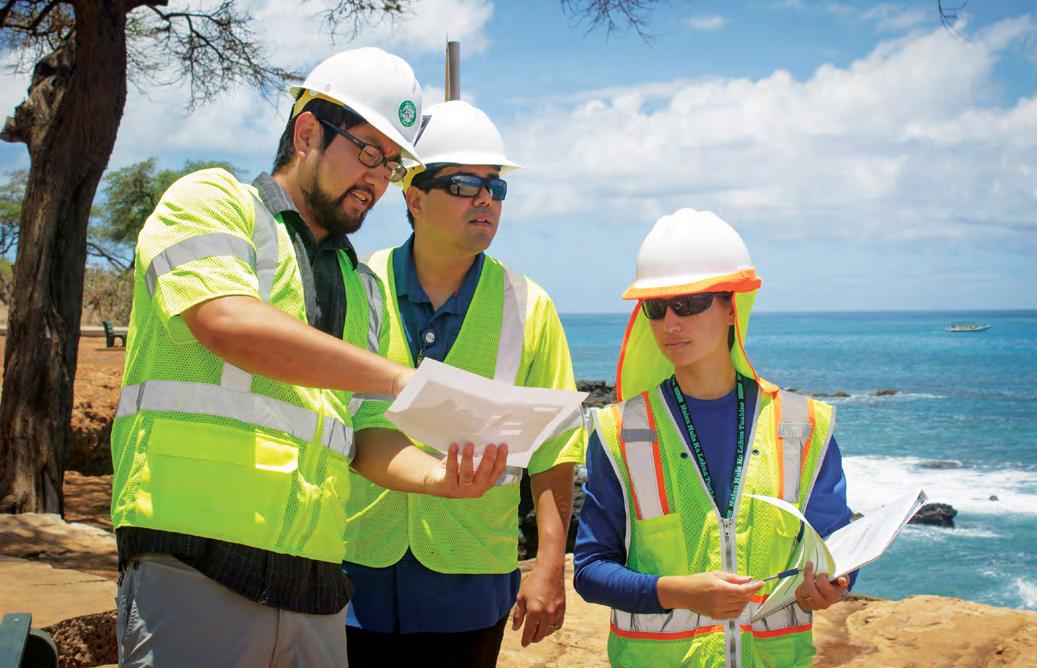
Hawaiian Electric has several financial incentives to outperform Hawai‘i’s statutory RPS goals:
Should Hawaiian Electric fall short of a statutory RPS milestone, it could be subject to a penalty of $20 for each MWh that it is deficient. (The penalty may be reduced if the shortfall is due to circumstances outside the utility’s reasonable control.)
As part of its December 2020 PBR decision, the Public Utilities Commission (PUC) established the RPS-A performance incentive to promote accelerated RPS achievement. The utility is eligible to earn a reward of $20/MWh in 2021-22, $15/MWh in 2023 and $10/MWh in 2024 and beyond should it outperform the RPS-A target each year. The RPS-A is more challenging to achieve than the statutory RPS calculation because RPS-A measures renewable generation as a percentage of total generation (rather than as a percentage of sales, like the statutory RPS calculation). The annual RPS-A targets are an interpolation of the RPS goals for 2020, 2030, 2040 and 2045 (see summary of Statutory RPS versus RPS-A below).
In 2020 the Compensation Committee of the Board established a compensation incentive for HEI and utility executives to encourage outperformance of the statutory RPS milestones. For the 2020-22 and 2021-23 periods, 20% of such executives’ long-term incentive pay is tied to RPS performance. The goals are structured to encourage executives to work toward achieving higher RPS levels well ahead of statutory requirements. Executives could earn incentive amounts for RPS achievement at the following levels:
Transportation is responsible for over half of Hawai‘i’s energy sector GHG emissions. As described on page 52, Hawaiian Electric is undertaking a number of actions to advance vehicle electrification to help decarbonize our state’s economy. To lead by example, the utility established a goal to electrify 100% of its fleet of more than 400 light duty vehicles by 2035.
In 2021 the Board Compensation Committee established an electrification goal as part of HEI and Hawaiian Electric executives’ annual performance incentive. A portion of such executives’ pay is linked to maintaining or increasing electric vehicle (EV) kWh sales and other revenue versus a 2020 baseline:
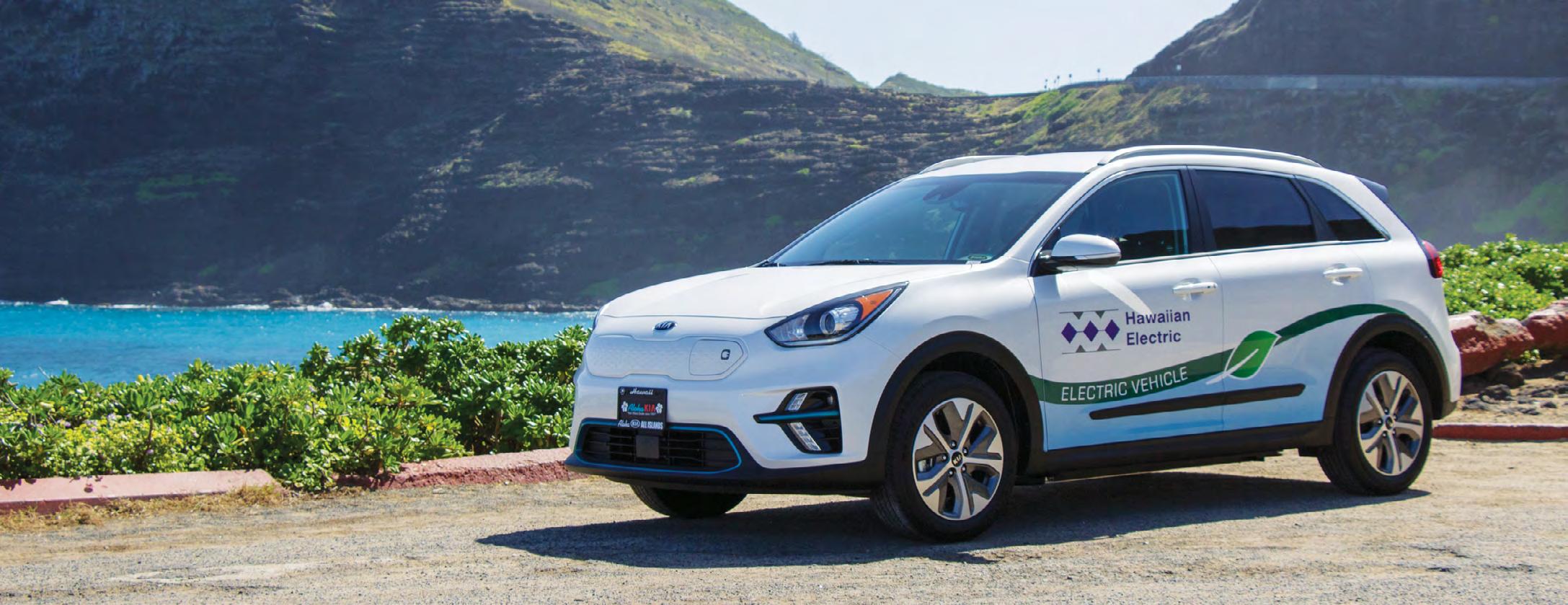
As part of PBR, the PUC established several new Performance Incentive Mechanisms (PIMs) designed to incentivize the utility to achieve goals to advance an equitable, affordable clean energy transition. In addition to the RPS-A PIM described above, these include PIMs to incentivize faster interconnection of distributed energy resources (DERs), acquisition of grid services through DERs, collaboration with Hawai‘i Energy on energy efficiency for LMI customers, and accelerated deployment of advanced meters enabled to support advanced rates and programs. As of the date of this report, details of some of these PIMs are still being developed through a post-PBR decision and order working group process.
We anticipate that additional goals and targets will be established in the future as we continue to evolve our strategies and activities for advancing decarbonization and addressing climate-related matters.
...the utility established a goal to electrify 100% of its fleet of more than 400 lightduty vehicles by 2035.”

The HEI Charitable Foundation is a longstanding part of our presence in Hawai‘i. The foundation focuses on community programs that promote environmental sustainability, community resilience, economic strength, and educational excellence. We take pride in giving back to the community through volunteerism, grants, donations, scholarships, and our employee matching gift program.
Since 2010, the HEI Foundation has contributed more than $20 million to local charities and other nonprofit organizations. Moreover, our employees donated or fundraised over $5 million, served on over 200 nonprofit boards, and volunteered more than 200,000 hours.
The HEI Foundation established the Kōkua Community Champion Service Award to honor individual employees who have demonstrated exemplary volunteer service in our communities. Each year, the Foundation also awards college scholarships to children of employees through the HEI Scholars program. HEI Scholars are chosen based on various factors, including academic achievement, community service and career goals.
We are proud of the contributions our companies continue to make to our Hawai‘i communities — from preserving our environment, to improving the economic well-being of our state, to working with individuals and families experiencing financial hardship due to COVID-19. Together, we share a vision of a stronger, thriving Hawai‘i.
To learn more about the HEI Foundation, please see our HEI Foundation Report


The COVID-19 pandemic profoundly impacted nearly every aspect of life, from livelihoods and economies to the ways we interact with each other. While 2020 brought tremendous challenge, it also brought innumerable acts of courage, generosity, dedication and ingenuity. Collectively, we rose to the challenge. The lessons we learned empower us to harness the best within ourselves to overcome obstacles and create a better future.
At the HEI family of companies, we see it as our mission to help our communities through the pandemic. We’re very proud of the commitment of our employees as we work to support our customers, protect fellow employees and help those impacted across our state.

As essential businesses, our core responsibility is being there when our customers need us. Our robust business continuity, emergency planning and incident management processes positioned us well for uninterrupted operations during COVID-19. Our utility focused on safely providing reliable electricity to keep our hospitals, businesses, and homes running. Our bank focused on ensuring money continued flowing through our economy and that federal aid reached small businesses and families.
At our utility, we implemented a number of steps to assist customers, including suspending electricity disconnections for nonpayment, offering flexible payment options and proposing to hold O‘ahu base rates flat. At the end of 2020, our utility pledged $2 million as founding sponsor of the Hawai‘i Utility Bill Assistance Program to continue supporting Hawai‘i residents financially affected by the pandemic and who fell behind on payments to electric, water, sewer and gas utilities statewide.
At our bank, by offering loan deferrals and the temporary suspension of various fees, we initiated policies to relieve customers of some of the stress that comes with loss of income. To help businesses weather the storm, in the first Paycheck Protection Program (PPP) funding round we deployed $370 million in (PPP) loans to about 4,100 small businesses employing more than 40,000 people. We’re now working on round two.
We are extremely proud that our companies and employees also made record charitable commitments of $5.5 million in 2020 — more than double our typical annual contributions — including at least $3.5 million related to COVID-19.
We are extremely proud that our companies and employees also made record charitable commitments of $5.5 million in 2020...including at least $3.5 million related to COVID-19.”
Project Footprint provides customers the knowledge and energy options they need to reduce their carbon footprint, helping Hawai‘i achieve its 100% clean energy goals, and transitioning our islands toward a more sustainable future.

Launched in 2019, Project Footprint engaged customers and rewarded them for making smart decisions about their energy use. More than 10,000 customers have joined the Project Footprint movement.
Project Footprint gained national recognition and received numerous awards for its innovative approach to customer engagement, creative messaging, and commitment to environmental sustainability.
One of the most effective ways to combat climate change is to plant a tree. In 2020, the HEI Foundation committed to planting 1,000 trees and is encouraging Project Footprint participants to have an endemic Hawaiian tree planted in their name or in the name of a loved one. Each tree is tagged with a RFID chip and GPS technology, which will enable customers to monitor and watch the tree grow online. All trees will be planted at the Project Footprint Legacy Forest by the Hawaiian Legacy Reforestation Initiative, a nonprofit that has already planted more than half a million trees.

Project Footprint also encourages customers to support, donate and volunteer at other nonprofits aligned with their mission. These community partners include Bikeshare Hawai‘i, Blue Planet, Coral Reef Alliance, Hawaiian Islands Land Trust, Institute for Climate and Peace, Kupu, Mālama Learning Center, Mālama Maunalua, Polynesian Voyaging Society, The Nature Conservancy of Hawai‘i and The Trust for Public Land.
The products of human ingenuity have caused carbon emissions to skyrocket over the last century. We believe human ingenuity also holds the key to curbing emissions, preserving our environment, and protecting our island home.

Hawaiian Electric is dedicated to serving Hawai‘i’s energy needs and caring for our environment with purpose, compassion, empathy and aloha. Our role is to empower Hawai‘i, our communities, our customers and our employees to thrive, together.

In 2008, together with the state of Hawai‘i and the U.S. Department of Energy, we embarked on what was then viewed as an extraordinary journey to use renewable resources to power 40% of our electricity needs. Since then, Hawai‘i has embarked on an even bolder expedition, seeking to power the islands with 100% renewable energy and achieve a carbon neutral to carbon negative economy by 2045. These goals aim not only to reduce carbon emissions, but to increase our energy independence, resilience and economic strength.
Hawaiian Electric has been one of the most aggressive utilities in the nation in transitioning to renewable energy and working through complex technical issues and social equity considerations to keep our system stable, reliable and affordable for all our customers.



At Hawaiian Electric we are aligned with and committed to achieving our state’s goals — 30% RPS by 2020, 40% by 2030, 70% by 2040 and 100% by 2045. And, we’re working to get there faster.
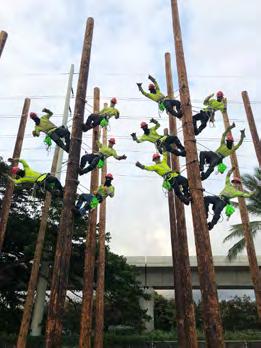
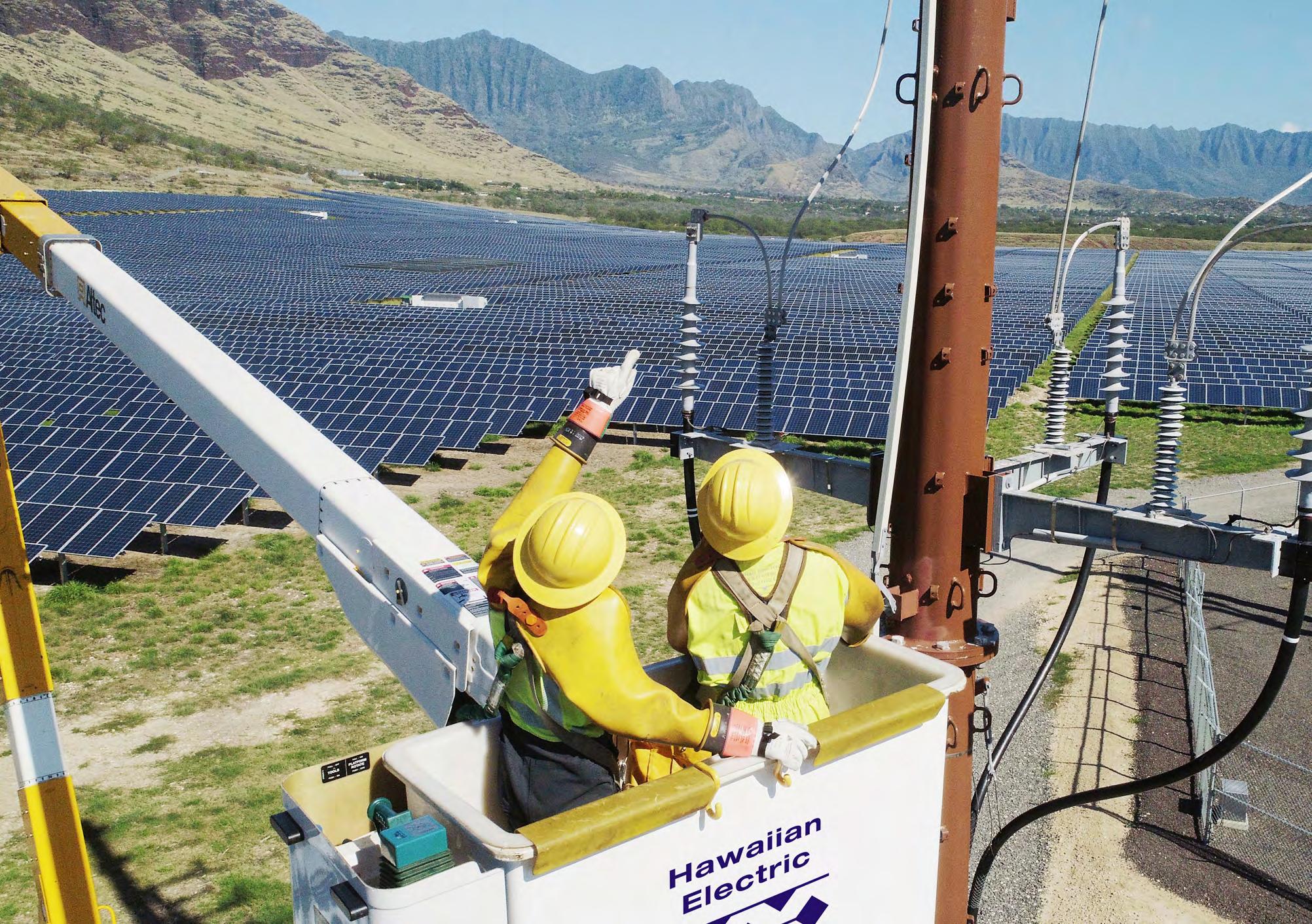
In 2020 we achieved an RPS of 35%, exceeding the 30% milestone. While some of that outperformance was due to lower electric sales due to COVID-19, had sales been the same as in 2019 we still would have exceeded the 30% milestone with an RPS of 32%. We expect to surpass the next statutory RPS goal of 40% well before 2030. Both the company and our executives have financial incentives to achieve higher levels of RPS ahead of state targets. See “Metrics and Targets” on page 39 for more detail.
We know the utility alone will not set the pace of our transition. Factors such as affordability, reliability, social equity, indigenous and cultural considerations, limited land and competing needs for that resource will play a role in how and when we reach our goals. This is why we’re working with our community and our stakeholders to ensure we achieve our state’s renewable energy goals in a way that is right for Hawai‘i.
Renewable Portfolio Standard (RPS) represents the percentage of electricity sales that is satisfied with renewable energy:
Customer investments in rooftop solar and battery storage increase renewable generation and decrease sales, leading to higher RPS.
Energy efficiency measures reduce sales and thus increase RPS.
Both the amount of renewable energy on the system and the amount of electricity sold affect the RPS result.
Factors that increase renewable generation or reduce electricity sales will cause RPS to rise. Conversely, factors that reduce renewable generation or increase electricity sales will cause RPS to decrease, or affect the timing in which we achieve our RPS goals.
43.4% 30.5% 50.8%
Greater adoption of electric vehicles (EVs) increases sales and thus may increase the renewable generation needed to reach RPS goals; EVs have many other benefits for customers, the electric system and decarbonization efforts.
Economic conditions can affect electricity sales; for example, COVID-19’s economic impacts reduced sales, causing RPS to increase.
Continuation of existing utility-scale renewable projects; for example, the outage of the geothermal plant on Hawai‘i Island since 2018 has reduced renewable generation.
In addition, several factors can affect when new utility-scale renewable energy projects are brought online, including:
Availability of cost-effective projects, which can be affected by many factors, including cost of financing, materials and construction
Availability of land
Our renewable generation portfolio includes a diverse range of resources, including biomass, biofuels, wind, solar, hydro, geothermal and customer-sited solar. While grid-scale renewable energy is important, our largest source of renewable generation in 2020 was customer-sited solar.
Our current generation mix reflects our progress toward increasing renewable energy, as well as the resources available to serve as our “bridge fuel” during this transition. As batteries increase in capability and decline in price, we expect to add more to our system, enabling use of solar power at night or on cloudy days. For now, we need “firm” generation to provide enough electricity to meet demand and to balance fluctuations in intermittent solar and wind energy to ensure reliability, but these sources are limited in Hawai‘i. Geothermal, an excellent firm generation source, is only currently available on Hawai‘i Island. We have few and relatively small rivers to supply hydroelectric power. Biofuel is a small part of our energy mix today, and as cost-effective biofuel becomes available at greater scale we hope to add more. By state policy, nuclear generation is not allowed and the significant investment in and timeframe needed to import liquified natural gas is discouraged since it is a fossil fuel. Thus, as we work to advance and integrate more renewables, oil is our current “bridge fuel” to provide reliability. This impacts our generation mix as well as our GHG emissions.
We are working aggressively to add more renewable energy to our system. Some of the new renewable energy facilities are owned by Hawaiian Electric, while many others are currently and are expected to continue to be developed and owned by thirdparty independent power producers (IPPs).

Our state’s policy is for the utility to create competitive procurements for the best technologies and pricing to provide energy options for our customers. We have a robust pipeline of utility-scale projects under development due to our recent renewable energy procurement efforts, the largest ever undertaken in Hawai‘i. Our online Renewable Project Status Board lists all pending renewable energy projects, how much they are anticipated to contribute to RPS, the year they are expected to come online and their current status.
Today the peak load for our entire five-island system is just over 1,600 MW. Together, projects under development or pending approval by the PUC from the two large renewable energy procurements we’ve run since 2018 have the potential to contribute an additional ~650 MW of solar and ~3 GWh of storage to our system by the end of 2023. Two of those are Hawaiian Electric self-build battery energy storage projects.
In 2014, we deactivated our 113-MW Honolulu Power Plant on O‘ahu and in 2015 we deactivated the 15.2-MW Shipman Plant on Hawai‘i Island. In September 2022, our power purchase agreement for the 180-MW coal-fired AES power plant on O‘ahu will expire, ending the use of coal for power generation in Hawai‘i. We’re also planning to deactivate our Kahului Power Plant on Maui by 2024 assuming sufficient replacement resources are online and two additional generating units at our Waiau facility on O‘ahu as soon as feasible, possibly in 2024.
Hawai‘i has abundant sun and wind resources that can be harnessed for renewable energy. However, other resources, particularly land, are scarce, and shape how we’ll achieve our renewable energy goals. Thus, to reach our goals, we need as many customers as possible to adopt rooftop solar and community-based renewable energy (CBRE), and we’re transforming our grid to enable this to happen.
Today we have among the nation’s highest percentages of rooftop solar per capita (20% of residential customers, roughly
36% of single family homes on O‘ahu). We’ve invested heavily in our grid and in programs to integrate all of this intermittent, distributed generation while maintaining the reliability our customers expect. The pace of new rooftop solar additions picked up in 2020, with 56% more installed in 2020 than in 2019. Importantly, 78% of new rooftop solar applications also have battery storage. This allows daytime excess solar production to be used to reduce fossil-based power at night. We’re continually working to increase participation and make the interconnection process easier for customers. We’ve launched our new Quick Connect program to enable customers to interconnect their rooftop solar faster. We’re also pursuing grid services procurements to seek aggregations of customer rooftop solar, storage and other customer-sited resources to provide a range of services to the broader system.
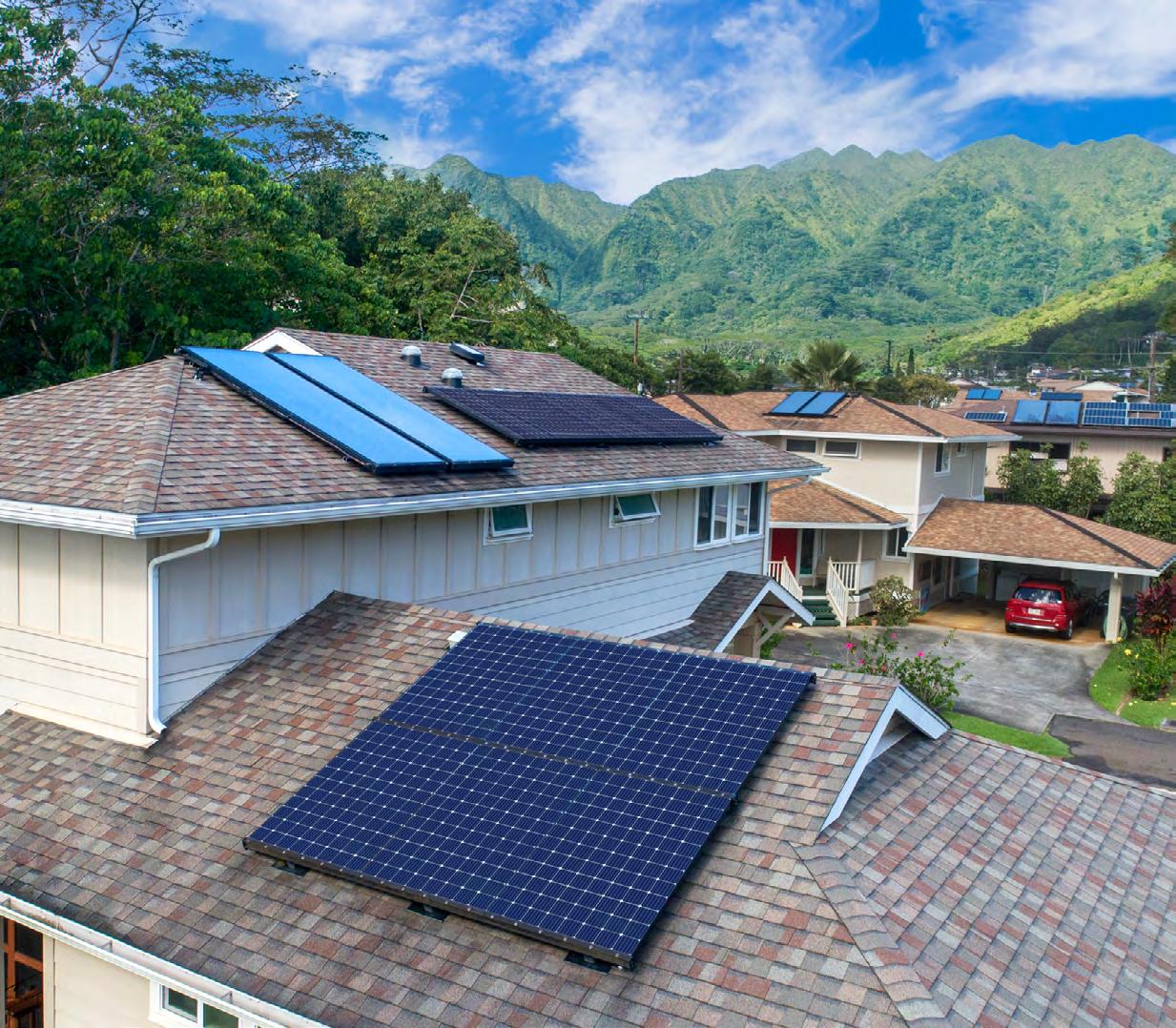
One way we’re promoting equity is by developing programs for all customers to benefit from renewable energy, not just those who own their home and can afford to purchase their own rooftop solar system. In 2020, the PUC approved the second phase of our CBRE program, enabling up to 235 MW of renewable generation across our service territory. This new phase of CBRE will enable us to extend the benefits of clean energy to a wider range of residents, with priority to those who have been underrepresented in solar adoption, such as renters and customers with low-to-moderate incomes. In addition to private companies, Hawaiian Electric will be able to develop projects and recruit subscribers.
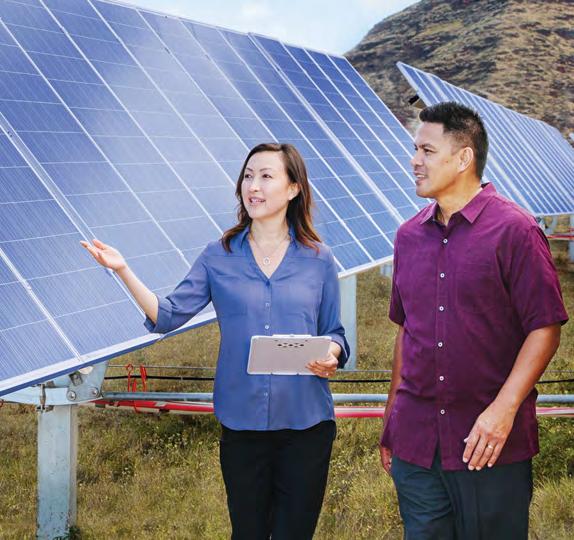
Transportation (ground, air and marine) is responsible for over half of Hawai‘i’s energy sector GHG emissions, with ground transportation accounting for the largest portion of transportation emissions.1 Increased renewable energy on our system and the growing market demand for electric vehicles (EVs) allows us to help decarbonize this sector. Hawai‘i has among the highest per capita rates of EVs in the country at 1.4 EVs per 100 passenger vehicles,2 which we expect to increase by at least 700% over the next 10 years.3
Electric transportation creates benefits for all customers by putting downward pressure on rates. This beneficial electrification spreads the cost of grid investments over more kilowatthours, reducing the per unit cost for everyone, and can be designed to provide grid services.
In 2016, we were founding partners of Drive Electric Hawai‘i, a coalition of public, private and nonprofit partners to promote transportation electrification. Hawaiian Electric’s 2017 EoT Strategic Roadmap set forth our electrification strategy, which includes 10 key initiatives. These initiatives result in three customer facing programs: public charging, EV rates and make-ready infrastructure. To date, Hawaiian Electric offers a network of 25 public chargers and rates for public and electric bus charging. In 2020, we filed proposals for commercial EV rates and pilot programs to offer make-ready infrastructure that serve bus operators, multiunit dwellings, commercial fleets, workplaces and charging hubs. We are leading by example by committing to electrify 100% of our light-duty fleet vehicles by 2035. 1 Hawaii
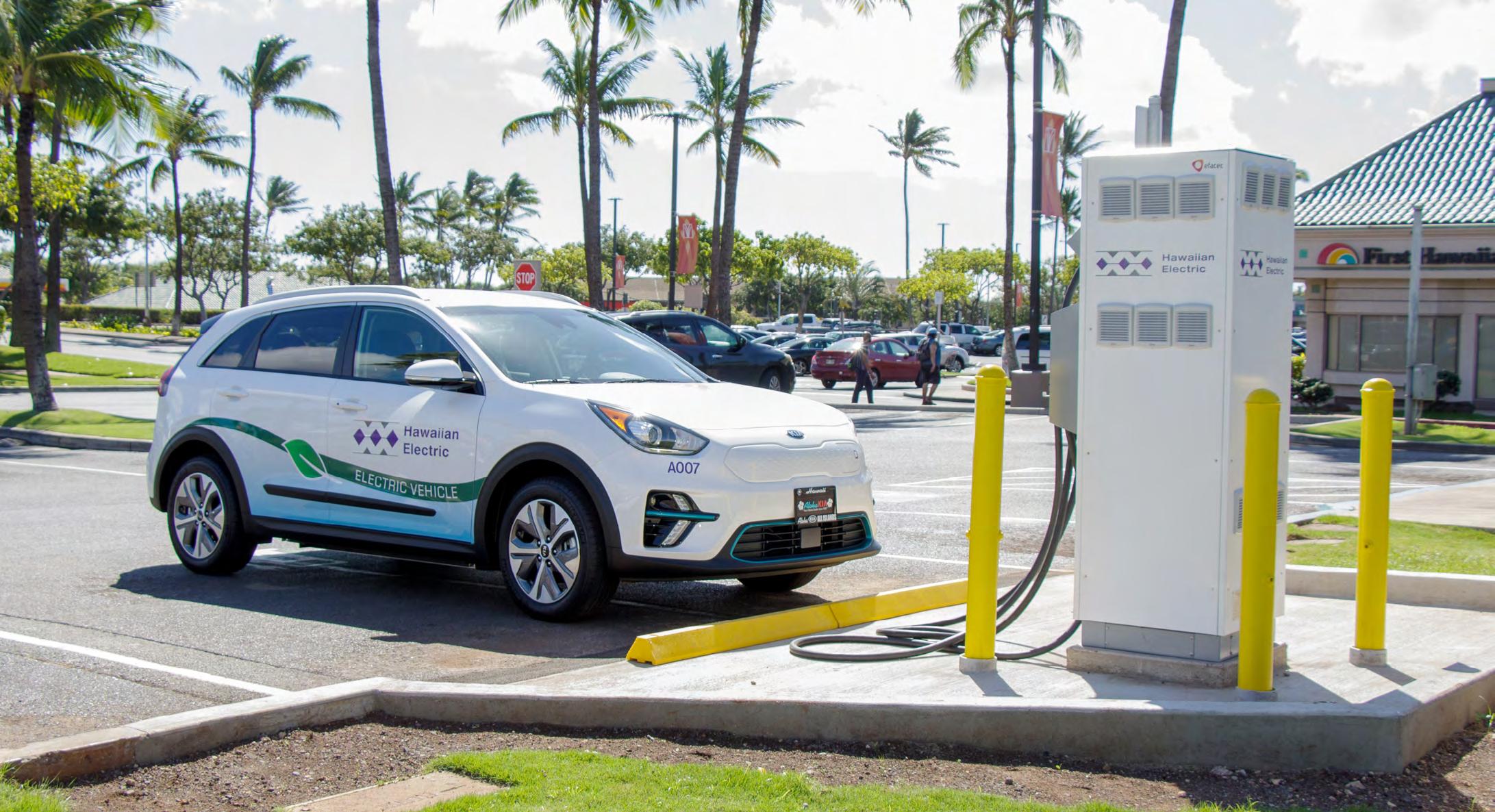
HAWAI‘I HAS AMONG THE HIGHEST PER CAPITA RATES OF ELECTRIC VEHICLES (EVs)

1.4 EVs
PER 100 REGISTERED PASSENGER VEHICLES AS OF MARCH 2021

As more renewable energy, customer-sited resources and EVs come onto our system, we need a high-tech grid to manage this multiplicity of sources and ensure reliability.
Our Grid Modernization Strategy is designed to provide benefits for customers and for overall system management, including: empowering customers with information to better manage their usage and take advantage of different rates and programs to fit their needs, reducing the number of customers impacted by outages when they occur, as smart devices will be able to section off parts of the grid as needed, and giving system operators more visibility and control to promote reliability.
We’re implementing Phase 1, which includes advanced meters to provide more insight into the grid, a system to collect and store advanced meter data, and enabling the telecommunications network. When implemented, Phase 2 will include deployment of field devices such as remote switches and line sensors to automatically respond to grid conditions, and an advanced distribution management system.
Our December 2016 Power Supply Improvement Plan (PSIP) Update outlined potential scenarios to meet or exceed the state’s renewable energy milestones. This report laid the groundwork for the renewable energy RFPs we’ve implemented since that time.
In our next phase of long-range planning we’re pursuing a fully integrated planning and procurement process called Integrated Grid Planning (IGP). This approach appraises the total needs of the system — including generation, transmission, distribution and resilience needs — and considers alternatives for meeting those needs (from customer-sited resources, independent providers and the utility), and then selects the lowest cost / best fit solution(s) to operate the grid more reliably and affordably. This process includes planning for resilience and considers potential impacts from climate change. Our IGP process includes in-depth customer and other stakeholder feedback. We filed our first IGP review status report in early 2021 to present planning work and stakeholder contributions thus far. Future resource needs assessments and solution evaluations are now underway.

Hawaiian Electric’s strategic priorities are centered on building a stronger Hawai‘i, creating customer value, and strengthening the foundation of the utility. In serving its customers and communities, Hawaiian Electric aims to build long-term value for all stakeholders. The utility intends to:
Drive Hawai‘i’s efforts to diversify the economy, create local job and investment opportunities and reimagine a sustainable and equitable future
Build a modern and resilient portfolio of clean energy assets, including firm and variable generation
Develop a workforce recognized as high-performing, safetyoriented, flexible, diverse and inclusive

Serve as a trusted energy partner by collaborating with customers to provide solutions that are sustainable, affordable, reliable and tailored to create value
Improve financial performance by maximizing efficiency and streamlining operations
The utility’s ability to thrive through evolution and disruption is ultimately determined by the value it can deliver to its customers. Operating as efficiently as possible improves our overall capabilities while driving customer and community support. Stakeholder support facilitates our ability to develop new solutions and invest in the renewable energy transformation. These areas positively reinforce one another and build a sustainable source of shared value for years to come.
The utility is pursuing a holistic decarbonization strategy to help achieve Hawai‘i’s carbon neutral to carbon negative economy goal. The company is evaluating levers beyond its priority focus on emissions reduction, including technologies around carbon removal, sequestration and offsets.
In December 2020, the PUC established performance-based regulation (PBR) for our utility, capping an over two-year process that included extensive utility involvement and stakeholder engagement. The new framework seeks to incentivize the utility to achieve environmental and social outcomes relating to energy affordability, reliability, customer equity, GHG emissions reduction, EoT and resilience.
Overall, we view the new framework as providing a balanced approach designed to provide value for customers and opportunities for the utility as we continue one of the nation’s most ambitious energy transformations. From an ESG standpoint, we view the PBR framework as providing a greater connection between our achievement of environmental and social goals and our financial performance. For example, under PBR, the utility now has financial incentives tied to performance on:
Accelerating achievement of Hawai‘i’s RPS goals
Achieving faster interconnection times for new distributed energy resources
Efficiently acquiring grid services capabilities from distributed energy resources
Collaborating to deliver energy savings for LMI customers
Effectively deploying and enabling advanced meters
The PUC and many parties involved in the PBR process recognized that the utility’s financial integrity is critical to Hawai‘i’s ability to achieve its climate goals and other societal outcomes.
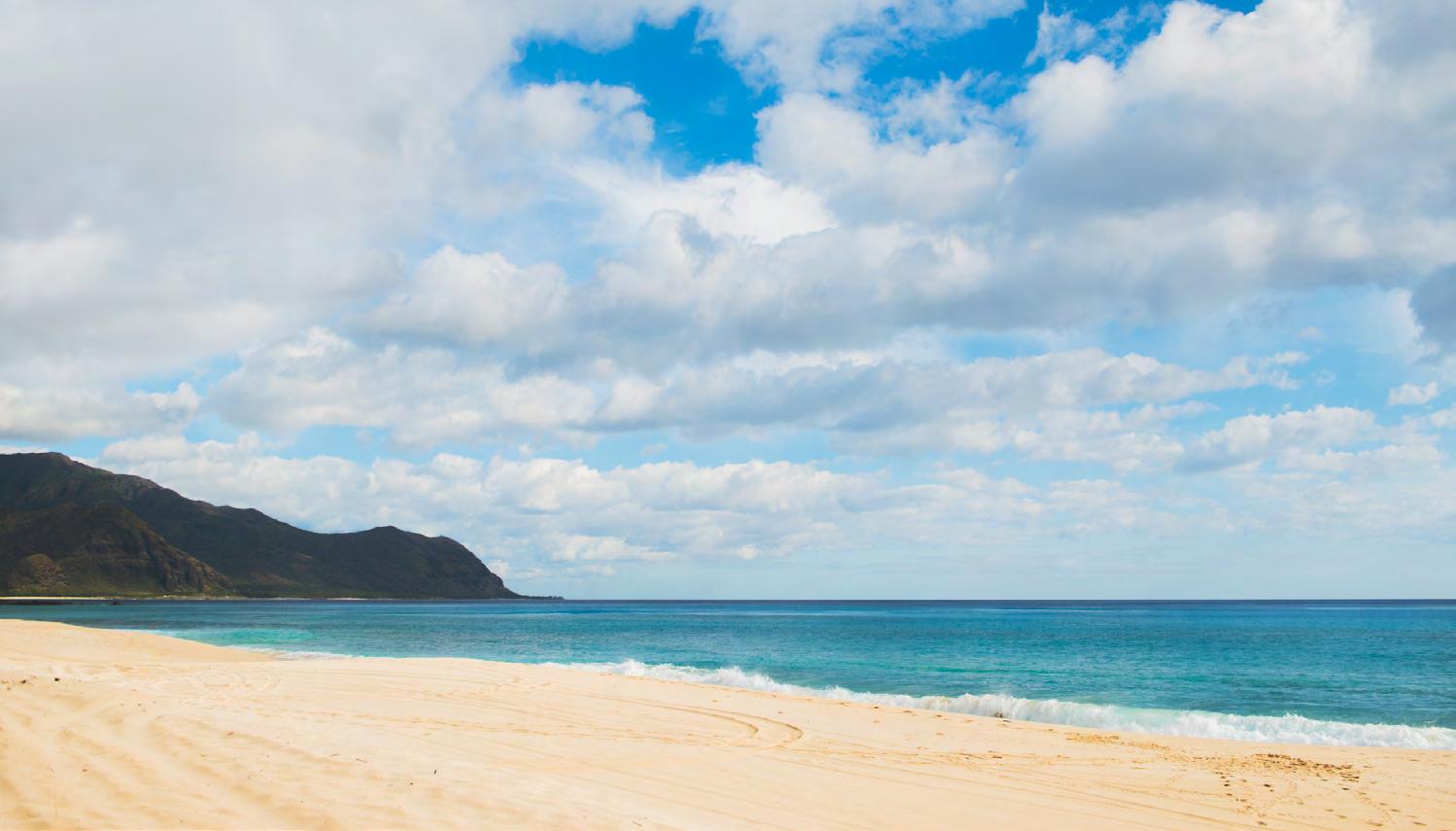
Mālama ‘Āina, to care for the land, is the traditional Hawaiian value of sustainability, a way of life that respects, conserves and protects our natural resources for future generations. At Hawaiian Electric we prioritize protecting Hawai‘i’s environment and culture as they are inherent in what makes Hawai‘i special.

More than 30 environmental professionals, including scientists, engineers, chemists and a wildlife biologist, work full-time at our utility to ensure employees and external contractors understand and comply with applicable environmental laws, regulations, permitting requirements and procedures regarding air and water quality, noise control, hazardous materials and protected species.
Critical elements of our programs include year-round risk and opportunities assessment, continuous improvement, compliance management, air and water quality monitoring and extensive training in air quality requirements, spill prevention control and countermeasures, storm water runoff, proper handling and disposal of hazardous materials and protected species awareness and protection. All contractors working at Hawaiian Electric sites are required to attend Contractor Environmental Orientation training conducted by our environmental staff.
Internal audits are conducted to verify compliance with permits, regulations and policies and support corporate risk management. Our internal audit team audits the Environmental Division at least once every three years. Audit reports are used to create Management Action Plans, ensuring high-risk items are given priority and addressed promptly. The Environmental Division also periodically audits utility facilities to identify areas for improvement.
Mālama ‘Āina, to care for the land, is the traditional Hawaiian value of sustainability, a way of life that respects, conserves and protects our natural resources for future generations.”
Our strategy for reducing GHG emissions is one and the same as our strategy for achieving our RPS goals, described earlier in “Our Decarbonization Path.” As we add more renewable energy, we’ll reduce usage of carbon-emitting sources.
As we make this transition, several factors continue to impact our GHG emissions:
By design, our transition includes integrating customer- and third-party-owned renewable resources. Thus, it’s important to look at our generation mix and our GHG emissions on a whole-of-system basis. While more renewable generation and storage resources are being developed, legacy fossil fuel-based generation, some owned by the utility and some owned by IPPs, continues to provide power to meet customer needs and backup power when the sun isn't shining and the wind isn't blowing.
Responding to fluctuations in solar and wind power means we must operate our older generation fleet differently than it was designed for, making it less efficient. This increases the intensity of GHG emissions from those units in the near term.
In addition to our state RPS goals, Hawai‘i regulations required power generators to reduce GHG emissions by at least 16% below 2010 levels by January 1, 2020, and to maintain GHG emissions below that level thereafter. For our owned generation facilities we achieved a 16% reduction in 2014 and have remained at or below that level since then. Based on preliminary data, in 2020 our GHG emissions from our owned generation facilities were 24% lower than our 2010 emissions levels.
As part of a commitment to the West O‘ahu community for the development of the Campbell Industrial Park (CIP) Generating Station, we voluntarily installed monitoring stations to measure the daily Air Quality Index in the area. Real-time data for several air quality parameters, including SO2, O3, CO, PM10, PM2.5 and NO2, are available on www.westoahuair.com
The utility includes GHG emissions analysis in its applications to the Hawai‘i PUC for project approvals. Our environmental team manages these analyses for all project applications.
Hawai‘i’s air is some of the cleanest in the nation due in part to a lack of heavy industry, relatively low population density, and a year-round temperate climate that brings abundant wind and rain to the islands. In the American Lung Association’s (ALA) 2020 State of the Air Report, Honolulu was ranked #1 on the list of Top Cleanest Cities for Year-Round Particle Pollution, with Kahului-Wailuku-Lahaina on Maui coming in at #2. Year over year, Urban Honolulu is among the cleanest U.S. cities with respect to air pollution.
Under the Clean Air Act, we're focused on maintaining compliance with key regulations including the National Ambient Air Quality Standards (NAAQS), State Ambient Air Quality Standards (SAAQS), New Source Review/Prevention of Significant Deterioration, Mercury and Air Toxics (MATS) Rule and many others.
At Hawaiian Electric, water plays a critical role in the generation of reliable, affordable power. We understand the vital need to conserve and protect our water resources, and for the most part use water from non-potable sources at our facilities. We work to minimize our environmental footprint while optimizing operational and financial performance.
We focus on managing waste streams in accordance with local, state and federal regulations. We do not have any nuclear facilities and do not have any nuclear waste.
We implemented a Hazardous Waste Minimization Plan to reduce the volume of hazardous waste generated. Our operations generate fairly low amounts of hazardous waste — in 2020, a total of 12,372 pounds, mainly from maintenance and repair projects. If hazardous waste is generated, it is placed in designated areas where it is safely stored, inventoried, and inspected for leaks while awaiting timely disposal. We hire qualified hazardous waste shipping contractors to transport the waste to EPA-permitted treatment, storage and disposal facilities.
A prime example of our waste minimization strategy is the recycling of used oil for energy recovery. Used oil is one of the highest-volume industrial wastes produced by Hawaiian Electric’s
facilities. Since the used oil has appreciable heat content, a number of our facilities are permitted to burn the used oil for energy recovery.
Hawai‘i is home to many species of plants and animals found nowhere else in the world. For centuries, these species evolved and thrived free of predators, invasive species, habitat loss, or climate change. Today, many of Hawai‘i’s native, endemic species are threatened.
Our environmental stewardship efforts serve both to protect such species and minimize risk. Our Protected Species Program, under the guidance of a wildlife biologist, proactively works to minimize potential impacts our operations may have on protected species. Elements include awareness and training, design standards and guidelines, protocols for protected species interactions, and partnerships with agencies to support predator control programs, native habitat conservation and restoration, species recovery and rehabilitation and public education.
Our Code of Conduct instructs all employees and contractors to adhere to our environmental commitment, which includes:
Maintaining a robust environmental management system, including assigned roles and responsibilities for environmental management
Monitoring our environmental performance and regular reporting on our environmental management
Ensuring environmental training for all relevant employees
Consulting with stakeholders on environmental issues
Preparing for and responding to any emergency that might impact the environment
We use a Geographic Information System (GIS) mapping system to show where known populations and historic distributions of key protected species are located. This system guides our engineers in identifying risks when planning a project, and triggers the involvement of an environmental representative if a proposed project falls within any known biological or culturally sensitive area.
Our avian protection efforts include installing bird-friendly lighting or shielded fixtures at our power plants and substations to minimize onshore lighting that could distract seabirds during their nocturnal feeding. Operations employees who may come in contact with downed birds at our facilities or job sites receive training and bird recovery kits to transport birds to a rehabilitation facility.
To protect the endangered Hawaiian Hoary Bat, or ‘ōpe‘ape‘a, we developed detection protocols, including the use of thermal imaging devices, to minimize impact on bats during the critical pupping season. No bats were detected in the species of trees trimmed during five years of data collection. We also conduct acoustic monitoring at known roosting locations to identify risks near existing or planned infrastructure.
Since the 1970s we’ve conducted marine monitoring along the Leeward shores of O‘ahu to study the effects of warm water discharge from our Kahe power plant on coral, sand movement, water temperature, and fish communities. Earlier studies demonstrated that storms in 1980 and hurricanes in 1982 and 1992 were the major sources of impact to marine communities rather than our Kahe plant operations. In the 2020 study, researchers found no significant changes that can be attributed to the Kahe plant or our newer CIP generating station.

We know the important role electricity plays in the lives of our customers and communities. From ensuring businesses and essential services can operate effectively, to providing comfort at home during the hottest of days, we work to provide power when it’s needed. We are constantly looking for ways to improve and strengthen our grid to deliver the reliability our customers expect, prepare for severe weather and other events, recover from any disruptions quickly and safely and minimize impacts to our customers.
As an island utility, we’re not connected to a large system of interconnected generation facilities like U.S. mainland utilities, nor are our individual islands interconnected. This means each island must independently provide high levels of reliability, and we must plan carefully to ensure resilience.

We continually maintain and upgrade our transmission and distribution system to ensure seamless delivery of power to our customers. Day-to-day maintenance is a key part of keeping the grid resilient. We regularly inspect our poles, lines, and other equipment, and work to replace and upgrade aging and faulty equipment before failures happen. We regularly trim the vegetation around our equipment, as many power outages during high winds and storms are due to tree branches or other vegetation falling onto power lines.
We’re working to reduce the impact of outages by adding devices to section off parts of the grid to reduce the number of customers affected by an outage. We have also completed distribution protection studies for each of the five islands we serve. We measure and report reliability performance using metrics commonly used in the electric utility industry regarding the duration and frequency of power interruptions for customers. Both the company and executives have financial incentives to promote strong reliability performance.

As we work to build a more resilient grid and add more variable generation such as solar and wind, it’s critical that we maintain grid reliability and stability. The displacement of “firm” thermal generation requires that we obtain new, non-traditional grid resources - such as solutions to provide limited duration capacity and fast frequency response - to maintain system stability. We’re in the process of acquiring these grid services (29 MW on O‘ahu, 7 MW on Maui and 6 MW on Hawai‘i Island).
In addition, battery storage can provide rapid response to unexpected events such as a sudden drop in energy production, improving reliability and reducing likelihood of outages. Our proposed 12-MW battery energy storage system (BESS) at Keāhole on Hawai‘i Island was among several projects selected under the renewable RFP procurement process. On O‘ahu, a proposed 185-MW IPP BESS project will provide 50 MW of fast frequency response, while on Maui, our proposed Waena BESS project will add 40 MW of capacity. If approved by the PUC, these projects could be operational between 2022 and 2023.
We are focused on ensuring the resilience of our system. Our efforts include:



Using advanced climate risk modeling to assess risks and inform our planning process
Deploying advanced meters and other technologies that allow us to respond more quickly to system interruptions

Exploring the use of damage prediction modeling to estimate damage from severe natural event scenarios in order to support planning and response

Evaluating new construction standards for new or replaced wood distribution poles


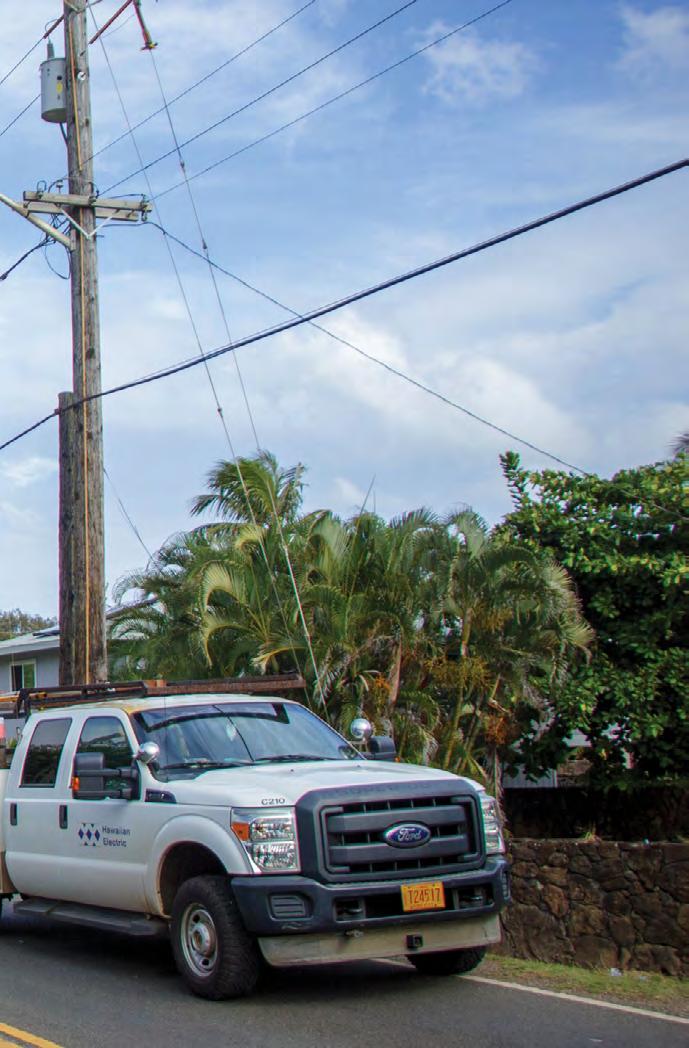
Exploring use of community microgrids and/or critical customer clusters to be able to quickly restore power to critical customers
Building more modern and efficient power plants inland, away from the coastline. An example is the Schofield Generating Station, which was completed and brought online in 2018. The biofuel-capable generating facility is located on military property inland at a higher elevation. It can be isolated to serve the military base and other critical facilities in the event of an emergency, and feeds electricity to the grid that serves all O‘ahu customers the rest of the time.
Collaborating with key partners, such as the military, to supply energy to customers during an emergency
Engaging with stakeholders to incorporate resilience needs and priorities through our Integrated Grid Planning process

Being located in the middle of the Pacific Ocean means being prepared for disasters is crucial to limit damage and hasten recovery.
We work closely with state emergency management officials and county agencies to develop disaster plans and practice disaster response. Our employees are trained to utilize FEMA’s Incident Command System as a structure for disaster response and recovery. Our Electrical Service Restoration, Cyber & Physical Security and COVID-19 Pandemic Emergency Management plans detail recovery activities for specific situations.
We maintain strong relationships with other utilities, transportation companies and contractors — both locally and nationally — to help speed recovery. We’re also a member of the Western Region Mutual Aid Group, which enables us to gain insight into best practices. These partnerships help us secure labor and/or material resources in the event of a disaster.
Our Electrical Service Restoration Plan (ESRP) outlines processes to prepare for and respond to emergencies, such as earthquakes, flooding, hurricanes and volcanic eruptions, so we can restore service to customers safely and efficiently. We conduct ESRP training annually, including practicing emergency scenarios through drills and tabletop exercises.
Where a potential outage incident is identifiable ahead of time, we inform employees, customers, mutual aid partners, and other stakeholders in advance, advise them on our preparations, and share ways customers can prepare, using a range of communications tools, including media outreach, online and social media and other means.
We have publicly disclosed our emergency outage and response times since 2015. Our emergency response time metric measures the average time it takes to respond to an emergency event, such as energized lines down, downed poles or motor vehicle accidents involving utility equipment that result in lane closures.
Our Handbook for Emergency Preparedness is designed to help customers plan for emergencies. It is available in several languages and provides information on emergency supplies, evacuation plans and how to minimize inconveniences and dangers in emergencies.
We have led a series of community resilience-based workshops for the Ko‘olaupoko region of O‘ahu, a community that receives all of its electricity from transmission lines that cross the Ko‘olau mountain range and is thus vulnerable to outages in the event of a major disaster. The workshops drew community and government leaders together in a collaborative process to identify actions to strengthen the region’s resilience. For more details on the Ko‘olaupoko Community Resilience Initiative, see page 67
Cybersecurity is consistently recognized as one of the top risks facing the electric utility industry. As digitalization of our economy increases, ensuring cybersecurity of our system and customer data is of increasing importance. We apply a disciplined risk management approach based on industry standards and best practices, prioritizing our investments and resources to protect our most critical assets and sensitive data.
We engage with local, state, and federal agencies, utility peers and experts to share threat information and best practices, perform tests and assessments and conduct cybersecurity exercises. We also participate in mutual assistance programs including the Cyber Mutual Assistance Program, the Cybersecurity Risk Information Sharing Program and the Electricity Information Sharing and Analysis Center. Our customer and community outreach efforts include awareness campaigns via television, radio, and social media. Internally, we promote a strong cybersecurity culture through email phishing tests, cyber awareness campaigns and annual training.
We continue to strengthen our protection and detection capabilities across people, processes and technology to defend our networks, our customers and our grid. The enterprise cybersecurity program prescribes a comprehensive set of management, operational and technical controls aligned to an industry-standard framework and tailored to address our unique risk profile. Controls are continuously monitored for effectiveness, with tracking of key performance indicators. These metrics are presented to the Board of Directors and the Board Audit and Risk Committee each quarter.
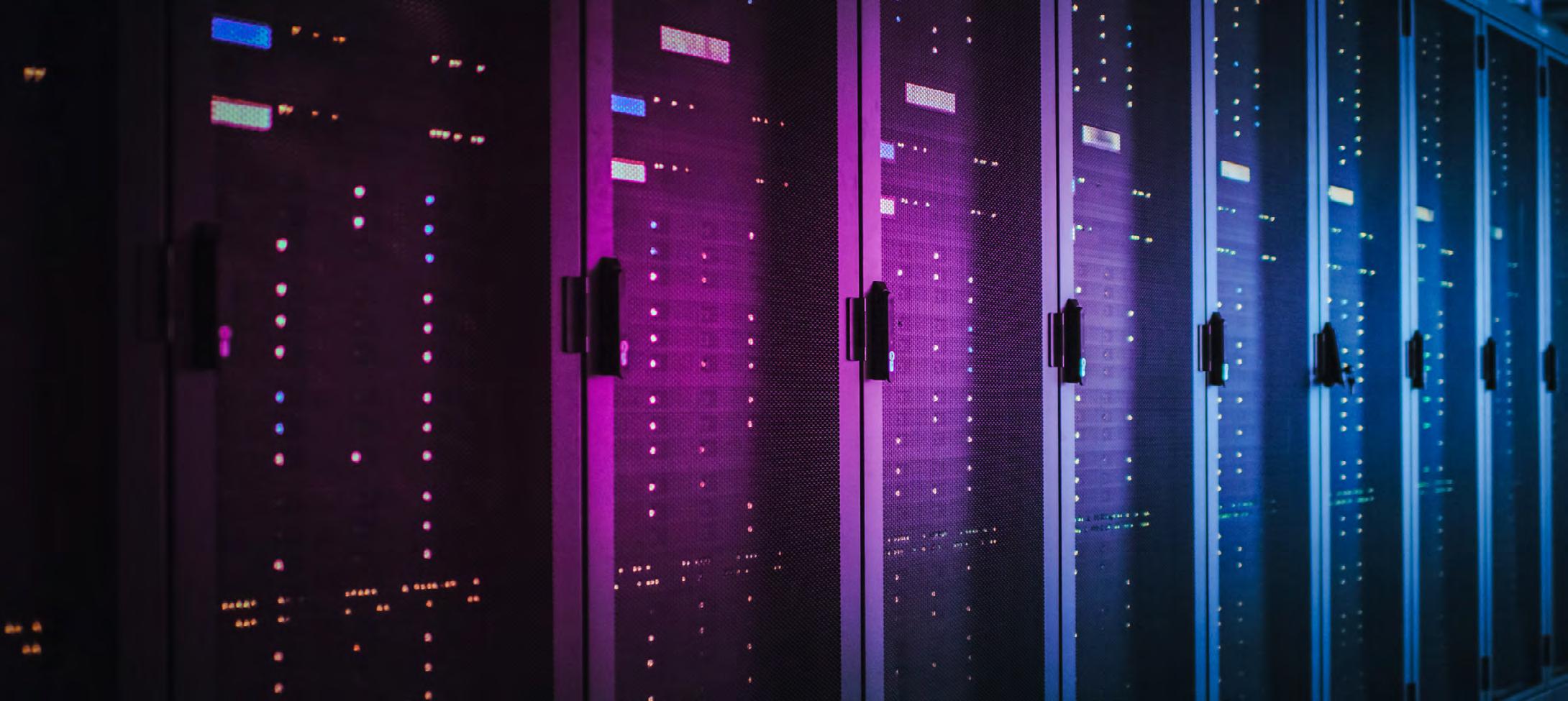
We are deeply rooted in our communities and take pride in serving our customers, our extended ‘ohana (family). Our primary customer service goal is to create positive and meaningful experiences, making it easy to do business with us. We understand that addressing the needs of our customers is key to delivering value, and our strategy relies on continuous evaluation and improvement so we can evolve as a customer-centric, community-focused organization.
Energy affordability is a key priority for us given the high cost of living in our state. With limited land, real estate values are high. Almost all materials and goods must be shipped into the state. These factors increase the cost of everything from housing to groceries. According to the U.S. Bureau of Economic Analysis, in 2019 Hawai‘i had the country’s highest “all items regional price parity,” a measure of cost of living that reflects the price of goods and services, such as food, transportation and education, as well as housing rents, compared to a national baseline price level.
Electricity prices in Hawai‘i are among the highest in the nation,4 due in part to the cost of imported oil used to power many of the islands' generators. In 2020, fuel and purchased energy costs comprised approximately 40% of a typical residential customer bill on O‘ahu, and fuel costs fluctuate significantly depending on international oil market prices. Our isolated geographic location also contributes to the higher cost of electricity. Each island grid must operate a standalone system, unable to draw power from other islands or the mainland if needed. As such, system reliability requires that we have reserve generating capacity and multiple distribution routes.

We are deeply rooted in our communities and take pride in serving our customers, our extended ‘ohana (family).”
We’re striving to be a highly efficient utility. Our new PBR framework includes strong incentives for cost efficiency. In addition, in recognition of the financial challenges our customers faced due to the COVID-19 pandemic, in 2020 we proposed, and the PUC approved, holding base rates flat in our O‘ahu 2020 rate case. In connection with a management audit conducted as part of the rate case, we committed to ramp up to $25 million in annual savings by year-end 2022. In 2021 we agreed to an acceleration of these audit savings, with $6.6 million to be delivered to customers per year from 2021-25.
To offset the lack of a base rate increase, achieve our customer savings commitment and operate within the PBR structure, we’re implementing plans to reduce costs through improved planning and scheduling of work leading to reduced overtime, managing the size of our workforce, continuing our process improvement initiatives, strategic sourcing of goods and services and reducing our office footprint. In 2020 our efforts resulted in significant customer savings, including $7 million in operations and maintenance savings. We also achieved the savings we committed to deliver to customers in connection with our Enterprise Resource Planning (ERP) system.
Substituting fixed-price, lower-cost renewable energy resources for fossil fuel-based generation is the best opportunity to provide customers with lower and more stable electric rates. This renewable energy transition can also drive savings in other sectors (e.g., lowering costs of operating electric vehicles).
We continue to innovate new contracting mechanisms that reduce costs for developers, helping lower costs for customers and facilitating attainment of our RPS goals. We developed a new model power purchase agreement, the Renewable Dispatchable Generation Power Purchase Agreement (“RDG PPA”), which enables the utility to dispatch variable renewable projects to match the needs of the grid. In exchange for making the facility dispatchable, project owners receive a fixed monthly payment. This predictable income stream reduces
financing costs for developers and results in lower prices for our customers. Our recent renewable procurements have yielded project pricing with an average price of 10 cents per kWh for solar plus storage projects, below the cost of utility oil-fired generation. The RDG PPA has been cited as a “game changer.”5
The company offers a range of programs to assist customers in managing their energy use and bills:
LIHEAP (Low Income Home Energy Assistance Program) that provides qualifying low-income households a one-time credit to offset energy costs. As part of this program, in 2020 we helped more than 8,000 families receive $3.9 million in energy assistance.
The Hawai‘i Green Infrastructure Authority (HGIA) Green Energy Money $aver (GEM$) On-Bill Program helps customers reduce electricity costs by installing energy improvements such as rooftop solar, solar hot water systems and/or commercial energy efficiency retrofits, which are repaid through the customer's electric bill.
The Special Medical Needs program is designed to provide reduced electricity rates for qualified customers who are dependent on life-support equipment used in their homes and/or have increased heating and cooling needs due to their medical conditions.
We also partner with nonprofits who provide utility payment assistance and connect our customers with nonprofits for help.
In light of the economic impact COVID-19 has had on our customers:
We voluntarily suspended disconnections for nonpayment beginning in March 2020; the PUC has extended disconnection suspensions for all utilities in Hawai‘i through end of May 2021.
We’re offering flexible payment arrangements and helping customers access public assistance, including federal stimulus programs, to help reduce their outstanding balance.
We were the founding sponsor of a program to help families throughout the state struggling from the impacts of the pandemic pay bills for electric, water, sewer and gas utilities.
In the past, electricity generation took place only at large-scale, centralized power plants. Distributed energy resources, or DER, refers to smaller generators and storage devices located throughout the energy grid, such as rooftop solar on customers’ homes and businesses, customer-sited energy storage, electric vehicles that store and use electricity, and demand response devices like grid-interactive water heaters, which can be turned off during system peak usage.
Our DER strategy is anchored by 3 three principles:
Need. Customer-sited distributed energy resources are essential to achieving our 100% renewable energy goal.

Opportunity. The utility must expand opportunities for costeffective distributed energy resources.
Equity. The expansion of distributed energy resources must benefit all customers.
Affordability and equity are central to our DER strategies. We’re committed to integrating distributed generation with fair pricing for all customers. With among the highest rates of rooftop solar adoption in the U.S., we have identified a critical opportunity to ensure prices remain fair as we push for further DER adoption.
We are working to ensure customers without DER are not subsidizing customers with DER. While we want to encourage DER adoption, there are valid reasons why some customers might not be able to access DER (e.g., renters, properties without appropriate roofs, upfront cost structure), and we are determined to make sure those customers are not paying more than their fair share. This means customers with DER fairly contribute to the fixed costs of operating the electric grid on which they depend, often daily, for electricity when their system is not producing, while at the same time DER customers are fairly compensated for the services they provide to the grid.
To promote fair pricing we have implemented several programs for customers who would like to offset their energy bill by investing in clean energy generation, including Customer GridSupply Plus and Smart Export (these programs compensate customers for exporting energy to the grid at prices that place less burden on non-DER customers). Net Energy Metering, which compensated customers at the full retail rate, was closed to new participants in 2015.
We’re developing new DER tariffs and programs to benefit all customers. For example, we’re expanding our CommunityBased Renewable Energy program and have proposed a rooftop rental program in which customers get paid by the utility to rent their roof for DER systems that can provide benefits to the entire system. We have procured aggregated grid services from customer DERs, which provide additional economic benefits to DER customers while providing cost-effective ancillary services that benefit all customers.
More than ever, equity is important to us. It is our obligation to provide solutions that work for all, so that everyone has access to affordable, reliable, clean energy. Solutions that work for “most” are not sufficient if they do not address the needs of those who face the challenges. Whether considering issues of project siting, rate design, or community resilience, we’re committed to leveraging Hawai‘i’s renewable transition to address societal inequities.
2 5
We are also developing advanced rate options, including costbased price signals designed to reward customers for efficient use of electricity and deployment of DERs. Our Advanced Rate Design Strategy (ARDS), submitted to the PUC in 2019, focuses on pricing and programs that enable customers to better manage their electricity use. Well-designed rates should do one or more of the following:
Promote customer engagement
Promote affordable customer bills aligned with system costs
Support low-income customer options
Advance and sustain progress on clean energy, including acquisition, integration and utilization of distributed energy resources
Support electrification of transportation
Fairly allocate costs
Reflect fair value of grid services
We strive to improve customer satisfaction by increasing service accessibility and improving customer service quality at all points of engagement.
Over the past five years we improved customer service by creating online and mobile options. Our Online Customer Service Center enables customers to pay bills, start / stop service and update their account. By the end of 2020, 24% of our customers had signed up for paperless billing. Our mobile app allows O‘ahu customers to pay bills, start / stop service, report and get updates on power outages and receive alerts. Our interactive EV charger map allows customers to find detailed information on our EV fast charging stations.
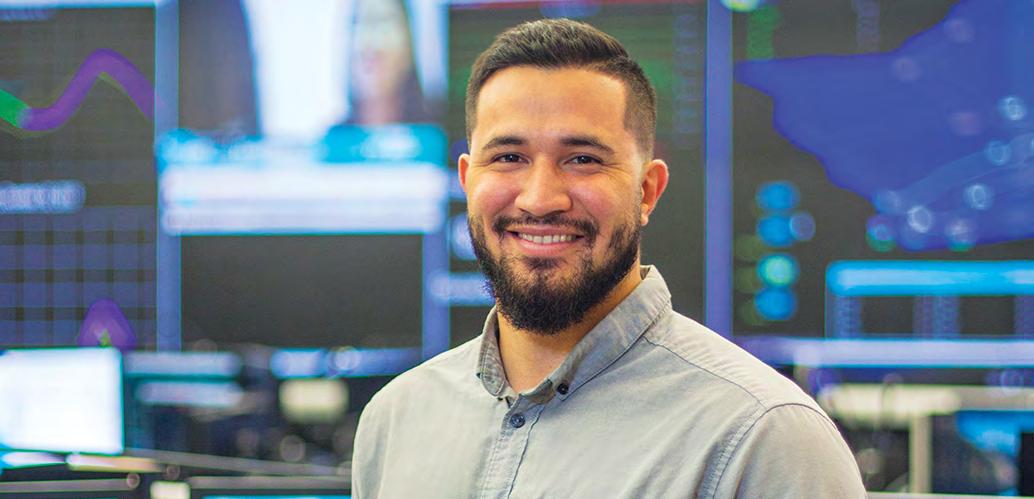
To stay in touch with our customers and their needs, we conduct quarterly residential customer satisfaction surveys, which are benchmarked against 99 other utilities across the nation.
We have made significant strides in improving customer satisfaction. Our 2020 consolidated overall satisfaction score of 74 represents a 25% increase since the start of our 2015-2020 strategic plan. We take pride in this improvement as a reflection of our customer-centered strategies.
Energy efficiency helps customers save money, reduces overall demand, may reduce the need for more generation facilities, and helps preserve our environment.
In Hawai‘i, all electric utility customers pay a public benefits fee (PBF) that funds demand-side reduction and energy efficiency initiatives. Under current Hawai‘i law, a public utility cannot administer such programs or use PBF surcharge funds. The PUC contracts a third party known as Hawai‘i Energy to administer programs that support energy efficiency, clean energy technology, demand-side management (DSM) and energy conservation services and products.
We will be safe, courteous, professional and efficient as we serve you, and earn your trust. To do so, we will: T
reat you as a member of our ‘ohana R espond promptly with respect and empathy U nderstand and listen to your needs and perspectives
S hare information clearly and concisely T ake ownership and keep our commitments
We encourage the efficient use of energy through online customer education tools. In addition, where permitted, Hawaiian Electric and Hawai‘i Energy work in partnership on projects and customer education. In its PBR decision the PUC encouraged collaboration between the utility and Hawai‘i Energy with respect to increasing low- to moderate-income customer energy efficiency, establishing a financial incentive for the utility for such collaboration. Additionally, Hawaiian Electric provides energy efficiency and ENERGY STAR® information in our customer education resources and refers customers to Hawai‘i Energy for programs and services whenever possible.
At Hawaiian Electric we participate in a range of activities to educate customers on energy efficiency, energy conservation, demand response and technologies such as advanced meters and electric vehicles. These activities help customers manage their energy usage and make informed decisions that maximize their electric bill savings. These educational initiatives are implemented through workshops, community events and informational material. We provide educational material online, via social media and in printed versions in multiple languages to reach our diverse customer base. We also help educate students by providing educators free material on basic electricity, energy conservation and efficiency, renewable energy and electrical safety.
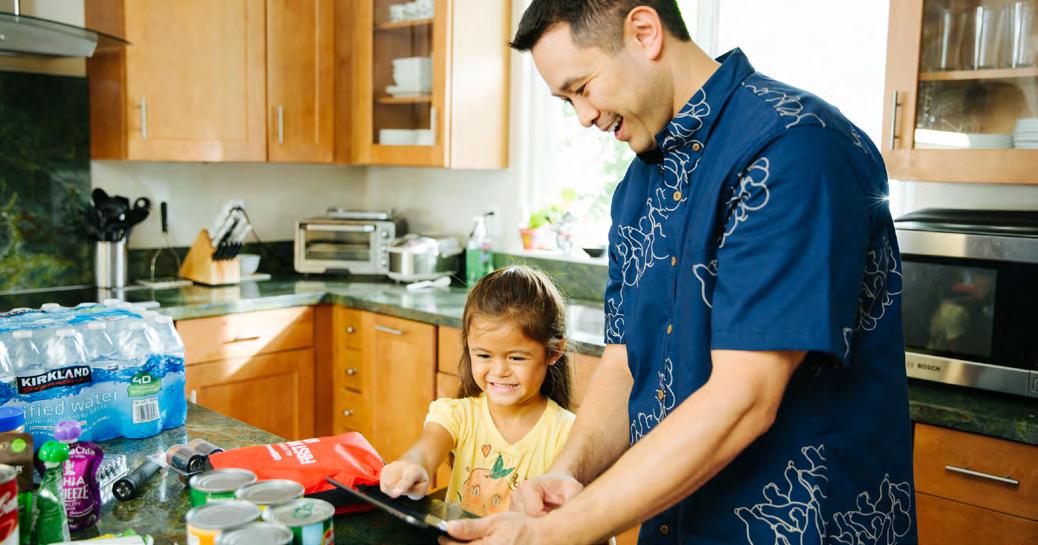
In the Hawaiian language, the word ‘ohana is used to describe family, close friends or a tightknit community. At Hawaiian Electric, we are an ‘ohana that cares for one another, for our communities and for Hawai‘i and its future. Our workforce reflects the diversity of the people and communities we serve.

Serving our customers and communities in a fair and non-discriminatory manner is not just a regulatory responsibility for Hawaiian Electric. It is pono, the moral, just and equitable way we strive to conduct our business. We have long supported nonprofits and organizations that advance the economies, well-being and health of vulnerable populations, including keiki, kūpuna (elderly) and Asset Limited, Income Constrained, Employed (ALICE®) individuals in underserved communities. As we move forward, a key objective will be to ensure equity and opportunity are foundational to everything we do, from advanced rate design to siting of projects.
As we work to achieve Hawai‘i’s clean energy goals, the Hawaiian concept of kākou is top of mind. While we play a key role in facilitating our community-wide clean energy and carbon neutral transition, it will take the actions of our whole community, kākou, to reach our renewable energy milestones and decarbonize our economy.
...it will take the actions of our whole community, kākou, to reach our renewable energy milestones and decarbonize our economy.”
Hawaiian Electric is committed to ensuring transparency and effective dialogue in every aspect of our work that affects our communities, from our core business of delivering electricity to our long-range, energy infrastructure projects. We know that engagement and collaboration can only be successful when we demonstrate a willingness to work with our communities through careful listening, thoughtful responsiveness and a commitment to embracing the environmental and cultural values of Hawai‘i. We strive to learn and adapt continually according to the needs of our communities. We work alongside community, grassroots and civic leaders, government and private sector businesses and organizations to foster our shared goal of strengthening communities to build a stronger Hawai‘i.
For nearly every significant project we conduct a risk assessment to identify relevant community, government and business stakeholders for engagement.
To build and sustain trusting relations with the communities we serve, we focus on early and meaningful communication on projects that impact our communities. Community outreach is performed at numerous stages. We have developed an adaptable engagement framework utilizing tools to enable our communities to envision the scope, goals, plans, benefits and outcomes of our projects and programs.
In our recent renewable energy and storage RFPs, we required comprehensive community engagement plans by third-party developers and evaluated the strength of those plans in determining whether to negotiate a power purchase agreement. The developers’ community outreach had to include hosting a public meeting and collecting public comments for submission to the PUC prior to signing an agreement with Hawaiian Electric. We instituted this new requirement due to community feedback; through our engagement efforts residents told us they wanted more transparency and engagement earlier in the project development process. We believe this earlier engagement will help improve the success of renewable energy projects, and thus improve our ability to collectively achieve our state’s clean energy goals.
Focused on strengthening our communities by investing in resilience and sustainability
5
Taking care of the ‘āina (land) is a top priority and responsibility for all areas of our company. This includes protecting Hawai‘i’s cultural and archaeological resources. We strive to respect the Native Hawaiian culture and reduce the risk of potential issues when working in culturally sensitive areas. We provide cultural sensitivity training to operations employees and contractors to ensure they are aware of the importance of cultural and historic site protection, can recognize potential archaeological sites and understand what to do upon encountering them.
We strive to strengthen the well-being of communities by supporting nonprofit partners and their programs. This is done through employee giving and civic projects, as well as through service projects where our employees can support community initiatives.
We work side by side with nonprofits, community and environmental groups, and educational institutions to protect the environment, advocate for equity and societal issues (e.g., homelessness and hunger), promote sustainable, healthy lifestyles and advance economic and educational opportunities. Our executive leadership is involved on the boards of key service and business organizations.
Ko‘olaupoko, a region on O‘ahu stretching along the southeast to northeast shores of the island, was identified as one of the most vulnerable communities and particularly prone to disruptions affecting electricity, communications, transportation and other life-sustaining services in the event of a major hurricane.
We convened a series of collaborative, dynamic and transparent exchanges with Ko‘olaupoko community and government leaders, emergency management agencies and critical infrastructure owners to raise awareness of and develop a holistic set of actions to build resilience throughout Ko‘olaupoko.
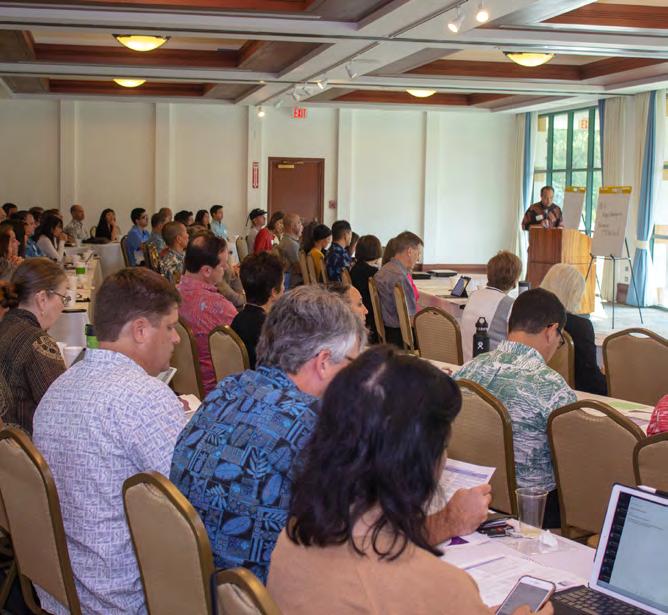
The initial forum and four subsequent workshops, held between October 2018 and October 2019, sought to stimulate community dialogue and involve participants in the process of identifying community strengths and vulnerabilities and identifying and prioritizing potential actions to increase resilience. The electric grid, emergency shelters, telecommunications network, drinking water, disaster response network, food distribution and the ahupua‘a (land division usually extending from the uplands to the sea) were identified as priority areas. Among the action items for the utility were educating the community about the electric system and the full array of generation and non-generation options for the region.
We continue to engage with the Ko‘olaupoko region through an Energy Working Group and are helping to serve as a connector between community and agencies in developing and implementing related resilience actions.
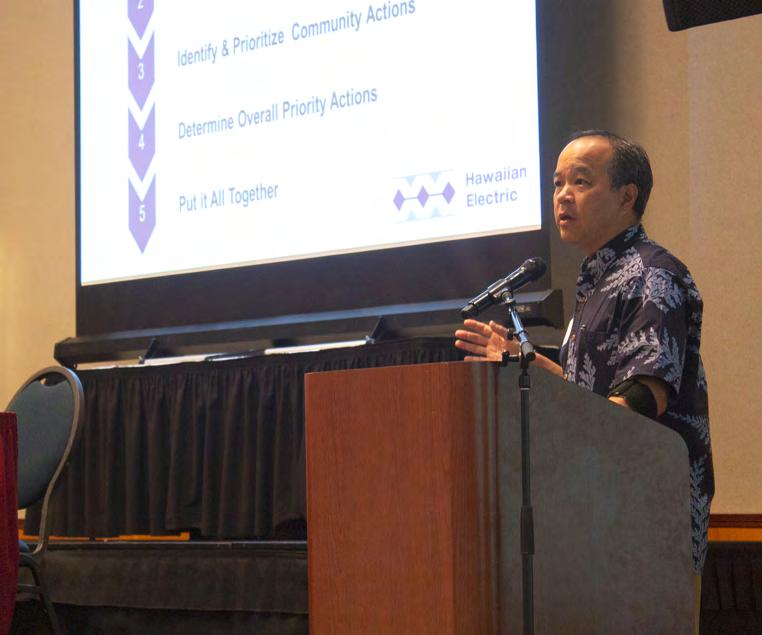
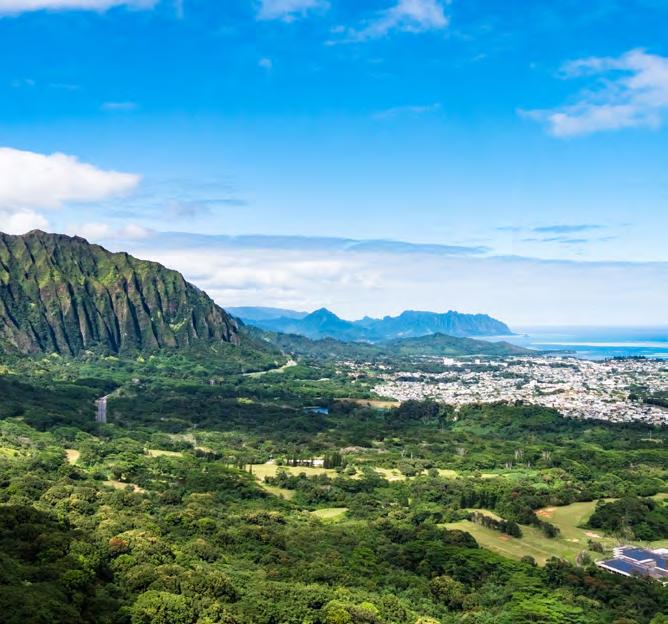
We continue to engage with the Ko‘olaupoko region through an Energy Working Group and are helping to serve as a connector between community and agencies...”
Our connection to our communities and our commitment to build a better Hawai‘i are at the heart of our community service initiatives, many of which are led by employee volunteers. We identify opportunities for collaboration through community engagement and our employees. We convene a Community Advisory Group that reviews, approves and in some cases provides funding for service projects.
Among our volunteer service projects are environmental cleanups, including ‘āina restoration to clear invasive vegetation and replant Native Hawaiian species such as kalo (taro), clearing vegetation and reinforcing structures to protect rehabilitating wildlife, rebuilding traditional Hawaiian fishponds to improve food sustainability, constructing affordable homes for local families and preparing living quarters for the homeless.
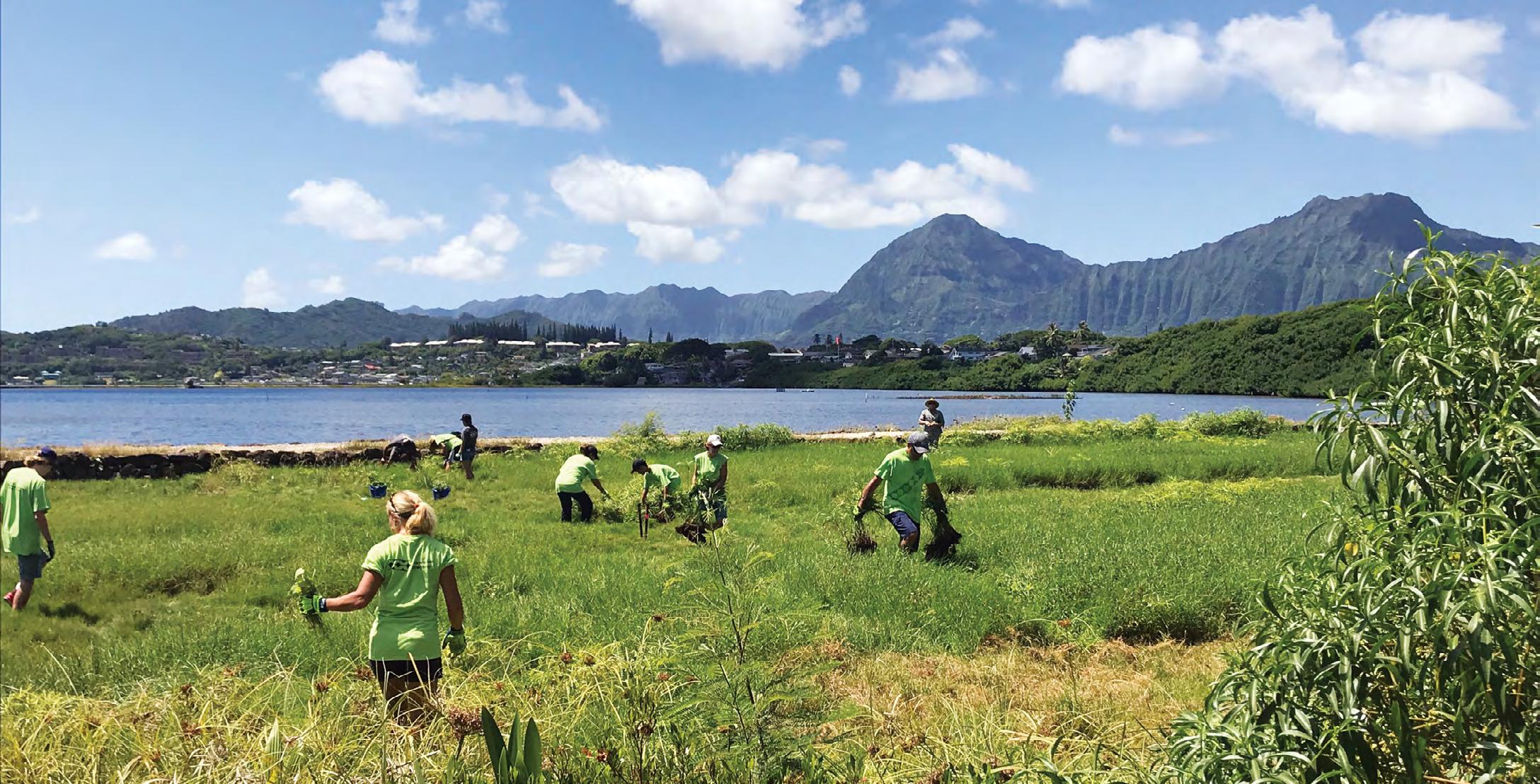
Among our long-standing traditions are the employee-led fundraising campaigns for United Way agencies to support Asset Limited, Income Constrained, Employed (ALICE®) — hardworking people with two or three jobs who struggle every month to pay for basic expenses like rent, food, child care, transportation and utilities. Funds raised through activities such as sales of cookbooks featuring employee-donated recipes, golf tournaments, online auctions, bake sales and other creative efforts support more than 300 health and human services agencies.
Our employees continued their support for our communities throughout the COVID pandemic, launching an online giving campaign to raise funds for United Way’s COVID-19 Response and Recovery Fund, creating thousands of handmade greeting cards with uplifting messages for homebound seniors, personally delivering sandwiches to the hungry and hosting a towel drive for a mobile homeless hygiene center. It is a deepened sense of kuleana, our responsibility, and caring for our community and customers that we will carry into 2021 and beyond.
1,651
VOLUNTEERS
4,205
VOLUNTEER HOURS
865
UNITS OF BLOOD/ APHERESIS DONATED
Our employees are our greatest asset in transitioning to 100% renewable energy and remaining competitive in a rapidly evolving business landscape.
Safety is among our top priorities at Hawaiian Electric. Our goal is to provide a safe and healthy work environment, where every employee makes safety a central part of his or her job.
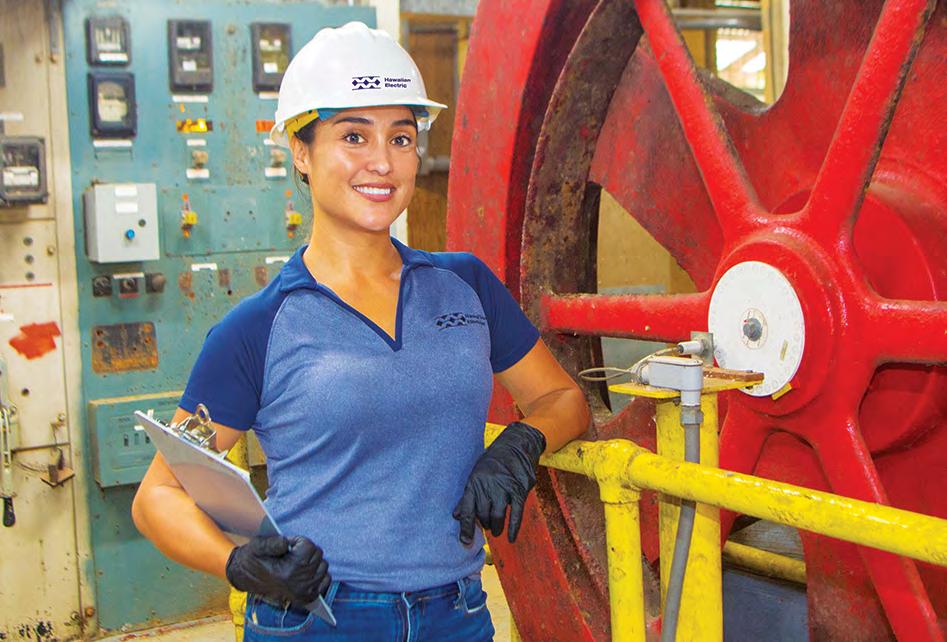
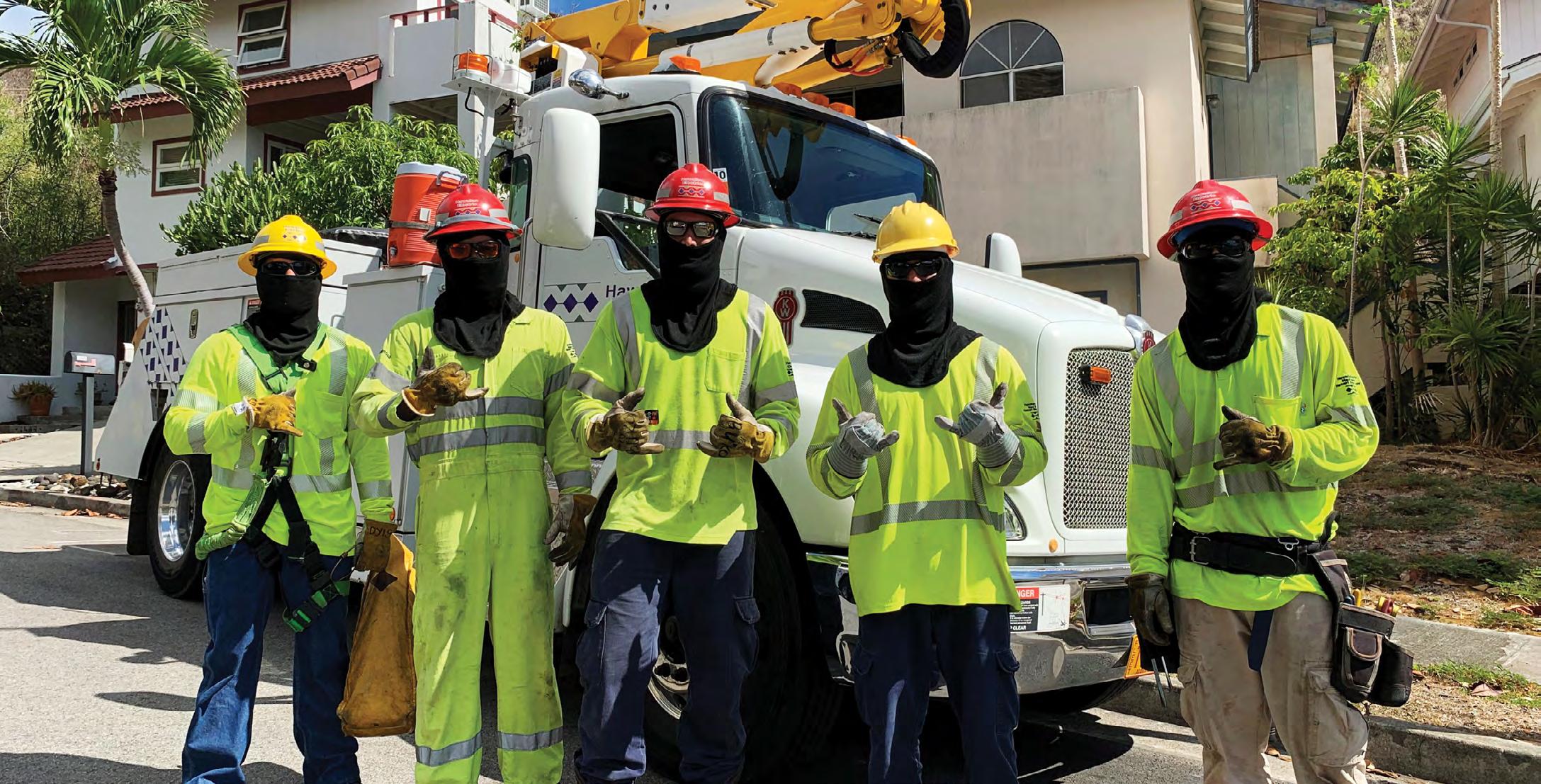
Our safety commitment is to provide and support:
Managerial responsibility for health and safety issues
Procedures for hazard identification and safety risk assessment
Operating health and safety guidelines, procedures and policies
Emergency planning and preparedness procedures
Safety performance monitoring, measurement and reporting
Internal and external health and safety audits
Our entire senior management team is committed to maintaining a strong safety culture and is responsible for:
Providing visible leadership and strategic direction for the health and safety management system and programs in their area of responsibility, helping to build and maintain a strong safety culture and drive safety improvement
Allocating adequate resources to enable implementation of safety programs
Holding leaders accountable for the implementation of safety programs and health and safety performance
Our Safety and Health Manual provides detailed safety guidelines, including commitments to ensure employees receive training and are familiar with all safety-related work practices and procedures that pertain to their job. All new employees are required to attend new employee safety training.
Contractors must comply with our Safety and Health Manual, and compliance with safety guidelines is included in contractual agreements. We require all contractors to undertake contractor orientations, including safety training, at least every two years.
Our internal audit team conducts an audit focused on safety every year.
We seek to build a safety culture that aims for zero incidents by having all employees take ownership of safety for themselves, their co-workers, contractors and the public. Our efforts include:
Investment in training programs such as SafeStart®, which offers practical techniques to keep employees aware and alert to risk. To ensure employees learn from any safety incidents, SafeStart alerts are emailed to employees after an incident with a summary of the errors that contributed to the accident and error reduction techniques that may have prevented it.
Investment in on-site first aid services to provide early care and treatment. Early care ensures prompt reporting and avoids delay in treatment and potential further aggravation to an injury.
Implementation of procedures in the field to improve safety behaviors. The Safety Observation Program targets better safety communication to mitigate risks and improve safety engagement. Safety observations provide the opportunity for employees to identify and correct hazards and communicate the problems they can’t fix. Safety observations and associated corrective actions are captured and addressed using safety management software.
Our Safety Incidents Investigation Program and Executive Incident Review Board ensure consistent procedures for investigating safety incidents. We use root cause analysis to determine where processes need to be improved and identify solutions to address breakdowns and gaps.
We evaluate our safety performance by monitoring total case incident rate (TCIR) and lost time rate (LTR). For more information, see pages 113 and 135. TCIR measures the number of workrelated injuries and illnesses per 100 employees. LTR measures occupational injuries or illnesses per 100 employees that result in an employee being unable to perform a full assigned work shift.
Executive compensation is tied to achievement of quantified severity and TCIR targets. These targets reward improvements in workplace safety, promote employee well-being, and reduce expenses.
We’re committed to building a strong culture to support the long-term success and sustainability of the utility and our workforce. In 2020 we adopted the following declaration to inspire all of us at Hawaiian Electric to bring out the best in ourselves and each other so we can deliver for our customers and communities:
“Hawaiian Electric, by 2025, shall be one of the most progressive and highest-performing companies in the world, serving the energy needs of each person in Hawai‘i with purpose, compassion, empathy and aloha for our fellow humans and our natural environment. We commit to be the best in all we do. We turn our Hawai‘i spirit and our connectedness with others to our community's advantage. We act with boldness and urgency, without fear of failure. Our highest priority is to build a sustainable Hawai‘i in which our children and grandchildren, our communities, our customers, and employees will thrive, together. We succeed by providing exceptional service to our customers and integrating and aligning our actions with those of other businesses and organizations. We drive ourselves and others to higher levels of achievement than ever before.”
Our “WeConnect” program seeks to instill five behavioral dimensions throughout the organization:
1) Customer-focused,
2) Adaptable, 3) Accountable, 4) Empowered and
5) Collaborative. Each year, WeConnect champions and their leaders prepare action plans to strengthen company culture based on these dimensions. This also helps nurture and develop an inclusive and change-ready workforce.
Hawaiian Electric is rooted in a culture of ‘ohana, where inclusion and belonging are part of our social fabric. We see diversity — of people, backgrounds, experiences, thoughts and perspectives — as an advantage that helps us meet our customers’ needs and achieve our goals.
Hawaiian Electric’s workforce is highly racially diverse. As reflected in our 2020 EEO-1 data, 89% of our total workforce was non-white (listed as “racially diverse” in the chart to the right), as were 84% of our leaders and 65% of our executives. 29% of our total workforce was female, as were 27% of leaders and 47% of our executives.
Our diversity numbers naturally reflect the unique demographics of Hawai‘i. We also strive to use hiring practices that promote a diverse workforce. The chart at right shows the racial composition of our state.
Hiring and promoting individuals from diverse backgrounds is very important to us. We are committed to providing inclusivity and equal employment opportunity in all operations and all areas of employment. We strive to provide employment opportunities in a manner that does not discriminate on the basis of race, ancestral origin, color, religion, gender, national origin, age, marital status, arrest and court record, sexual orientation, disability, military service or other protected grounds. A task force of employee volunteers initiated a survey to assess the extent to which DEI issues exist in the organization. Recommendations are being reviewed and a DEI action plan is under development. Beginning in 2021, executives have a compensation goal linked to diversity, equity and inclusion.
Our affirmative action efforts include initiatives relating to women, minorities, individuals with disabilities, and veterans, and partnering with organizations that promote opportunity and inclusion. For example, as part of our Affirmative Action Plan, we conduct outreach to agencies that serve veterans and individuals with disabilities, including National Guard Employment Support Program, Wounded Warriors Program, Alu Like, Inc., and the State of Hawai‘i Vocational Rehabilitation Division.
1 2020 data has been updated as of August 2021 to reflect certain classification corrections.
2 Racially diverse defined as all races/ethnicities that are not ‘White.’
3 Executives includes EEO-1 category 1.1 - Executive/Sr. Level
4 Leaders includes EEO-1 category 1.2 - First/Mid-Level Officials
5
Employee engagement is key to creating a desirable, inclusive, rewarding place to work. Our CEO and executive team hold regular “talk story” sessions with employees to encourage continuous dialogue and better understand the experiences and needs of employees.
We conduct employee engagement surveys on a two- to three-year cycle and, more recently, change management surveys. The results of the surveys have been shared with business areas, and action plans to address survey results are in the implementation stage. Another engagement survey is planned for the fourth quarter of 2021 to assess progress on engagement scores. Transitioning our business to 100% renewable energy means a lot of change for our employees, and we are committed to helping them feel confident with change.
With operations on five different islands, we began a One Company initiative a few years ago to improve efficiencies by standardizing and streamlining best practice processes across our islands. This also helped create a mindset among employees that we operate as a single entity to provide the best value to our customers. At the end of 2019 we conducted a comprehensive survey to measure employee views about leadership’s efforts
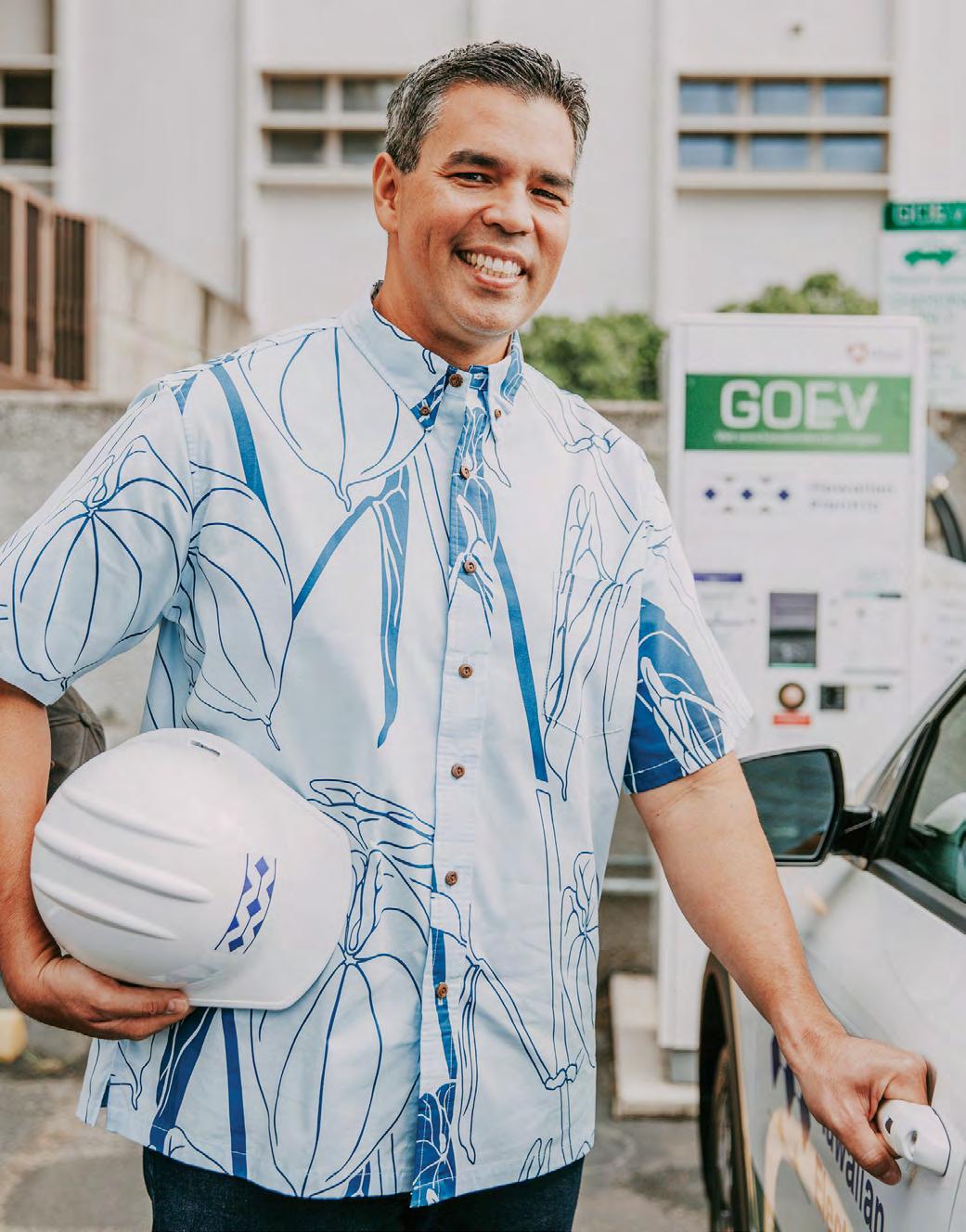
to manage the changes that resulted from One Company, and also obtain feedback on how employees were adapting. The results indicated that employees understood the need for One Company and acknowledged that leaders were working to address employee concerns with the changes. Further One Company initiatives continue as we strive to increase efficiencies and standardization across the HEI companies.
We seek to provide compensation that is comprehensive, market-competitive, and internally equitable. This helps us to attract, engage and retain highly skilled employees to advance our commitment to provide customers and communities with affordable, reliable, and clean energy. In that effort, we continue to assess total rewards compared to the market and make appropriate adjustments to be competitive.
Physical well-being. Our health and welfare benefits include medical, dental, vision, prescription drug, group life insurance, accidental death & dismemberment insurance, long-term disability insurance, worker’s compensation, long-term care and flexible spending accounts. Wellness and preventive programs include sick leave, an employee assistance program and other wellness education programs as available.
Financial well-being. We offer pension and welfare benefits to help employees develop greater financial security. This includes our HEI Retirement Plan, HEI Retirement Savings Plan and other post-retirement benefit plans. We continue to assess the competitive landscape with respect to these programs so we can make appropriate adjustments to remain competitive. We also have agreements with vendors to offer our employees discounts for a variety of products and services, such as computers, computer products, business software, advanced electronics and cellular equipment.
Emotional well-being. We recognize the importance of achieving work-life balance for our employees and company. To help employees manage their needs, we offer opportunities for part-time (less than 20 hours) work schedules, flextime schedules, teleworking and various leave programs. We also provide other employee benefits such as vacation, bonus vacation for taking minimum sick leave, paid holidays, family and medical leave, adoption expense reimbursement, voluntary educational assistance program, bus pass reimbursement and bereavement leave. In addition, we offer an employee assistance program that provides free and confidential counseling and assistance on a range of topics.
We work hard to recruit talented employees. Our efforts include partnering with local universities to recruit and prepare students for careers in energy, working with other organizations to identify potential candidates and expanding our recruitment reach through social media efforts. We also provide opportunities for internships and externships, and support Science, Technology, Engineering & Math (STEM) and mentoring programs. Our employees have been longstanding mentors for high school students participating in robotics programs on O‘ahu and Hawai‘i Island. Today, several former robotics students are employed at Hawaiian Electric as engineers.
To build a high-performing workforce, we offer leadership, specific skills and professional development training programs, primarily through remote learning via our automated Learning Management System (LMS). In 2020 we offered a total of 122 courses for the purpose of employee development. Due to COVID precautions, 96% of these were online or virtual. Courses offered include leadership development, employee development, technical training, apprenticeship programs, operational, environmental compliance and required safety training. We also offer supervisor training to transition new supervisors to critical operational, administrative and leadership roles, as well as employee assessments geared to improve productivity and effectiveness. In 2021 we are implementing a new Leadership Cohort Program to strengthen our leadership pipeline and develop high-potential leaders through a business focused cohort project.
Our annual performance review process includes assessment of performance-based goals as well as assessment on culture dimensions and individual achievements. Our Human Capital Management Strategy, implemented in 2021, focuses on business goals and individual goals that are integrated with annual performance evaluations.
Annual succession planning ensures the identification and development of successors and high potentials, and nurtures a leadership pipeline.
Our succession planning strategy is designed to ensure we have the right talent and leadership to fill critical positions. This includes leadership assessments that result in individual comprehensive development plans. Part of the strategy is a 360-degree feedback assessment program based on defined leadership competencies. To date, all executives, directors and approximately one-third of managers have completed 360-degree feedback assessments, which have included individual coaching sessions on results and development of individual development plans. We also encourage and support developing leaders in applying to community leadership programs such as Omidyar Fellows, Patsy T. Mink Leadership Alliance and Pacific Century Fellows
Approximately 48% of our workforce is represented by the International Brotherhood of Electrical Workers (IBEW) Local 1260. Our collective bargaining agreement with IBEW Local 1260 is in effect through October 31, 2021. In 2019, IBEW Local 1260 and management together developed Hawaiian Electric’s Code of Excellence (COE), which aims to create a collaborative partnership between the utility and union.
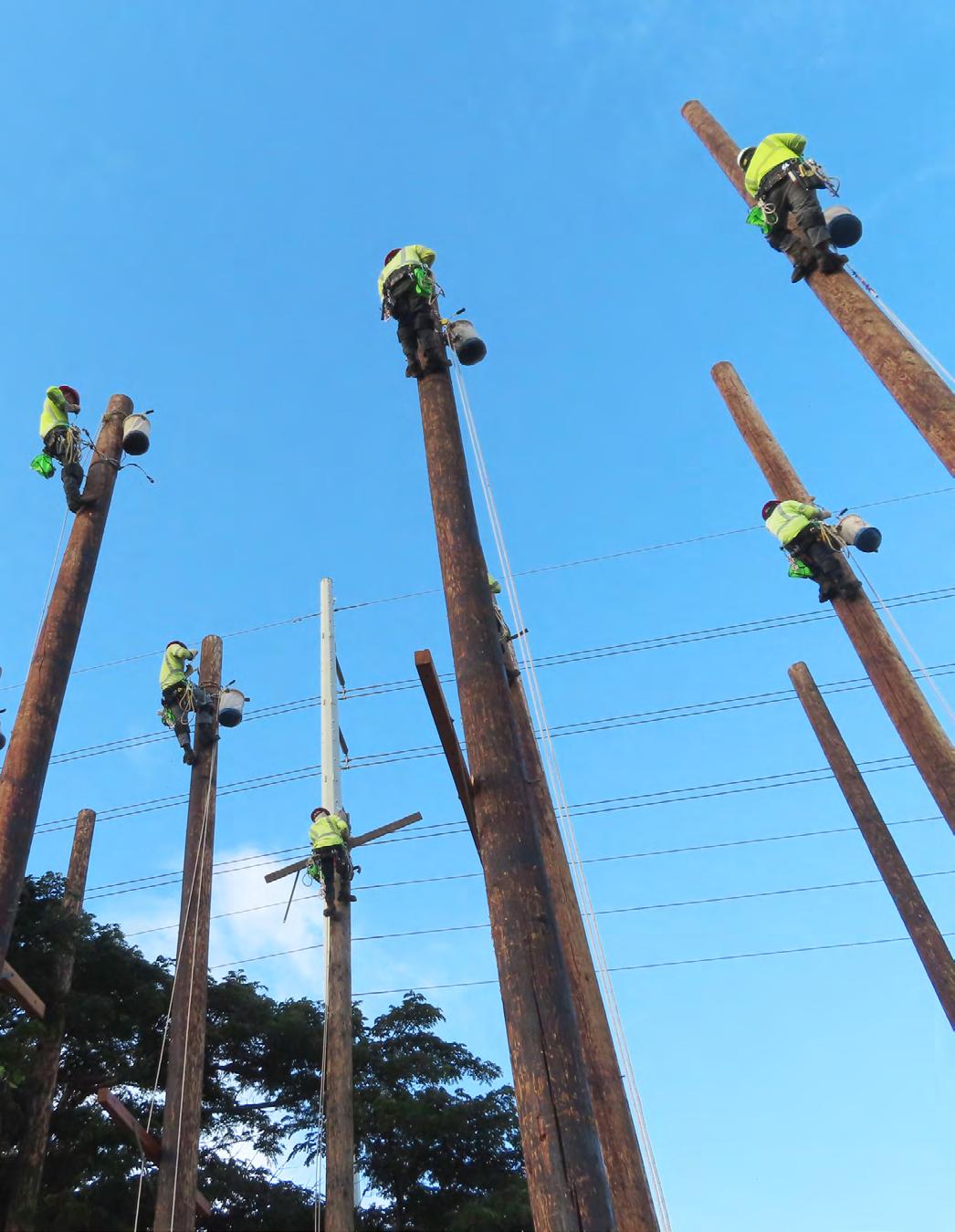



American Savings Bank is focused on making banking easy for our customers, delivering high performance, creating a great place to work and bringing real impact to our community.
Our team cares deeply about the economic, environmental and social future of Hawai‘i. As a bank, we know that our success is closely tied to the financial health of our customers, local businesses and our island economy, so our business strategies have sought to support our community as a whole.

In 2020, Hawai‘i’s economy was shaken to its core when the COVID-19 pandemic temporarily shuttered local businesses and paused our state’s tourism industry. As an essential service provider, our bank worked tirelessly to provide service safely in branches statewide, keep our online banking platforms up and running and provide constant service to our customers and community. We are proud of and grateful for our teammates’ dedication.
The pandemic brought to light the importance of building a resilient economy — one that recognizes small businesses as the lifeblood of our state, prioritizes innovation and selfsufficiency and promotes sustainable environmental and business practices.
We are committed to doing our part to contribute to Hawai‘i’s economic recovery. We are steadily expanding solutions for Hawai‘i businesses and increasing the amount of financing for commercial and real estate projects. These loans have higher risk profiles than residential loans, but we believe that supporting local businesses is an important driver for rebuilding. For years, fostering innovation and entrepreneurship has been one of ASB’s key impact areas. We continue to support our state’s Startup Paradise community and the entrepreneurial endeavors of Hawai‘i’s people.
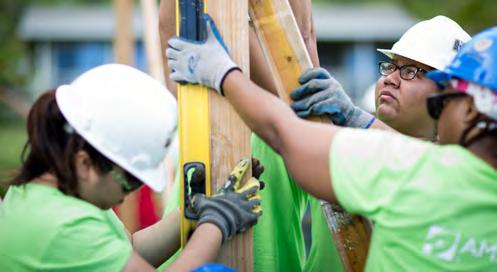

As one of the largest financial institutions in Hawai‘i, ASB has long recognized that when more people have the financial security to save portions of their income, make investments and borrow money to make their dreams possible, the local economy thrives. We continue to invest in social and environmental sustainability measures to ensure our recovery efforts meet the needs of all residents, promote greater financial equity and result in strong economic growth.

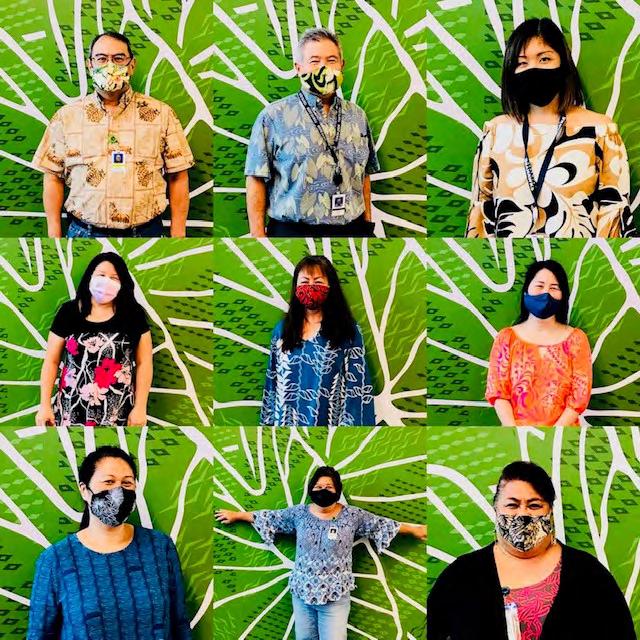
FOR COMMUNITY DEVELOPMENT PROJECTS IN HAWAI‘I IN NEW INVESTMENTS FOR AFFORDABLE RENTAL HOUSING TO AID LOW-INCOME FAMILIES 2018-2020
ASB is committed to strengthening communities. Some of the ways we help Hawai‘i residents include community development loans, affordable housing investments, small business development programs, donating to charitable organizations, community service projects, financial education initiatives and pro bono services.
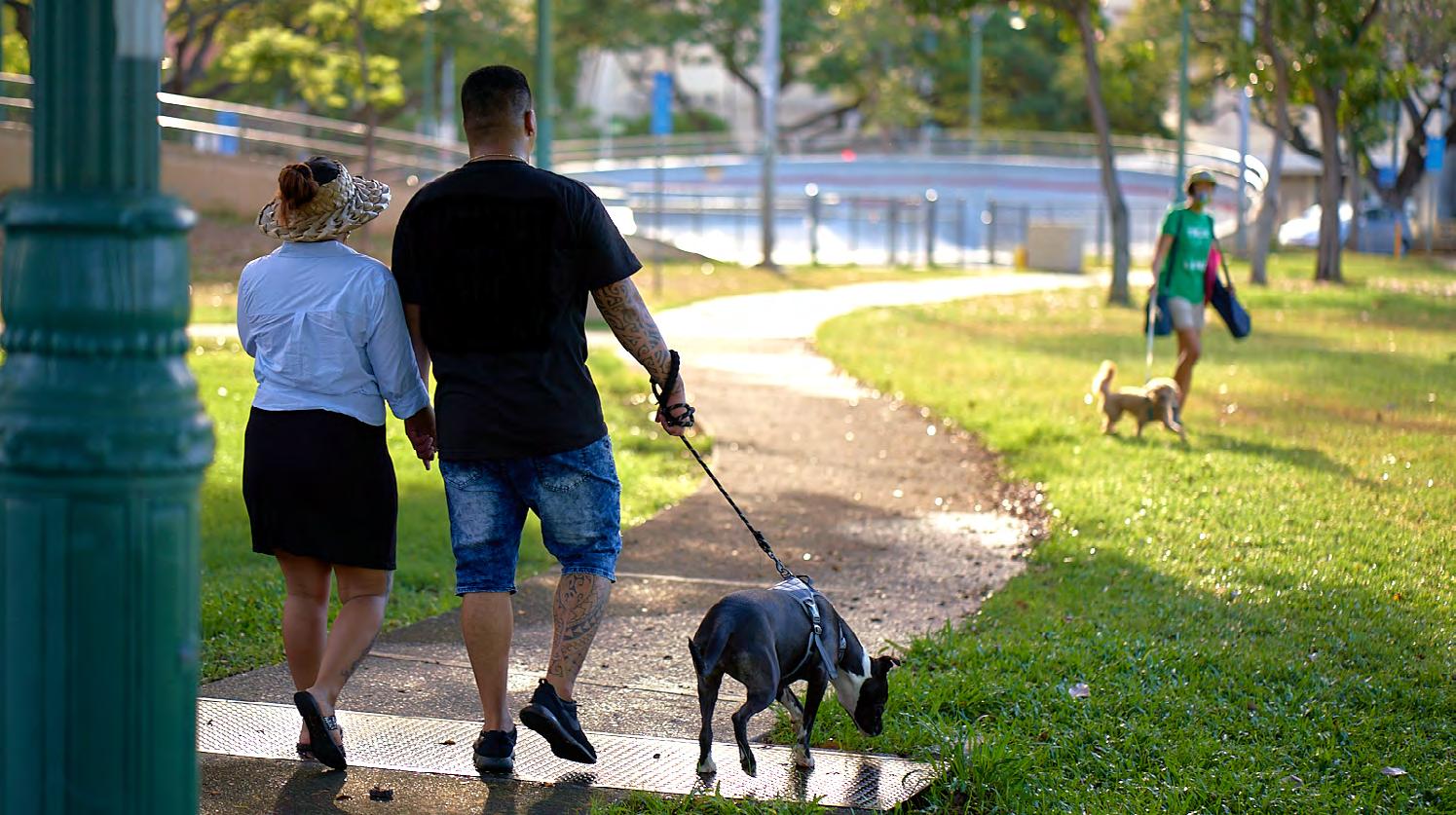
As a way to help customers impacted by the COVID-19 pandemic, ASB created a financial hardship program complete with a number of solutions to help customers, including loan forbearance, deferment or extension. In addition to dedicated phone lines, we set up web pages for both personal and business customers to submit requests for assistance.
ASB FINANCED MORE THAN COMMITTED OVER 2 5 2 5
From 2018 to 2020, ASB lent more than $457 million for community development projects in Hawai‘i. These loans benefited affordable housing, community services, economic development and revitalization and stabilization efforts for low- and moderate-income communities. During the same period, ASB also committed over $41 million in new investments to develop, acquire, or rehabilitate affordable rental housing for low-income families in Hawai‘i. These included the following ongoing investments:
$7.61 million to construct Koa‘e Workforce Housing Development Project, a 134-unit townhouse complex in Koloa, Kaua‘i
$8.7 million to construct Keahumoa Place, a 320-unit affordable housing townhouse complex in East Kapolei
$10.92 million to build Pua Loke, 54 affordable housing units in Līhu‘e, Kaua‘i, that is planned for LEED Platinum compliance
$1.25 million to develop Hale Kalele, a 200-unit rental project that includes a juvenile services center and shelter
According to the U.S. Small Business Administration, 99.3% of Hawai‘i companies are considered small businesses. These small businesses employ roughly half of the Hawai‘i workforce.
At ASB, our business relationship managers work closely with small businesses to understand their goals and unique needs, and to find customized solutions. We strongly believe there is no one-size-fits-all approach when it comes to banking for small businesses.
We are one of the largest providers of small business and community development loans in Hawai‘i. In 2020, ASB lent $404 million to promote small business and community development.
Our 2020 loans included those we deployed as a participating lender of the Small Business Administration’s Paycheck Protection Program (PPP) to assist businesses during the COVID-19 pandemic. In 2020 ASB funded more than $370 million in additional loans for nearly 4,100 local businesses, representing an estimated 40,000+ local jobs as part of PPP round one. We’re currently deploying loans under PPP round two.
In addition, to support local businesses during the pandemic while also keeping our teammates working on the front lines healthy and fed, in 2020 we purchased more than 26,600 meals at a cost of more than $360,000, supporting 110 local restaurants in the process. Meals were also provided to first responders, kūpuna (seniors), and community members.
ASB is proud to participate in the Community Reinvestment Act (CRA), a federal law that encourages financial institutions to help meet the credit needs of the communities in which we operate, including low- and moderate-income neighborhoods, consistent with safe and sound operations. The law also prohibits redlining, which is the practice of denying or increasing the cost of banking to residents of racially defined neighborhoods.
ASB offers solutions to low- and moderate-income families. For instance, we participate in the Fannie Mae HomeReady® and Freddie Mac Home Possible® programs, which help make homeownership a possibility for credit-qualified low- and moderate-income families. Additionally, low-income families seeking to live in rural communities, which include West O‘ahu and most areas on the neighbor islands, may qualify for a USDA Rural Development loan.
ASB is a participating lender in the Mortgage Credit Certificate Program, which reduces the amount of federal taxes that lowand moderate-income borrowers pay, thereby freeing up their income for mortgage qualification purposes. ASB also helps Hawai‘i’s teachers purchase homes by participating in the Landed down payment assistance and homebuyer education program.
For deposit accounts, we offer a checking account with no minimum balance requirement and no monthly service fees.
In 2020 we partnered with the State of Hawai‘i to launch the Hawai‘i Restaurant Card — a win-win program to support the unemployed, the restaurant industry and its supply chain. The economic stimulus initiative, made possible by funding from the Federal CARES Act and administered by the State of Hawai‘i’s Department of Business Economic Development & Tourism (DBEDT), funneled more than $71 million into our economy.
The program was so successful that we helped to launch a limited run of cards for businesses during the holidays, called the Business Holiday Card. This enabled businesses to purchase gift cards for their employees and partners to infuse additional funds into Hawai‘i’s restaurant industry and supply chain. This run of the card generated more than 26,000 cards from more than 100 companies, including ASB.

At ASB, we believe that improving access to financial services goes hand in hand with educating members of our community on personal finances.
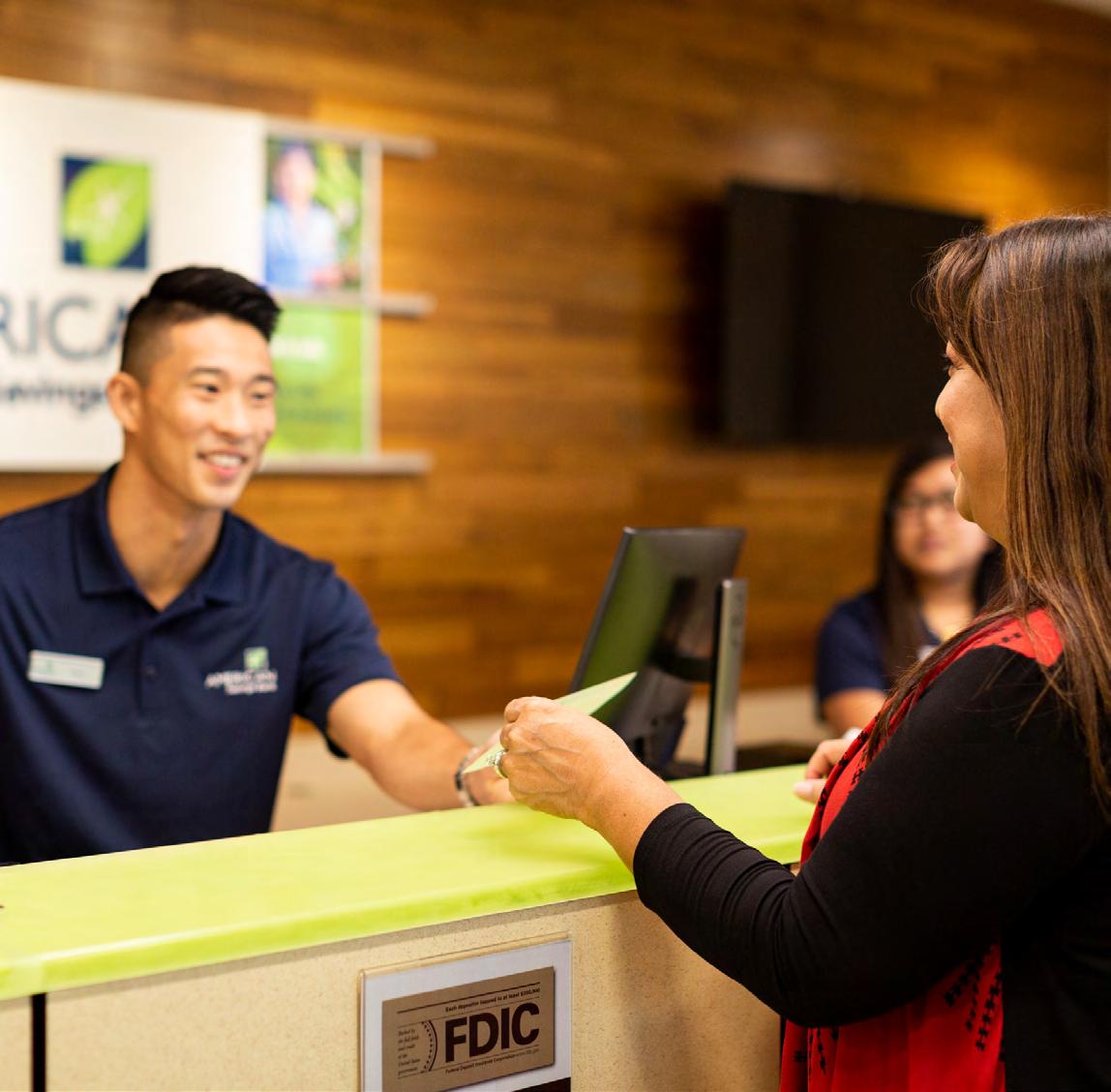
In early 2021, we launched ASB Financial Education – a free, comprehensive online resource center. Users can select from several different playlists, featuring a series of five-minute trainings designed to provide helpful and practical tips and information. Topics include Debt Management, Budgeting for Families, Credit Scores and Finance for Senior Caregivers, with additional content continually being added based on what customers and the community want to learn.
In addition, our knowledgeable teammates regularly hold seminars on financial topics, such as purchasing a home, saving and investing money, managing credit, planning for retirement, insuring against losses and applying for VA loans.
Our teammates also donate their time in the community, providing financial literacy programs to nonprofits that include Family Promise Hawai‘i and Kupu Hawai‘i and providing financial education in schools through our Bank for Education program and commitment to Junior Achievement. During the pandemic, ASB partnered with the City & County of Honolulu and the Kupuna Network to provide virtual trainings on avoiding fraud and scams.
We believe it’s important to empower and support our local entrepreneurs and innovators. We are proud supporters of several local incubator and accelerator programs. These include Mana Up, a 12-week accelerator program for consumer packaged goods made in Hawai‘i, and Elemental Excelerator, a nonprofit created in collaboration with Emerson Collective, an investment and philanthropic platform.
We are also longtime supporters of the Pacific Asian Center for Entrepreneurship (PACE) at the University of Hawai‘i at Mānoa, Shidler College of Business and the Hogan Entrepreneurial Program at Chaminade University of Honolulu.
We recognize that innovation and entrepreneurship begin from the earliest days in the classroom. In 2015, ASB created its own business plan competition for youth called the KeikiCo Contest. KeikiCo challenges students in grades 3 to 12 to come up with their brightest business ideas for a chance to win monetary awards for their school. Students submit a written business plan and film a two-minute video pitch. To guide students through the process, ASB developed a written curriculum and a series of “how to” videos. Branch teammates are paired with schools to serve as mentors and provide guidance throughout the 10-week program. To date, KeikiCo has engaged more than 2,000 aspiring entrepreneurs who have developed more than 680 innovative business plans.



We see the direct and societal benefits of enabling our customers to save money on energy costs and reduce their impact on the environment.
From 2018 to 2020, ASB originated $14 million in residential clean energy loans. These loans allowed homeowners to purchase and install their own photovoltaic systems, solar water heaters, solar air conditioning and battery backup and storage. ASB also financed more than $64.9 million in commercial clean energy projects from 2010-2020, generating a total of 20.8 MW in renewable energy. These projects include:
Forest City Hawai‘i project at Kapolei Sustainable Energy Park — transforming a brownfield waste site into a productive greenfield development with more than 4,200 solar panels
Hilo Hawaiian Hotel — ensuring the long-term viability of Hilo’s visitor industry by retrofitting and enabling the installation of photovoltaic panels for improved energy efficiency
Lalamilo Wind Farm project — providing renewable energy to eight water wells operated by Hawai‘i County’s Department of Water Supply — the biggest power consumer on Hawai‘i Island. The project was recognized for reducing greenhouse gas emissions at no cost to taxpayers.
Operating on an island chain, we know that we must prepare to adapt to the impacts of climate change and take steps to prudently mitigate related risks. One of the key potential risks from climate change is the potential for sea-level rise to affect properties that secure our loans. We require all homeowners who live in a Special Flood Hazard Area, as defined by FEMA, to maintain sufficient flood insurance throughout the life of the loan. We regularly monitor our credit exposure in areas at risk of future sea-level rise. We perform property research to confirm flood zones, and our underwriting decisions consider factors such as the property location, topography and elevation. For more information on how we’re approaching climate change risk management, see pages 26 to 28
Our new campus enabled us to bring employees once spread out across five different office locations together in one building. This consolidation enhances operational efficiency and reduces emissions by significantly cutting down on the amount of time and energy commuting for meetings across town during the day.
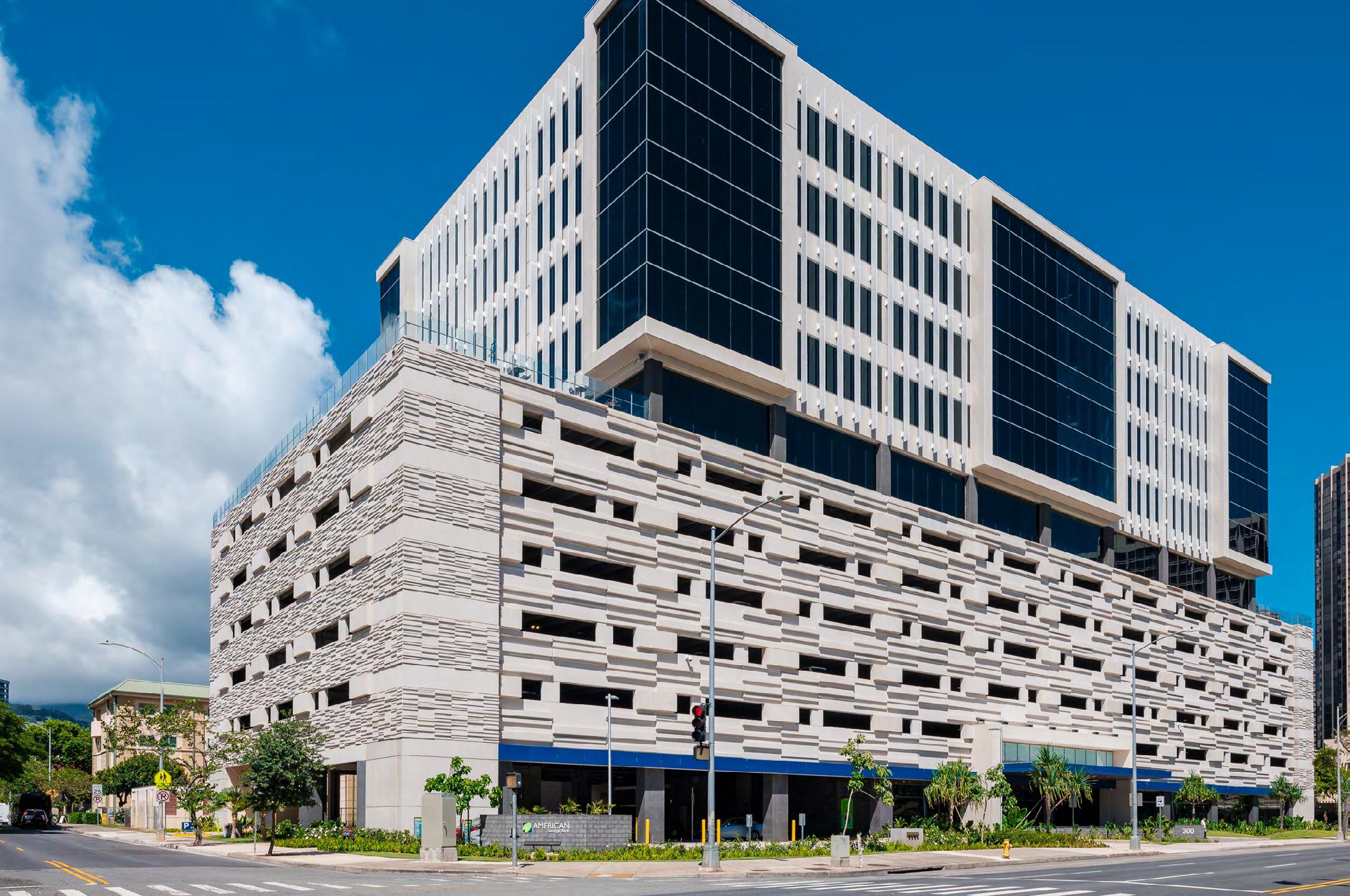
In designing the new campus, we wanted a building that was reflective of our commitment to our customers, our teammates, and the community. We saw the construction of our new headquarters as an opportunity to analyze how we do business and what efforts we could implement to reduce our impact on the environment. Our campus features some of the latest green technologies, including solar panels, electric vehicle charging stations, self-tinting windows, responsive LED lighting, water bottle filling stations and reclaimed wood furniture. We also used this opportunity to evaluate our work habits and made the decision to operate as paperless as possible.
We encourage our teammates to commute to work by carpool, mass transit, bike, or other means — and reward those who do for their commitment to the environment. Teammates who participate in a carpool receive one free parking stall per group, plus a monthly carpool stipend. Teammates who find other means of getting to work receive a larger green stipend, which can be used to cover expenses for alternate transportation or whatever else they choose.
At our new branches, including our Kalihi Branch opened in 2020, we have incorporated LED light fixtures and signage, self-tinting windows and low-flow water fixtures. For our existing branches, we rolled out green initiatives and are retrofitting the facilities with sustainable features. These include installing LED light fixtures and low-flow water fixtures and implementing recycling programs. In addition to having a positive impact on the environment, these features reduce our energy and water use and positively impact our bottom line.
At ASB, taking care of your health and wellbeing isn’t just encouraged – it’s made easy with a wealth of benefits available to every single teammate at the company. ASB’s focus on health and wellness was further validated in 2020 when its headquarters (campus) became the first facility in the state of Hawai‘i to earn the WELL Health-Safety Rating.
The rating is an evidence-based, third-party verified rating for businesses achieved through an in-depth assessment of operational policies, maintenance protocols, emergency plans and stakeholder engagement strategies. The review and verification process is conducted by the International WELL Building Institute, which recognizes companies that prioritize health and safety in the workplace, especially in the context of the COVID-19 pandemic.
Building industry experts say the rating is comparable to achieving a LEED certification for health and safety.
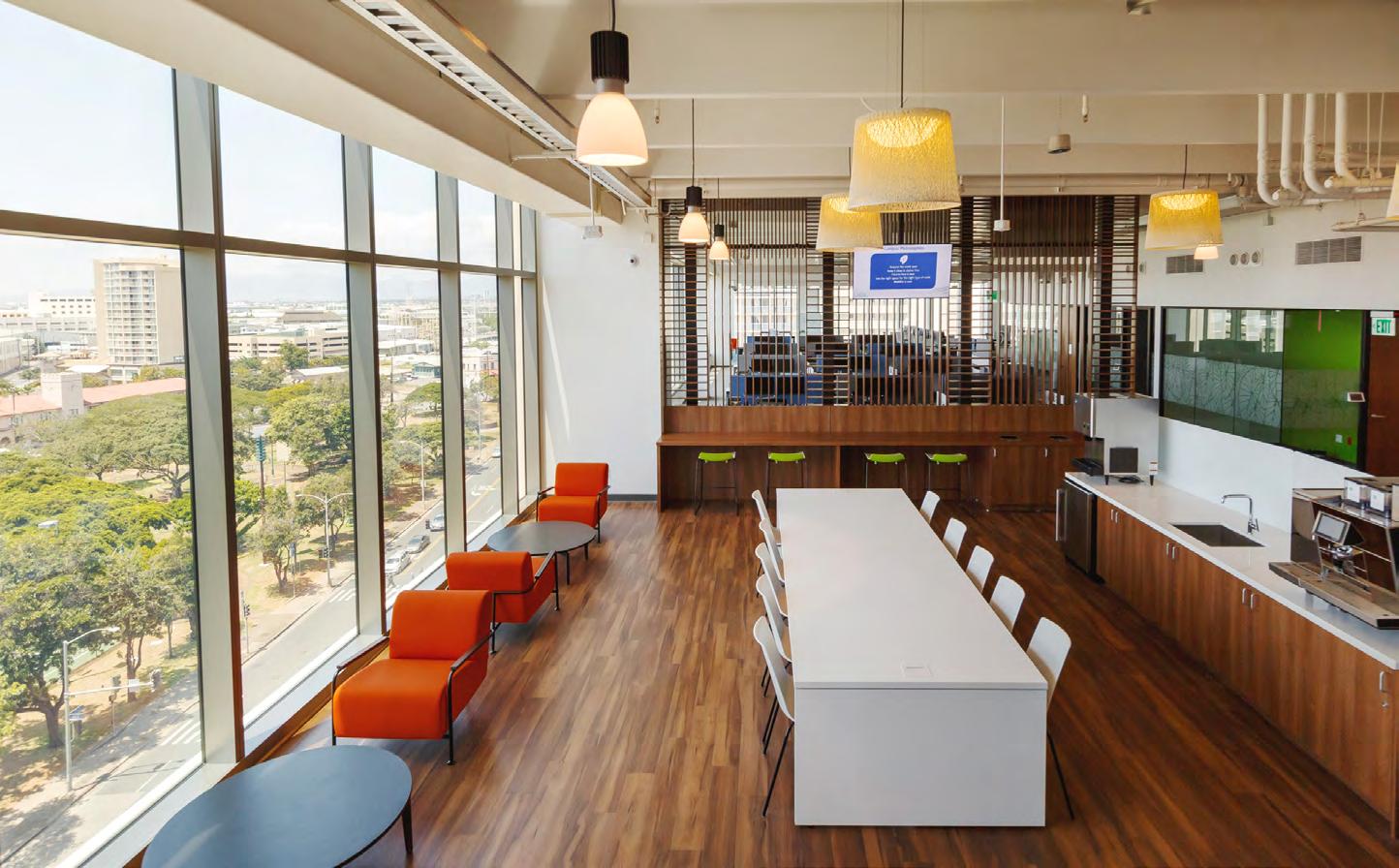
“As we continue to fight this global pandemic, prioritizing health and safety in the workplace is more important than ever before,” said Rich Wacker, President and CEO of ASB. “We are proud to be the first in Hawai‘i to earn the WELL Health-Safety Rating, an achievement that underscores our commitment to the health and safety of our teammates, our customers and the community.”
To achieve the WELL Health-Safety Rating, ASB worked with hiarchy, llp, the local architect for the campus, to document its internal policies and procedures and submit an online application. The ASB campus was built with health and safety in mind, including emergency and business continuity planning that incorporated pandemic planning. Some of the building’s features that are particularly effective in the COVID-19 environment include:
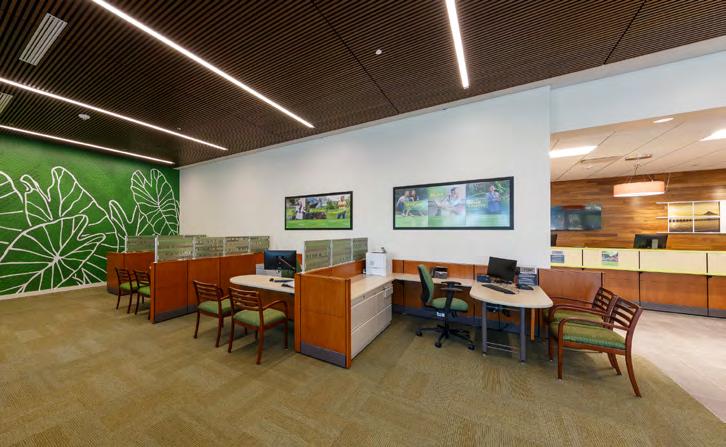
A high-grade air conditioning system that continuously circulates fresh air into the building and filters air through a catch-all filter past ultraviolet lights

Reduction of contact with high-touch surfaces through provision of wipes, automatic doors, door pulls and more
Adoption of comprehensive business continuity and emergency preparedness plans for a wide range of possible emergencies, including global pandemics and natural disasters
Support of healthy behaviors through an employee wellness program, ongoing communications, signage throughout the building and the offering of free exercise classes and a Fitness Center
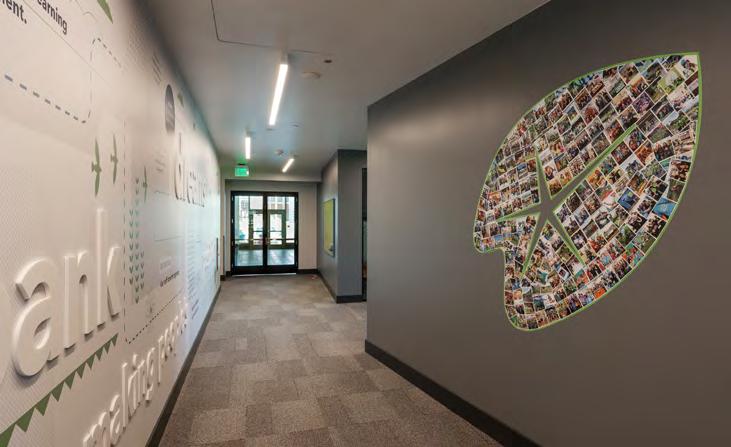
The WELL Health-Safety Rating provides a centralized source and governing body to validate applications from owners and operators. The ASB campus was awarded the WELL HealthSafety Rating following the successful completion of third-party documentation review, to confirm it met the feature-specific intents and requirements.

Our customers are primarily residents and businesses in the state of Hawai‘i. We have branches on five islands — O‘ahu, Maui, Hawai‘i Island, Kaua‘i and Moloka‘i. Additionally, our online banking platforms and Customer Banking Center (a 24-hour telephone banking center) enable us to serve customers throughout the state.
Some of our customers are former Hawai‘i residents who have moved away or have property or projects in Hawai‘i. We are proud to retain their trust and business, and we strive to continually provide the same high-quality customer service.
Our core focus is to make banking easy for customers. This includes providing excellent service and banking solutions for existing customers and engaging underserved and disadvantaged members of our community.

In our 2020 Brand Equity Survey, customers who indicated that ASB was their primary bank gave an average score of 8.65 (out of 10.00) when asked whether ASB had convenient branch hours and locations. ASB customers also gave an average score of 8.78 when asked whether ASB’s online and mobile banking tools were easy to use.
While our customers generally believe it’s easy to interact with ASB and to do their banking with us, we know there is always room for improvement. We continue to assess our branch locations, maintain a helpful Customer Banking Center and empower customers with access to online tools. We also recognize that improving access requires us to continuously scrutinize our efforts to ensure that no population is denied access to financial services.
The COVID-19 pandemic has altered customer behavior and expectations in profound ways and shown how much our customers value being able to bank with us anytime, anywhere. We saw a dramatic acceleration of customers using our digital and self-service options. Non-branch transactions, such as online, mobile and ATM transactions, increased from 19% prior to COVID to 40% in December 2020. We’ve been pleased to see high levels of customer satisfaction with those options.
We want to continue our focus on making banking easy, be available to customers anytime, anywhere, and encourage them to make American their primary bank.

New ATM fleet. In 2021 we completed the rollout of new ATMs, replacing our entire ATM fleet. Our ATMs are the newest in Hawai‘i and help us make banking even easier for customers with features such as multiple check and cash deposits and options such as paperless receipts.
Enhanced online tools. We’ve also launched new online tools, including online mortgage applications and online deposit account opening.
In-person “Digital Centers.” With increased customer use of our digital channels we’ve been able to consolidate branches and are introducing several “Digital Centers.” These locations will leverage our digital capabilities while still providing in-person interaction through bank teammates who are available to help customers reach their financial goals using the latest online banking solutions.
Deepening customer relationships. As we enhance our digital offerings, deepening our relationships with our customers remains a cornerstone of our strategy. We’re upgrading our tools and capabilities for understanding, anticipating and tailoring our recommendations to customer needs. Our recently launched online financial wellness tools empower customers with greater financial knowledge and provide more avenues to engage with and offer services to them.
These initiatives increase options and convenience for our customers while providing cost savings and other benefits over time for the bank.
In 2020 we also introduced new ASB Visa Debit Cards featuring contactless payment. This is just one of the many ways we are keeping our customers safe and secure. With the new debit card, customers can simply tap to pay without having to touch any buttons at checkout.
To ensure that we are serving our customers as well as possible and making banking easy for them, we regularly seek feedback through customer surveys, comment forms and focus groups.
In our 2020 Brand Equity Survey, 93% of customers who indicated that ASB was their primary bank responded that they were “likely” or “very likely” to continue banking with ASB.
93%
OF CUSTOMERS WHO INDICATED THAT ASB WAS THEIR PRIMARY BANK RESPONDED THAT THEY WERE “LIKELY” OR “VERY LIKELY” TO CONTINUE BANKING WITH ASB
In addition to surveys and focus groups, we invite customers to provide feedback directly to branch or Customer Banking Center teammates. Teammates who receive complaints are required to notify the customer experience team, which works to respond to the customer. We also monitor ASB social media and other online message boards, such as Yelp and Google Reviews, for customer feedback. Our customer experience and communications teams frequently reach out to customers to address issues they’ve raised.
On a quarterly basis, our leadership team and customer experience, legal and compliance teams review trends in customer feedback to identify any accessibility issues and to assess whether we should make any changes to our policies or procedures.
At ASB, we strive to create a great place to work. We value the nearly 1,100 members of our ASB Dream Team, who are committed to turning our customers’ dreams into reality. We are proud of the range of diverse backgrounds and experiences our team members offer.
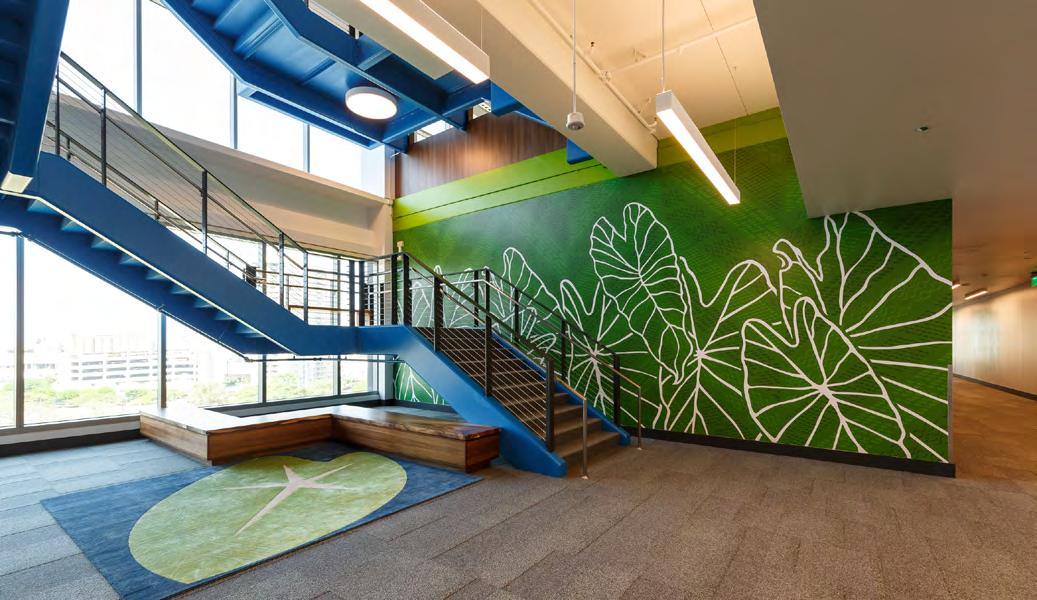
We believe that feedback should be both given and received. So, while managers provide feedback to teammates through annual performance evaluations and regular one-on-one meetings, we also expect that managers actively solicit feedback from their teammates.
We participate in quarterly employee surveys to check in regularly with our teammates about what we’re doing well and what can improve. Topics covered include confidence in leadership, career growth opportunities, diversity and inclusion and suggestions on how to create a great place to work. Survey results are shared with leaders, who prioritize actions in response to feedback to drive improvements in employee engagement. To keep engagement top of mind, managers hold team meetings to share team survey results and plans.
Our investment in creating a great place to work and innovative programs has resulted in local and national recognition for our workplace culture. In 2020 we were gratified to be recognized for the 12th consecutive year by Hawaii Business magazine as a Best Place to Work, and by American Banker magazine as a Best Bank to Work For We also became the first company in Hawai‘i to earn the WELL Health-Safety Rating for our ASB Campus, which validated our prioritization of health and safety in the workplace in the context of a global pandemic.
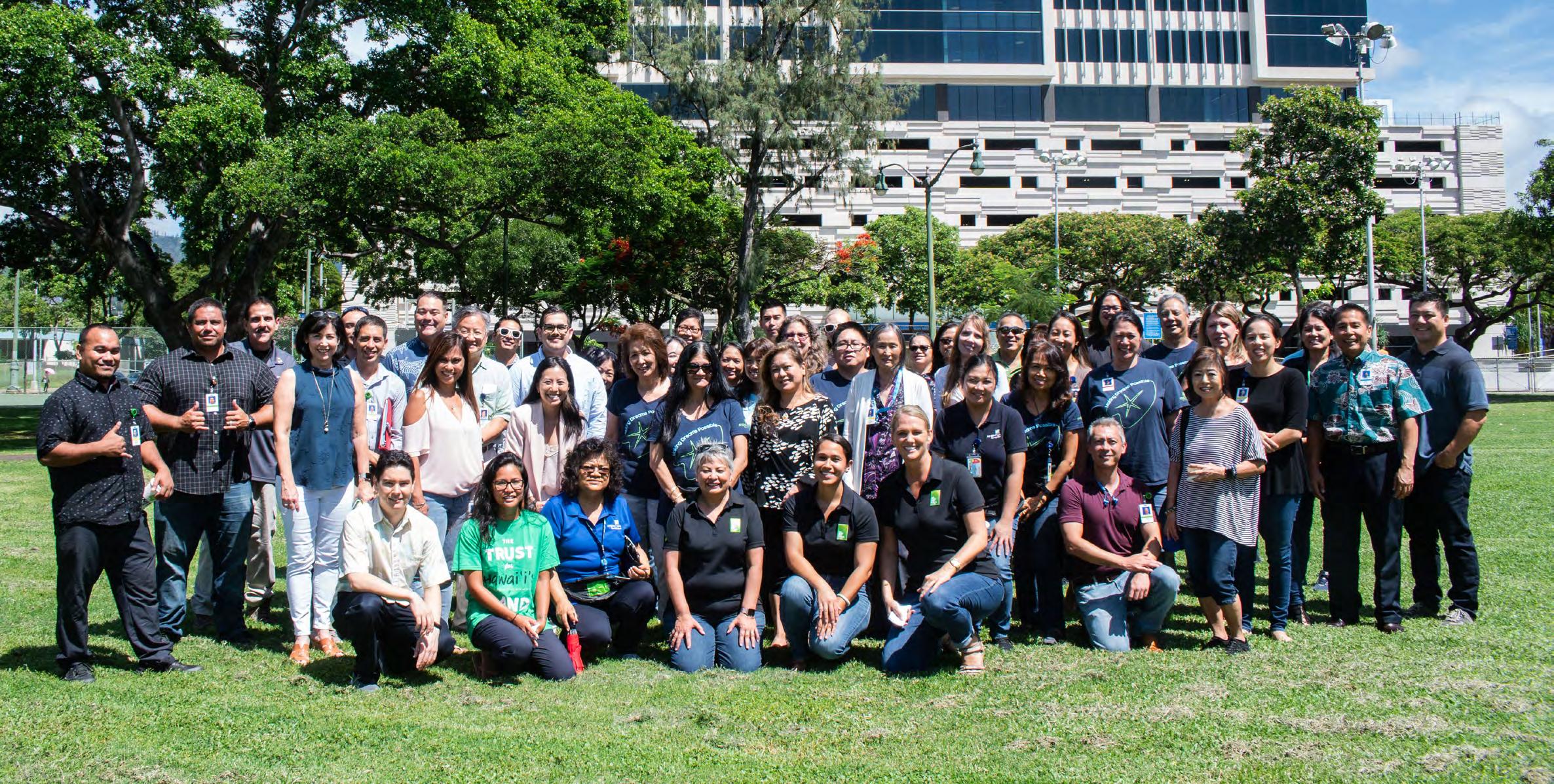
We are proactive in our efforts to identify and connect with talented individuals. Through our partnerships with Hawai‘i high schools, colleges, professional networks and community organizations, we have recruited hundreds of new teammates — many of whom are residents of the communities we serve.
We make extra effort to recruit veterans and individuals with disabilities. In the past, our recruitment team has attended job fairs hosted on military bases, posted open positions on veteran-focused job boards, and worked with agencies such as Goodwill, Job Corps and Hawai‘i Workforce Development Division to attract veteran and disabled candidates.
With the COVID-19 pandemic resulting in the loss of employment for many in our community, it is important to us to support the return of local jobseekers to the workforce. ASB is a proud sponsor of Hawai‘i is Hiring, a new one-stop resource from the Chamber of Commerce Hawai‘i that connects Hawai‘i residents to job opportunities, training programs and career navigation. We’ve also worked with the Economic Development Alliance of Hawai‘i to support the Aloha Connects Innovation program, which provides unemployed workers with new job opportunities to help set a course for a more sustainable, resilient Hawai‘i. Not only has this program helped many of the state’s displaced workers, it has also helped to diversify and strengthen our economy.
To ensure that our teammates are fairly compensated, we annually review wages to detect disparities among teammates and any gaps between our average pay and the market’s average pay rate. Our starting wage at ASB is $16/hour, significantly higher than Hawai‘i’s minimum wage of $10.10/hour.
We offer a comprehensive set of benefits to those joining our team. This includes great health care coverage, a Parental Paid Time Off (PTO) benefit (16 weeks of PTO for teammates on leave for the birth, adoption or foster of a child), ‘Ohana PTO (four additional weeks of PTO to care for self or a family member), Life and AD&D Insurance, fully paid Long-Term Disability and Long-Term Care insurance, Business Travel Accident Insurance with Identity Theft Assistance, a 529 College Savings Plan and discounted pet insurance. We also offer coverage for alternative care (acupuncture, chiropractic and massage therapy), a casual dress code, a wellness holiday and a birthday holiday.

In light of economic challenges many in our community experienced during the pandemic, including many of our teammates, we offered our interest-free ASB Malama Loan to teammates facing financial hardship as a result of the pandemic. By year-end 2020, more than 200 teammates have been assisted with these loans, totaling nearly $1.1 million.
Our LifeBalance wellness program takes a holistic approach to improving employee health and well-being by focusing on all aspects of wellness, including nutrition, fitness, mindfulness and finances.
We encourage participation in annual, bank-wide step and weight loss challenges and community charity walks.
We offer fitness classes – outdoors and virtually during the pandemic – including high-intensity interval training and yoga.
Our teammates can participate in a program enabling employees to use national fitness center chains or work out in their homes at a reduced price.
For employees and their families who need support through life’s challenges, we offer an employee assistance program that provides free and confidential counseling for relationship, family or financial challenges, as well as assistance for issues such as substance abuse, smoking or gambling.
Our company is comprised of teammates from all walks of life. This diversity provides an advantage as it provides us with a wealth of experiences and perspectives which inform our decision-making. It also allows us to connect better with our customers, who are diverse themselves. We welcome and celebrate diversity in ideas, experiences, race, ethnicity, gender, age, disability, religion and sexual orientation and do not tolerate racism, discrimination or harassment of any kind. In 2021, ASB was recognized by Hawaii Business magazine as a Best Company for LGBTQ-Equality.
ASB’s teammates are highly diverse, both in terms of racial and gender diversity. As reflected in our EEO-1 data, in 2020 88% of all teammates were racially diverse, as were 84% of our leaders and 70% of our executives. 67% of all teammates were female, as were 65% of leaders and 40% of our executives.

We work hard to have hiring practices that promote this diversity, and our high diversity numbers also benefit from the diverse community in which we operate. The accompanying chart shows the racial composition of our state. We recently launched a new training called “Finding the I” in Diversity and Inclusion, in which all teammates are encouraged to participate.
Creating a great place to work means having a safe and inclusive environment where everyone can thrive. We know that a diversity of ideas, experiences and backgrounds makes us better and stronger in all ways. Our ASB Diversity Council was founded in 2020. This group discusses topics related to enhancing diversity and inclusivity at ASB, develops ideas on how we can continue to ensure respect in the workplace, and shares important information throughout the bank.
Our Women’s Network brings ASB’s female teammates together monthly to discuss issues unique to women in the workplace. Recently, the Women’s Network hosted a session on the importance of mentorship within and outside the organization. The Women’s Network also provides networking opportunities, skills and leadership training and executive-level support for women leaders.
- Executive/Sr.
We invest in continuous training and development of our teammates. Curriculum includes technical banker training programs that cover all aspects of banking laws, banking operations, new product and service offerings, legal and regulatory compliance and procedures and ethics. We also deliver company-wide financial education, empowering teammates to make wise personal decisions to help meet their financial goals and provide valuable customer guidance.
We offer opportunities for all employees to grow and build their careers through comprehensive soft skills training and leadership programs:

We provide a range of soft skills training, including on emotional intelligence, change resilience, giving feedback and respect in the workplace.
To be a leader at ASB, teammates must complete our Leading the ASB Way course, which covers expectations for all leaders, and a biennial leadership certification refresher course. We provide monthly leadership training sessions open to all managers to help them keep their skills sharp and be prepared for leading their teams.
We lead semi-annual leadership forums, gatherings of 200+ ASB managers for a full day of leadership training workshops and updates on business objectives and goals.
We further invest in leadership development through our Leadership Academy, a robust 12-15 month cohortbased program to help leaders grow professionally and personally, enhance their leadership skills, and broaden their understanding of the banking industry.
Our focus on meaningful growth and development opportunities positions us to recruit and retain top talent.
Hawai‘i is one of the most diverse and multicultural places in the world and is a prime example of how people from many different backgrounds can contribute to a thriving community. ASB strives to go above and beyond to incorporate and promote diversity and inclusion into our corporate culture and practices.
At ASB, individuals from all backgrounds, interests and sexual orientations are accepted and supported. And, it’s just as important to create a safe space and inclusive environment that encourages people to talk about and celebrate each other’s unique differences.

In October 2020, ASB participated in Honolulu Pride Month, leveraging the event to celebrate and advocate for the LGBTQ+ community across the company and state. Although the 2020 in-person events were canceled due to COVID-19, ASB went above and beyond to support its LGBTQ+ team members and the community.
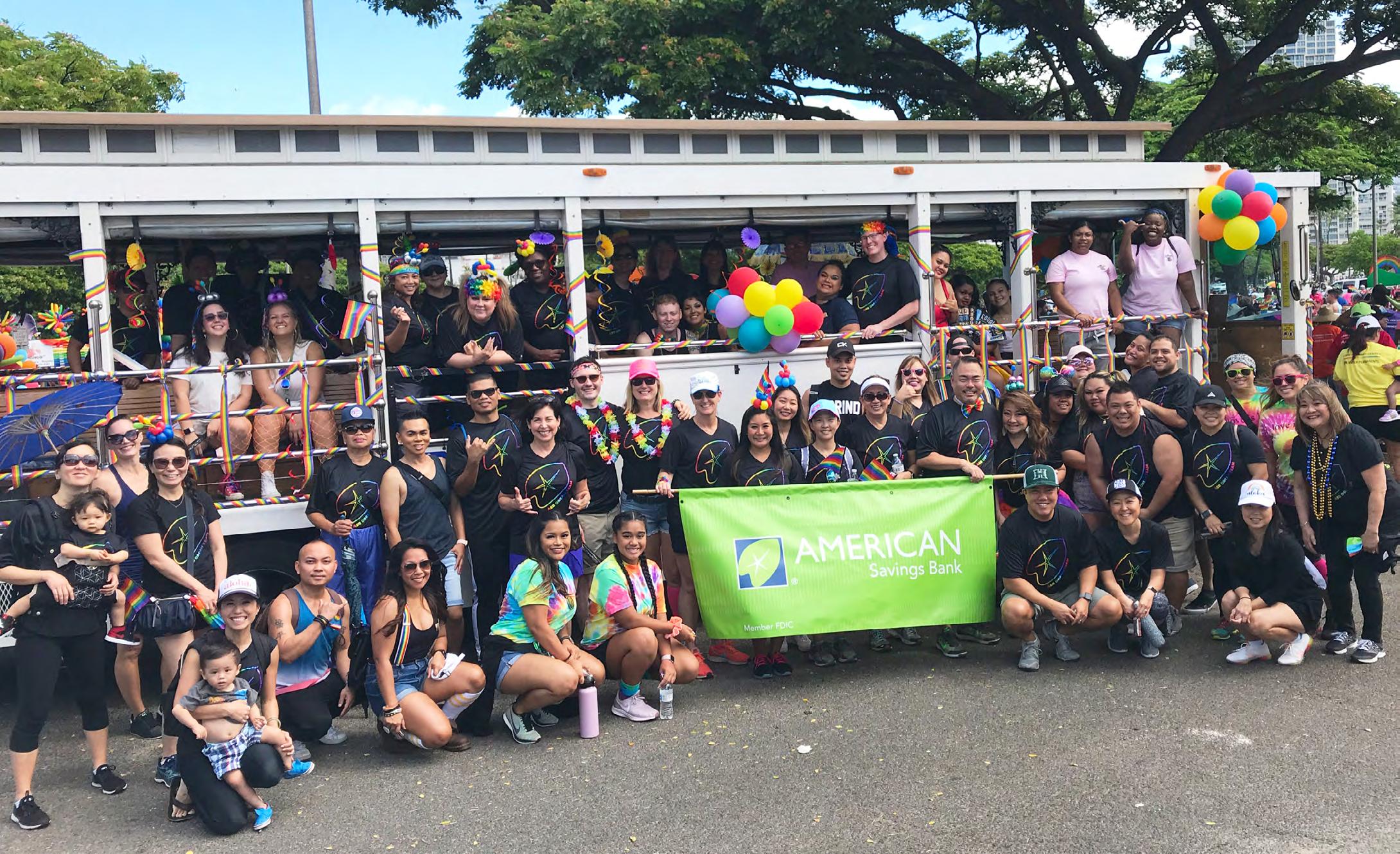
All throughout Honolulu Pride Month, ASB rainbow-ed its campus with lights and lawn installations, changed its logo on social media and its website and cohosted an event with the Hawaii Employers Council on LGBTQ+ in the Workplace, spotlighting LGBTQ+ leaders from the business community. To take celebrations virtual, ASB created complimentary PRIDE virtual backgrounds and Instagram filters for teammates and the public to use.
The 2020 festivities were made extra special with Executive Vice President & Chief Administrative Officer Beth Whitehead honored at Pacific Business News’ Business of Pride event on October 15, 2020. The annual awards recognize individuals and companies who have gone above and beyond in making Hawai‘i's workplaces more inclusive.
ASB also launched “Proud to be ASB,” a four-part video series showcasing stories from LGBTQ+ teammates that was shared online, on social media and internally.
“I grew up on the mainland in California and my sexuality and race were always at the forefront of every conversation I had, whether with old friends or new acquaintances,” said Nicholas, a teller at the Kehalani Branch. “I now live on an island that has not only embraced my sexuality but has helped me to accept who I am. Ever since I became a part of ASB I have seen so much support for those of us in the LGBTQ+ community, which let me tell you, was surprising but also refreshing. Thank you, ASB, for accepting me for me!”

“What blew my mind is that ASB had accepted me even before I was an employee,” said Kalani, a teller at ASB’s Waipahu Branch. “That kind of love and acceptance is what made me choose this company and is going to be the reason I stay and work as hard as I possibly can.”
“Honestly, throughout my life, I’ve never really been proactive in my LGBTQ pride and always sat in the background — watching everyone else make strides forward,” says Ty, a digital marketing specialist. “What’s great about ASB is that they give teammates an opportunity to grow and develop. These opportunities not only help me to grow professionally, but also help me to step into who I’ve always wanted to be — a proactive LGBTQ member who has healed from past trauma, now ready to support those around him.”
ASB is proud to be a workplace where teammates feel welcome and empowered to be their most authentic selves. Teammates are already planning the 2021 Honolulu Pride Month festivities.


Ever since I became a part of ASB I have seen so much support for those of us in the LGBTQ+ community...”
All teammates are expected to comply with all laws and regulations, including fair dealing, antitrust and anti-tying laws intended to provide customers with a variety of products and services at competitive prices. In addition, ASB demands ethical business practices, including not engaging in agreements that restrict trade or competition, such as price fixing, bid rigging and similar unfair practices, bribery or corruption.
A number of departments are responsible for ensuring the bank complies with all laws and regulations. These include the legal, regulatory compliance, enterprise risk and internal audit departments. In addition, the audit committee of the ASB Board assists with overseeing ASB’s compliance with legal and regulatory requirements.

We do not tolerate retaliation against teammates who report suspected violations of the law or our code of conduct. Teammates who engage in retaliation are subject to discipline up to and including termination of employment.
At ASB, we do not tolerate discrimination or harassment against our teammates by anyone, including fellow teammates, customers or suppliers. We expect our teammates and suppliers to comply with federal and state anti-discrimination laws and our code of conduct. We encourage any teammate who believes he or she is being subjected to discrimination or harassment to report the conduct to a supervisor, or anyone in the legal or human resources departments, or through EthicsPoint. We take all reports of discrimination or harassment seriously. Incidents are promptly investigated and action is taken as appropriate.
We do our best to help teammates who are victims of domestic violence. When we suspect that a teammate may be subject to domestic violence or threats of violence, we make reasonable accommodations to remove the teammate from harm’s way by relocating the teammate, changing the teammate’s contact information, or other means.
We will not engage with any suppliers who are known to violate child labor laws.
As a financial institution, we must comply with the Bank Secrecy Act, which requires us to identify and report suspicious transactions and potential money laundering to law enforcement authorities. We have developed a program to screen new customers, monitor transactions, and prevent unlawful activity.
We also must comply with U.S. economic and trade sanctions against foreign countries, terrorists, and other individuals and entities. Our policies and practices are designed to comply with the Office of Foreign Assets Control’s regulations against engaging in transactions with governments, individuals or entities on the Specially Designated Nationals and Blocked Persons List.
On an ongoing basis, we evaluate and address issues and activities that may pose potential risks to ASB, our teammates, customers, stakeholders and the community at large. This includes taking precautionary actions to anticipate, identify and avoid risks related to our services.
The risk committee of ASB’s Board assists with governance of ASB’s enterprise risk management program and provides a forum for detailed discussion and analysis of key issues and decisions designed to identify and manage potential significant risks. The enterprise risk management program focuses on various risk categories, including:
Credit (for loan and investment portfolios)
Market (environmental, interest rate sensitivity, liquidity)
Operations (including regulatory compliance, reporting, legal, insurance)
Strategic
Reputational
We are serious about safeguarding our customers’ confidential information. We devote significant resources to regularly maintaining and updating our systems and processes to protect the security of the computer systems, software, networks and other technology assets that store and access our customers’ information.
ASB is keenly aware of the constant security threats that affect financial institutions. As we continue to expand online access and tools for customers, we will face increased threats of data loss due to cyber-attack.
To safeguard ASB’s assets and customer accounts, ASB has adopted a robust information security program to monitor, detect and mitigate cyber-attacks. ASB has implemented administrative, physical and technical controls, including layers of firewalls and data security software, regular risk and security assessments, access control, monitoring, penetration testing, vendor engagement reviews and training.

We recognize the trust that our customers place in us when they deposit their hard-earned money, store their prized valuables, or take out a loan with us.
Protecting our customers begins with ASB providing the information customers need to make informed decisions about opening an account, taking out a loan or making an investment. We believe it’s important to be open and honest with the solutions we provide to customers. We provide customers with disclosures as required of financial institutions.
Customers who open accounts should know that we have their best interests in mind. We train our tellers, personal bankers, and operations staff to recognize counterfeit, forged or altered checks, as well as signs of identity theft and elder abuse.
Our Enterprise Risk and Fraud departments monitor transactions to identify potential fraud and other unlawful activity. If we detect suspicious activity, our experienced fraud investigators will conduct a prompt investigation and provide any appropriate redress to the customer. If customers detect any fraudulent or suspicious activity on their ASB accounts, they are encouraged to immediately contact our Customer Banking Center.
The ASB Information Security Program is based, in part, on section 501(b) of the Gramm-Leach-Bliley Act, the associated Interagency Guidelines Establishing Standards for Safeguarding Customer Information, and guidance provided by the Federal Financial Institutions Examination Council, National Institute of Standards and Technology’s Framework for Improving Critical Infrastructure Cyber Security (version 1.1), and the Center for Internet Security’s 20 Critical Security Controls.
Phishing continues to be a primary method of attack for unauthorized access to systems and information. Our teammates receive regular training on how to protect information and avoid social engineering attacks. Our information security team routinely tests our teammates’ knowledge by sending out fake emails and attempts at phonebased social engineering.


Pacific Current was founded in 2017 to further advance HEI’s mission to be a catalyst for a better Hawai‘i.
We invest in infrastructure solutions to accelerate Hawai‘i’s sustainability goals in a socially, economically and environmentally friendly way. We believe sustainable infrastructure is key to tackling three central challenges facing Hawai‘i: dependence on imported oil, inequitable access to clean technology solutions, and the effects of climate change.
Pacific Current is uniquely positioned to help Hawai‘i meet its sustainability goals in the competitive markets. We apply new business models, technology, and innovation to create positive impact. And we have the access to capital and local relationships needed to help lead Hawai‘i toward a more sustainable future.
Pacific Current centers its decarbonization and environment-related strategies in the following areas:
Clean Energy. Customer-sited renewable resources will play a critical role in reaching Hawai‘i’s 2045 clean energy goals as a complement to utility-scale solar projects. Pacific Current pursues the development and investment in customer-sited renewable power purchase systems whereby we install, own and maintain power generation systems and make clean energy available under power purchase agreements (PPAs) without the customer needing to bear the upfront capital improvement costs. We also invest in utility-scale clean energy projects.

Zero-Emission Transportation. With over half of Hawai‘i’s energy sector GHG emissions stemming from transportation, and ground transportation accounting for the largest portion of transportation emissions, the transition to zero-emission vehicles is a key part of our decarbonization agenda. Through our joint venture with EverCharge Inc., we’re bringing affordable power-optimized EV charging solutions to Hawai‘i to increase the basic infrastructure necessary to entice and support Hawai‘i’s drivers to choose zero-emission vehicles in lieu of petroleum-fueled cars, trucks and buses.
Sustainable Agriculture. The COVID-19 pandemic highlighted the need for Hawai‘i to work toward more self-sufficient food production to decrease dependency on imports. Pacific Current is exploring partnerships and opportunities to introduce new technologies and solutions to build out the food value chain and increase local food production in ways that consider Hawai‘i’s limited land resources, as well as look for ways to make agriculture production more economically compelling and sustainable.
With over half of Hawai‘i’s energy sector GHG emissions stemming from transportation, and ground transportation accounting for the largest portion of transportation emissions, the transition to zero-emission vehicles is a key part of our decarbonization agenda.”
Carbon
By 2045, Hawai‘i seeks to sequester more atmospheric carbon and greenhouse gases than emitted within the state. Pacific Current wholeheartedly supports this goal and is exploring market-based business models to scale-up reforestation, conservation and carbon sequestration. We believe that improvements in agricultural, aquaculture, and land use practices that would promote increased greenhouse gas sequestration can go hand in hand with successful business ventures and solid economic returns for our shareholders.
Pacific Current recognizes water as a precious resource that must be responsibly managed. Via our partnership with Wastewater Alternatives and Innovation (WAI) and Cambrian Innovation, we are evaluating opportunities to deploy distributed wastewater treatment solutions that enable water reuse and production of renewable natural gas. We believe that we must take advantage of technological advancement in water stewardship to provide cost-effective and efficient results.
Across industries, new technologies are shifting the nature of work. The emergence of cost-effective renewables is playing a major role in this disruption, creating new demand for workers in “clean energy” – which includes renewable energy, energy efficiency, grid modernization, storage, clean fuels and zeroemission vehicles. On average, workers in the “clean energy” sector earn 25% more than the national median wage.1 Pacific Current’s projects and asset portfolio drive employment of these types of skilled jobs, which can help drive economic growth and prosperity. In doing so, we strive to encourage people who call Hawai‘i home to remain in Hawai‘i, and also entice people who left Hawai‘i for other opportunities to consider returning to the state.

The
Economy. Hawai‘i is dealing with challenging waste management issues as many landfills face impending closure. Pacific Current is exploring ways to increase recycling, reuse, resource-saving product development and other sharing models.
Our projects often involve no upfront cost and result in reduced operating expenses for our customers. Examples of affordable customer solutions we deploy include solar+storage, onsite wastewater treatment, anaerobic digestion and renewable natural gas combined heat and power. Moreover, we seek to provide these solutions to segments of the community that have been traditionally underrepresented or hard to reach. One example of this is our Koa’e Workforce Housing solar plus battery energy storage project on Kaua‘i Island.
Reliability and resilience are critical given the increased frequency and severity of weather events and risk of sea-level rise. A number of Pacific Current’s “behind the meter” projects incorporate battery energy storage systems. These systems provide our customers additional resiliency and the ability to optimize their energy usage.

The proliferation of digital technologies and real-time data provide a foundation for optimizing the performance of our projects, many of which are digitally monitored 24x7. This enables our team to proactively address operational issues and optimize our ongoing maintenance efforts.
Within our core team, Pacific Current supports employment policies that ensure fair labor practices and a culture of openness and diversity. We truly believe that our differences not only make us each uniquely special, but also make us collectively stronger, more collaborative and able to make better long-term decisions. Several examples of this in practice are Pacific Current’s policies to help its employees achieve work-life balance and pursue personal family goals (e.g., paid maternity and family leave, and generous rollover of PTO). Approximately 50% of Pacific Current’s team identifies as female.
More broadly with our communities and partners, our experience has taught us that increasing the adoption of innovative infrastructure solutions is best received in an atmosphere of mutual respect and understanding of the differences between all stakeholders. Given Hawai‘i’s rich and diverse history, we believe that our projects can be most effective when proactively incorporating a broad array of viewpoints and cultural and community perspectives.
Employee engagement is a critical factor for Pacific Current. We operate with a small, tight-knit team and strive to have our employees be passionate, energetic and committed to our work and our mission. We accomplish that by maintaining a culture of openness and diversity, and actively ensure that our employees are able to achieve work-life balance and pursue both personal and professional goals by offering flexible work schedules and providing fair compensation and competitive benefits packages.
The gravity of climate change risk to Hawai‘i’s economy and people has been pointed out repeatedly — particularly, sealevel rise and increased frequency of weather-related disasters. In 2020 the Pacific International Center for High Technology Research (PICHTR) and the Hawai‘i Philanthropy Forum developed a sea-level rise adaptation survey to gather relevant information and to learn about the barriers pertaining to Hawai‘i sea-level rise adaptation amid COVID-19. A major gap in implementing climate-related solutions — as pointed out by the survey — is access to long-term climate adaptation funding. As a long-term owner and operator of sustainable infrastructure, Pacific Current seeks to close this gap from a local perspective.
As an investor, owner and manager of long-term infrastructure assets, Pacific Current is committed to the communities we serve. To build a relationship of trust with community stakeholders, we proactively provide information on our projects and ensure open, continuous communication. In support of our community, in 2020 we proudly contributed nearly $100,000 to vital initiatives that provided access to education, workforce training and food to populations in need. Pacific Current’s executive team also serves on several local non-profit boards, where we are helping our communities become more resilient, educated and prosperous.


Hawaiian Electric
American Savings Bank
Hawaiian Electric

of: (1) residential, (2) commercial, and (3) industrial customers served
electricity delivered to: (1) residential, (2) commercial, (3) industrial, (4) all other retail customers, and (5) wholesale customers 1
Total electricity generated, percentage by major energy source, percentage in regulated markets
All of the electricity generation listed above is in a regulated market
This metric is not applicable to Hawai‘i, as Hawai‘i does not have a wholesale electricity market. Hawaiian Electric purchases energy directly from independent power producers (IPPs). The information regarding the amount of MWh purchased from IPPs can be found in footnote 2 to table IF-EU-000.D (see below).
1 For total system generation reported by source, customer-sited generation is included as part of SASB and EEI ESG metrics in this report but was not included in HEI’s Annual Report on Form 10-K for year ended 2020. Minor methodology differences regarding renewable components of certain generators and timing of underlying reporting account for additional differences between the SASB and EEI ESG reported metrics and the Form 10-K.
3 Higher generation from petroleum in 2018 and 2019 and lower generation from geothermal in 2018-2020 reflect the fact that the Puna Geothermal Venture (PGV) plant was out of service from May 2018 until late 2020. The loss of firm power from PGV generation was offset by firm generation from petroleum. PGV began delivering power to the Hawai‘i Island grid again in late 2020 and as of April 2021 is still working to ramp up to its pre-May 2018 capacity.
4 Lower wind generation in 2019 primarily reflects a year to year wind variation, along with self-curtailments by the IPPs for maintenance and compliance with habitat conservation plans, and company curtailment for system maintenance and upgrades.
Key:
AES = AES Hawai‘i
CIP = Campbell Industrial Park Generating Station
DOH = State of Hawai‘i Department of Health
Hamakua Energy = owned by Pacific Current
HAR = Hawai‘i Administrative Rules
KPLP = Kalaeloa Partners
PGV = Puna Geothermal Venture
Hawaiian Electric’s greenhouse gas (GHG) emissions are calculated using fuel consumption data (collected by fuel meters, fuel purchase receipts, tank gauging), carbon content in fuel (determined by laboratory analysis) and default emission factors from 40 CFR Part 98 Subpart C. Three (HFCs, PFCs and NF3) of seven GHGs under the Kyoto Protocol are not generated by Hawaiian Electric. The GHG emissions presented below exclude biodiesel CO2 emissions and include biodiesel CH4 and N2O, which is consistent with the State of Hawai‘i’s GHG Emissions regulations (HAR, Title 11, Chapter 60.1, Subchapter 11), in which biodiesel is assumed to be 100% plant-based and to not include any fossil fuels. Disclosures are aligned with regulatory reporting and exclude emissions from units and emergency generators not under covered source permits, which represent 0.04% of total GHGs.
Hawaiian Electric's Scope 1 emissions include emissions for Hawaiian Electric owned generation, Hawaiian Electric transmission and distribution, and from IPP generation.
1 2020 emissions data for IPPs are estimated from average emission factors from 2015-2019. 2019 data has been updated to reflect final data at EPA FLIGHT. Final data for 2020 not yet available at EPA FLIGHT.
2 Includes CO²e emissions from Hawaiian Electric covered source facilities on O‘ahu, Maui County and Hawai‘i Island and its transmission and distribution sulfur hexafluoride (SF6) emissions from gas insulated equipment; IPPs; and customer-sited solar. Excludes biogenic CO² emissions. 2010 baseline, 2016 and 2017 data have been updated to reflect minor revisions to the emissions accounting methodology.
3 Intensities in g/kWh are calculated by dividing Scope 1 emissions by by total generation (including Hawaiian Electric owned generation, IPP generation and customer-sited solar generation).
Under the State of Hawai‘i Act 234 and HAR Title 11 Chapter 60.1, Subchapter 11 — Greenhouse gas (GHG) emission regulations, Hawaiian Electric and GHG Emission Reduction Plan (ERP) partners (AES, KPLP, and Hamakua Energy) were required to reduce GHG emissions by 16% below partnership’s cumulative 2010 emission levels by 2020 and achieved a 23% reduction in 2020.
Under the covered source permit for the Schofield Generating Station, emissions of CO2 generated from the facility are limited to 1,700 Ib/MWhe, gross, on a 12-month rolling average basis. In 2020, Hawaiian Electric reported 1,358 lb/MWhe of CO2 emissions on a 12-month rolling average basis, or equivalent to 80% of the permit limit. The covered source permit allows use of diesel, biodiesel and natural gas as fuels. The CO2 limit applies to emissions from burning any of these fuels, including biogenic and non-biogenic emissions.
Percentages in the table below represent the GHG emissions affected by the GHG ERP limitations divided by the total GHG emissions reported under the DOH emissions fees program in accordance with HAR, Title 11, Chapter 60.1.
1 2020 emissions data for IPPs are estimated from average emission factors from 2015-2019. 2019 data has been updated to reflect final data at EPA FLIGHT. Final data for 2020 not yet available at EPA FLIGHT.
2 Calculated as the total amount of gross global Scope 1 GHG emissions (CO²e) that are covered under emissions limiting-based regulations divided by the total amount of gross global Scope 1 GHG emissions (CO²e).
Percentage of gross global Scope 1 emissions covered under emissions-reporting regulations
IF-EU-110a.1
Under the EPA GHG Mandatory Reporting Program, an emissions-reporting based regulation that requires disclosure of GHG emissions data, Hawaiian Electric has provided its data annually since 2011, starting with reporting year 2010 data, for facilities that emit 25,000 metric tons or more of CO2e, not including biogenic CO2
The State of Hawai‘i DOH requires all covered source facilities to report GHG emissions annually for the purpose of emissions fees in accordance with HAR, Title 11, Chapter 60.1, Subchapter 6. The emissions fees are assessed following the fee schedule set forth by the DOH.
Percentages in the table below represent the GHG emissions reported under the EPA GHG Mandatory Reporting Program divided by the total GHG emissions (i.e., biogenic N2O and CH4 and non-biogenic) reported under the DOH emissions fees program in accordance with HAR, Title 11, Chapter 60.1.
PERCENTAGE OF SCOPE 1 EMISSIONS COVERED UNDER EMISSIONS-REPORTING REGULATIONS 2010, 2016 THROUGH 2020
1
1 2020 emissions data for IPPs are estimated from average emission factors from 2015-2019. 2019 data has been updated to reflect final data at EPA FLIGHT. Final data for 2020 not yet available at EPA FLIGHT.
2 Calculated as the total amount of gross global Scope 1 GHG emissions (CO²e) that are covered under emissions limiting-based regulations divided by the total amount of gross global Scope 1 GHG emissions (CO²e).
The GHG emissions presented below are total GHG emissions reported from Hawaiian Electric generation, transmission, distribution and IPPs. Hawaiian Electric transmission and distribution operations do not generate HFC, PFC and NF3 emissions, three of the seven GHGs under the Kyoto Protocol. Disclosures are aligned with regulatory reporting.
Discussion of long-term and short-term strategy or plan to manage Scope 1 emissions, emissions reduction targets, and an analysis of performance against those targets
Please see discussion on pages 48-54 of report.
Hawaiian Electric provides electricity to 95% of the population of the State of Hawai‘i. Our service territory includes the islands of O‘ahu, Maui, Moloka‘i, Lāna‘i and Hawai‘i Island. Across our service territory, we had a total of 468,039 customers as of 12/31/20. As our entire service territory is in Hawai‘i, 100% of our customers are served in markets subject to our state’s renewable portfolio standard (RPS) law. (Note: Kaua‘i is served by the Kaua‘i Island Utility Cooperative.)
The State of Hawai‘i’s RPS law is one of the most aggressive in the nation, targeting 100% RPS by 2045, with interim goals of 30% by 2020, 40% by 2030 and 70% by 2040. In 2020 we achieved a consolidated RPS of 35%.
For more discussion on RPS, please refer to pages 39-40 and 49 of this report.
1 2020 emissions data for IPPs are estimated from average emission factors for 2015-2019. 2019 data has been updated to reflect final data at EPA FLIGHT. Final data for 2020 not yet available at EPA FLIGHT.
2 Increase in 2019 due to reporting of previously unaccounted SF6 insulated breakers.
3 Data for 2010 baseline, 2016 and 2017 has been updated to reflect minor revisions to the emissions accounting methodology.
The Environmental Division monitors and reports emissions in accordance with applicable environmental regulations, which include certain emissions from stationary sources covered under Hawaiian Electric's Covered Source Permits. Environmental regulations do not currently require monitoring or recording of emissions data for mobile sources, office buildings and transportation fleets. The following air quality data does not include emissions from IPPs.
The emissions of SOX from conventional combustion systems are predominantly in the form of sulfur dioxide (SO2). According to the EPA, SO2 is the component of greatest concern and is used as the indicator for the larger group of gaseous sulfur oxides (SOX).
Rather than monitoring SOX Hawaiian Electric monitors and reports SO2 as required by the company’s covered source permits and applicable regulations. We conservatively calculate SO2 emissions with the assumption that 100% of sulfur in fuel converts into SO2 using mass balance. Consistent with EPA’s statement, SO2 emissions alone are sufficient to demonstrate the level of SOX emissions from company-wide facilities.
SO2 emissions are calculated based on fuel consumption and sulfur content in fuel. SO2 emissions generated from the company’s covered source facilities are calculated and reported to the DOH to meet the annual emissions fees requirement.
TOTAL PM 10 EMISSIONS FROM HAWAIIAN ELECTRIC GENERATING FACILITIES FOR 2016-2020
The PM10 emissions presented above are consolidated PM10 emissions for all of the company’s covered source facilities. Historically, more than half of the company’s PM10 emissions come from Kahe and Waiau generating stations on O‘ahu. Emissions from Kahe and Waiau are measured using a combination of source testing and PM Continuous Emissions Monitoring System (“CEMS”). In 2018-2020, the PM10 emission rates recorded from Kahe and Waiau were lower than prior years due to better quality fuel, containing lower carbon residue. PM10 emissions in 2020 were also lower due to lower generation resulting from the COVID-19 pandemic. The two plants are the only facilities subject to a PM limit (MATS) and the company has been demonstrating compliance with the MATS PM limit. PM10 emissions generated from other facilities are calculated and reported to the DOH to comply with the annual emissions fees requirement.
The lead emissions presented above are consolidated for all the company’s covered source facilities. Lead emissions trend in proportion to fuel consumption and electric generation. Fossil fuel-based generation in 2018-2020 was higher than previous years (2016-2017) mainly due to the outage of PGV from May 2018 to late 2020 as a result of the Kilauea volcano eruption in 2018, as well as exceptionally warm weather in 2019. Lead emissions are calculated and reported to the DOH to comply with the annual emissions fees requirement.
Percentage of each pollutant (NO X, SO X , PM 10, Pb, Hg) in or near areas of dense population
IF-EU-120a.1
SASB defines an "area of dense population” as “an area with a densely settled core and contiguous territory that together have a minimum population of 50,000.” It considers a facility to be "near” such an area if it is within 49 km of the area of dense population. Hawaiian Electric’s facilities on O‘ahu, Maui, and Lāna‘i meet the criteria of facilities that are within 49 km of an area with a minimum population of 50,000 persons. The assessment of population follows the list of urbanized areas based on U.S. Census results from 2010, available in Federal Register, Vol. 77, No. 59, Part IV.
The data in the table below represents the percentage of pollutants generated from Hawaiian Electric facilities on O‘ahu, Maui County and Hawai‘i Island that were released in or near densely populated areas.
Hawaiian Electric operates in compliance with the requirements of multiple federal and state environmental regulations, including numerous rules under the Clean Air Act.
1 As reported to the EPA in the Toxics Release Inventory (TRI) report, and only includes facilities that exceed the TRI reporting threshold. In the past five years, only Kahe triggered the reporting threshold.
2 As reported in the annual emission fees report to the DOH Clean Air Branch (CAB) for the purpose of assessing emission fees. Mercury is not used in the fees assessment, but the mercury emissions are reported to the DOH as part of the emissions fees report.
3 The mercury emissions presented above are consolidated for all of the company’s covered source facilities. Mercury emissions are proportional to fuel consumption and electric generation. Mercury emissions are calculated and reported to the DOH annually as required to meet the emissions reporting requirement.
Total water withdrawn from all sources
Percentage of (i) water withdrawn and (ii) water consumed in regions with high or extremely high baseline water stress
Degree of water stress is defined using the World Resources Institute's Aqueduct Water Risk Atlas
Hawaiian Electric does not operate any facilities in regions with high or extremely high baseline water risk according to the “World Resources Institute Water Risk Atlas Tool, Aqueduct.” Thus, the percentage of water withdrawn and water consumed in regions with high or extremely high baseline water stress is zero.
Number of incidents of non-compliance associated with water quantity and / or quality permits, standards and regulations
IF-EU-140a.2
In 2020 the company did not have any incidents of non-compliance that resulted in a formal enforcement action by the Hawai‘i Department of Health, the U.S. EPA, or other regulatory agency.
The company operates five facilities with Clean Water Act, National Pollutant Discharge Elimination System (NPDES) permits (Kahe, Waiau, Honolulu, Kahului and Ma‘alaea).
The company operates five facilities with Safe Drinking Water Act, Underground Injection Control (UIC) Permits for industrial discharges (CIP, Mā‘alaea, Keāhole, Hilo and Puna).
The company maintains a Compliance Task Manager (CTM) to manage and track compliance with permit requirements and associated compliance activities.
1 Reclaimed water is used for NOx emissions control and make-up water for the Kahe and CIP generating units. Reclaimed water used for emissions control is lost through evaporation and the majority of the reclaimed water withdrawn is returned to the ocean or groundwater.
For Hawaiian Electric, we use mainly non-potable water sources in our generation operations and comply with regulations to manage water withdrawals and discharges through applicable permits, such as the National Pollutant Discharge Elimination System (NPDES) and Underground Injection Control (UIC).
In 2020, approximately 94% of the water we used came from non-potable sources such as the ocean and brackish water wells. At our Kahe and CIP facilities in West O‘ahu, we use reclaimed water from sewage treatment plants. The use of these non-potable water sources offsets the demand for higher-quality water and reduces water supply risk.
Over 99% of the water we use at our facilities (in our once through cooling systems) is later returned to groundwater or surface water. The less than 1% of the water consumed during power generation is primarily used in air emissions control systems and is not from fresh water or sea water sources.
One way we are mitigating water management risk while also replacing fossil fuel generation is by seeking renewable energy projects, such as solar-plus-storage and stand-alone storage, that do not need water resources to operate.
Hawaiian Electric does not operate any coal-fired power plants and therefore we do not generate any hazardous coal ash. The only generation facility in our service territory that uses coal is owned and operated by a third-party independent power producer (IPP) that generates and sells power to Hawaiian Electric under a power purchase agreement (PPA). The PPA for that plant is scheduled to expire in September 2022, at which time there will be no more coal generation on our system. In 2020, the IPP’s coal plant provided 12% of our total electricity generated and 12% of electricity sales.
The company’s guiding principle is to help customers through difficult financial times, such as the coronavirus pandemic. Beginning in March 2020, Hawaiian Electric suspended service disconnections due to nonpayment and, for a limited time, is offering interest-free payment plan options to customers financially challenged by COVID-19. The moratorium on service disconnections has been extended by the PUC through May 31, 2021. The disconnection data in the table above relates to the period January 1–March 17, 2020. Hawaiian Electric also served as a founding sponsor for a program to assist families across the islands struggling with financial impacts from the pandemic to pay their electric, water, sewer and gas utility bills. In addition, we continue to provide resource information to customers who may qualify for assistance from government programs and nonprofit agencies (including some nonprofits funded by our COVID-19 donations) offering help to pay electric bills, as well as energy saving tips for customers working from home during the pandemic.
In order to ensure customers who may be at risk for disconnection are aware early of their situation, the company has a system based on internal credit risk assessment, past due dollar amount and age to send reminder notices, automated courtesy phone call, and disconnection notices to residential customers who have not responded to a past due bill. If there is no response to the disconnection notice, a customer becomes “eligible” for disconnection, i.e., has received a disconnection notice and has not paid by five business days required by the PUC Rules. Those “actually” disconnected are determined by another threshold based on the past due dollar amount and age. The duration of a disconnection depends on the customer's response (if the customer does not respond, the account is not reconnected) and on the customer’s ability to pay the amount due to reconnect service. The amount required is based on PUC rules and company policy, which includes taking into account a customer’s financial situation. At all points of the collection process, company personnel provide information to customers on third party bill payment assistance, such as the LIHEAP energy crisis intervention program or other charitable programs. Such assistance information is also available on the company’s website and periodically through bill print messages, the company’s newsletter and social media.
The affordability of energy is critical to Hawai‘i’s sustainable, clean energy future. We’re committed to providing affordable electricity for all of our customers. See discussion beginning on pages 61-62 regarding factors that impact cost of electricity in Hawai‘i and ways that we are working to reduce costs.
1 Work-related injuries and illnesses per 100 employees. 2019 TCIR has been corrrected from the 1.83 published in HEI's 2020 ESG report. 1.83 TCIR was the September 2019 YTD figure. 2.17 is the full year 2019 figure.
2 Hawaiian Electric does not currently track “near miss” data.
Percentage of electric utility revenues from rate structures that are decoupled IF-EU-420a.1
Total Electric Utility Revenues include revenue items that are not included in Target Revenues and are collected through other recovery mechanisms, such as fuel and purchased power expenses (recovered through the Energy Cost Recovery Clause and the Purchased Power Adjustment Clause), demand side management and demand response programs (recovered through the IRP Cost Recovery and Renewable Energy Infrastructure Program surcharges) and revenue taxes. A small portion of Total Electric Utility Revenues consists of “other operating revenues” that are not directly from electricity sales and that represent Customer Service establishment fees, field collection charges, returned payment charges, late payment charges, rental income from utility property, including land, pole attachments and parking fees. On a consolidated basis for Hawaiian Electric, Hawai‘i Electric Light and Maui Electric, such “other operating revenues” were $29.5 million in 2019 and $26.4 million in 2020.
The company technically does not have a lost revenue adjustment mechanism. However, revenue losses that result from customer participation in the company’s distributed generation rate tariffs (net energy metering, customer grid supply, customer self-supply, smart export) are recovered through the decoupling mechanism (because participation in these tariffs can lower actual revenues versus the target revenue).
Percentage of electric load served by smart grid technology
In 2019, we launched Phase 1 of our grid modernization effort, which included a critical implementation piece — the installation of advanced meters at homes and businesses. Through the end of 2020, Hawaiian Electric has deployed 7,076 advanced meters across O’ahu, Maui, and Hawai’i Island, representing 1.5% of all customers. Advanced meters will aid in allowing more renewables to be added to the grid and enable customers to participate in energy programs such as private rooftop solar, demand response, and time-of-use rates. Additional technical upgrades will help build a more reliable and resilient grid.
See page 53 for additional discussion on grid modernization.
IF-EU-420a.3
By Hawai‘i law, since 2009, the energy efficiency programs for the state are managed by a third-party administrator known as Hawai‘i Energy and selected by the Hawai‘i Public Utilities Commission. In its 2019 Annual Report, Hawai‘i Energy reported that for the 2019 program year (July 1, 2019 to June 30, 2020), its programs helped reduce customer energy consumption by roughly 134,000 Megawatt hours across O‘ahu, Hawai‘i Island, Maui, Moloka‘i and Lāna‘i. 1 For more information about Hawai‘i Energy, visit www.hawaiienergy.com
1 Source: Hawai‘i Energy 2019-2020 Annual Report page 3
Hawaiian Electric does not have any nuclear facilities.
Number of incidents of non-compliance with physical and / or cybersecurity standards or regulations
To date, there have been no material incidents, violations, or fines due to non-compliance with cybersecurity and privacy standards or regulations. See page 60 for additional discussion on cybersecurity.
See pages 58-60 for additional discussion on grid reliability and resilience.
See pages 58-60 for additional discussion on grid reliability and resilience.
See pages 58-60 for additional discussion on grid reliability and resilience.
Below is a summary of major event days (MEDs) in 2020 and events that significantly impacted normalized 2020 SAIDI or SAIFI results for each of O‘ahu, Hawai‘i Island and Maui County. Events that significantly impacted SAIDI or SAIFI results are listed in order of their impact to SAIDI or SAIFI.
The following were determined to be MEDs on O‘ahu in 2020:
1. January 3 — Due to faulty equipment operation and unknown causes.
2. February 9 and 10 — Due to vegetation and equipment deterioration during high winds.
3. February 18 — Due to cable fault and faulty equipment operation.
4. December 26 — Due to substation equipment-related fire.
Events that significantly impacted normalized 2020 SAIDI or SAIFI results for O‘ahu:
1. April 14 — A lightning storm affected various parts of O‘ahu. Sustained interruption to 13,045 customers for up to 13 hours and 5 minutes. Contributed 2.43 minutes to the annual SAIDI and 0.043 interruptions to the annual SAIFI.
2. March 16 — A switch vault flashed over. Sustained interruption to 3,103 customers for up to 4 hours and 39 minutes. Contributed 2.60 minutes to the annual SAIDI.
3. November 23 — A switch vault flashed over. Sustained interruption to 1,389 customers for up to 6 hours and 45 minutes. Contributed 1.84 minutes to the annual SAIDI.
4. June 7 — Underfrequency load shed due to an IPP’s generating units tripped off-line. Sustained interruption to 15,540 customers for up to 29 minutes. Contributed 0.051 interruptions to the annual SAIFI.
5. March 16 — A cable fault and flashover. Sustained interruption to 4,798 customers for up to 2 hours and 28 minutes. Contributed 0.016 interruptions to the annual SAIFI.
The following were determined to be MEDs on Hawai‘i Island in 2020: None
Events that significantly impacted normalized 2020 SAIDI or SAIFI results for Hawai‘i Island:
1. December 26 — Weather-related outages affected various parts of Hawai‘i Island during a High Wind Advisory. Sustained interruption to 6,080 customers for up to 27 hours and 33 minutes. Contributed 13.81 minutes to the annual SAIDI.
2. August 7 — A eucalyptus tree fell and rested on transmission conductors, static wire down. Sustained interruption to 3,312 customers for up to 6 hours and 47 minutes. Contributed 6.52 minutes to the annual SAIDI.
3. January 9 — Conductors down and a broken strain during a Wind Advisory and Flash Flood Watch. Sustained interruption to 2,116 customers for up to 5 hours and 48 minutes. Contributed 6.15 minutes to the annual SAIDI.
4. July 16 — Underfrequency load shed when a generator tripped off-line due to a faulty electrical terminal. Sustained interruption to 19,524 customers for up to 27 minutes. Contributed 0.225 interruptions to the annual SAIFI.
5. June 16 — Underfrequency load shed when a contractor inadvertently tripped power to an IPP Wind farm control room. Sustained interruption to 10,684 customers for up to 10 minutes. Contributed 0.123 interruptions to the annual SAIFI.
6. August 28 — Underfrequency load shed when a generator tripped off-line. Sustained interruption to 10,516 customers for up to 7 minutes. Contributed 0.121 interruptions to the annual SAIFI. Discuss notable service int
The following were determined to be MEDs in Maui County in 2020:
1. December 26 — Due to weather and vegetation-related outages during high winds and rain (Maui only).
Events that significantly impacted normalized 2020 SAIDI or SAIFI results for Maui County:
1. June 2 — Underfrequency load shed when a generator tripped off-line on Maui. Sustained interruption to 18,377 customers for up to 53 minutes. Contributed 10.78 minutes to the annual SAIDI and 0.252 interruptions to the annual SAIFI.
2. February 10, 12 — Snow, wind, and vegetation-related outages affected various parts of Maui. Sustained interruption to 623 customers for up to 292 hours and 4 minutes. Contributed 12.01 minutes to the annual SAIDI.
3. October 3 — An equipment failure and slow circuit breaker operation resulted in generators tripping off-line and underfrequency load shed. Island-wide outage on Moloka‘i. Sustained interruption to 3,266 customers for up to 10 hours and 1 minute. Contributed 10.69 minutes to the annual SAIDI.
4. March 1 — Vegetation-related outages affected various parts of Maui during high winds. Sustained interruption to 8,065 customers for up to 11 hours and 40 minutes. Contributed 0.110 interruptions to the annual SAIFI.
5. March 6 — Vegetation-related outages affected various parts of Maui during high winds. Sustained interruption to 7,490 customers for up to 7 hours and 10 minutes. Contributed 0.103 interruptions to the annual SAIFI.
For the Hawaiian Electric utiltiies, the most recent four main causes of outages are:
• Vegetation — Includes downed trees and tree branches in power lines and overgrown vegetation, some of which fall outside of Hawaiian Electric's scope of clearance
• Equipment deterioration — Equipment breakdown from natural causes
• Cable faults — Failure of underground cable system equipment
• Automatic underfrequency load shed — Controlled automatic load shed to recover from underfrequency conditions

For ASB we have selected the Commercial Banks, Mortgage Finance and Consumer Finance Standards based on the products ASB offers and its loan portfolio.
*While we have endeavored to provide fulsome responses to the SASB metrics, there are certain metrics for which we are not providing information due to the confidential nature of such information.
Activity Metrics
In the two charts that follow, "Consumer” refers to deposits and loans “primarily for personal, family or household purposes.” Within its general population of deposit accounts and loans, ASB does not currently separately categorize accounts as “small business” accounts. However, according to the U.S. Small Business Administration, 99.3% of Hawai‘i companies are considered small businesses. As such, we believe a significant proportion of companies that are our customers would be considered “small businesses.”
(1)
(1) Number of data breaches, (2) percentage involving personally identifiable information (PII), (3) number of account holders affected
*See comment on page 119. ASB is in compliance with applicable requirements.
Description of approach to identifying and addressing data security risks
Two of the most significant cyberattack risks that ASB faces are e-fraud and loss of sensitive customer data. Please see page 22 of HEI’s 2020 Annual Report (10-K)
Financial Inclusion & Capacity Building
(1) Number and (2) amount of loans outstanding qualified to programs designed to promote small business and community development
LOAN PORTFOLIO DESIGNED TO PROMOTE SMALL BUSINESS AND COMMUNITY DEVELOPMENT
31
Based on data we submitted for the CRA examination in 2020, we received “High Satisfactory” scores for the Lending, Investment, and Service Tests.
(1) Number and (2) amount of past due and nonaccrual loans qualified to programs designed to promote small business and community development
As of December 31, 2020, we had 11 nonaccrual loans designed to promote small business and community development, totaling $857,433. We did not have any past due loans.
Number of no-cost retail checking accounts provided to previously unbanked or underbanked customers
ASB does not collect data on customers’ unbanked or underbanked status.
In early 2019 we launched an online financial checkup where individuals can answer a series of questions and get a basic financial health score. Based on their results, we make a recommendation of what area they could explore. To date, there have been 8,535 checkups completed. The most common recommendation made is still help with budgeting followed by using credit wisely. In addition, we connect these individuals to bankers via an online appointment tool which launched at the same time. In 2020, 4,850 appointments have been scheduled to talk to our knowledgeable bankers. Due to the pandemic, we also enhanced our in-person appointment offering to include phone appointments.
We also provide financial education via our online calculators. In 2020, our calculators were viewed over 27,000 times with the most commonly visited calculators being: how much am I spending, the equity in your home and comparing two CDs.
As described on page 79, in early 2021 we launched ASB Financial Education – a free, comprehensive online resource center for users to learn about topics such as Debt Management, Budgeting for Families, Credit Scores, and Finance for Senior Caregivers, with additional content continually being added based on what customers and the community want to learn.
See the section on “Financing Green Causes” on page 81 for more information on how we take advantage of environmental opportunities in our lending.
While we seek to increase access to financial services and support those businesses that make a positive impact in the community, we primarily evaluate our borrowers’ creditworthiness based on the business’s commitment to honor the obligations to ASB. During our due diligence process, if we learn of any negative ESG factors that do not align with our values, we may decline financing the business.
Our Retail Credit Policy and Commercial Credit Policy teams analyze the potential impacts that sea level rise and natural disasters can have on properties that secure our loans. Additionally, we monitor other known ESG risks that can affect the quality of collateral or our customers’ ability to pay. These credit risks are regularly reported to senior leadership and the board.
Based on these potential environmental impacts, we continuously analyze our underwriting policies, credit policy and risk mitigation efforts.
Total amount of monetary losses as a result of legal proceedings associated with fraud, insider trading, anti-trust, anti-competitive behavior, market manipulation, malpractice, or other related financial industry laws or regulations
Please see pages 29 and 30 of HEI’s 2020 Annual Report (10-K)
FN-CB-510a.1
FN-CB-510a.2
The Code of Conduct is a statement of the fundamental principles and key policies that govern our conduct; it is not intended to cover every applicable law or provide answers to every question that might arise. In many instances, the policies referenced in the Code of Conduct go beyond the requirements of the law.
Teammates who wish to report violations of ASB’s Code of Conduct may notify their managers, Human Resources, or anyone in the Legal Department. Teammates may also submit their concerns to EthicsPoint, a third-party reporting administrator. EthicsPoint permits teammates to make reports anonymously, through its website or hotline, and provides the content of the report to the appropriate individuals within the company to investigate. Teammates who make EthicsPoint reports also have the opportunity to answer questions anonymously and track the progress of their report through EthicsPoint’s website.
Speaking up can be extremely difficult for a number of reasons — one of which is a fear of retaliation. We believe that our teammates should feel comfortable raising their concerns. We do not tolerate retaliation against people who report suspected illegal conduct or violations of the Code of Conduct. Teammates who engage in retaliation are subject to discipline up to and including termination of employment.
All teammates receive regular in-person and computer-based training and certification relating to identifying and reporting Code of Conduct violations and inappropriate conduct. Additionally, teammates must undergo annual training on compliance issues relevant to their job duties.
Global Systemically Important Bank (G-SIB) score, by category
ASB is not on the Financial Stability Board’s 2020 list of Global Systemically Important Banks, so it does not have a G-SIB score.
Description of approach to incorporation of results of mandatory and voluntary stress tests into capital adequacy planning, long-term corporate strategy, and other business activities
FN-CB-550a.1
FN-CB-550a.2
On an ongoing basis, we evaluate and address issues and activities that may pose potential risks to ASB, our teammates, customers, stakeholders and the community at large. This includes taking precautionary actions to anticipate, identify and avoid risks related to our services and conducting regular stress tests.
With regard to stress testing, we analyze our finances based on multiple types of systemic risk, including liquidity, interest rate risk and credit risk. Our finance team, in collaboration with our enterprise risk and credit teams, performs this analysis at least on an annual basis. Additionally, we monitor risk indicators on a daily basis.
The Risk Committee of ASB’s Board of Directors assists with governance of ASB’s enterprise risk management program and provides a forum for detailed discussion and analysis of key issues and decisions designed to identify the significant risks potentially affecting ASB and to manage these risks. The enterprise risk management program focuses on various risk categories, including Credit (for loan and investment portfolios), Market (environmental, interest rate sensitivity, liquidity), Operations (including regulatory compliance, reporting, legal, insurance), Strategic and Reputational.
Metrics
(1) Number and (2) value of mortgages originated by category:
(a) residential and (b) commercial
REAL ESTATE LOANS
(1) Number and (2) value of mortgages purchased by category:
(a) residential and (b) commercial
PURCHASED RESIDENTIAL MORTGAGE PORTFOLIO
ASB does not have a portfolio of purchased commercial mortgage loans.
(1) Number and (2) value of residential mortgages of the following types: (a) Hybrid or Option Adjustable-rate Mortgages (ARM), (b) Prepayment Penalty, (c) Higher Rate, (d) Total, by FICO scores above or below 660
(1) Number and (2) value of (a) residential mortgage modifications, (b) foreclosures, and (c) short sales or deeds in lieu of foreclosure, by FICO scores above and below 660
Total amount of monetary losses as a result of legal proceedings associated with communications to customers or remuneration of loan originators
Please see pages 29 and 30 of HEI’s 2020 Annual Report (10-K)
of remuneration structure of loan originators
Our residential loan officers receive a base wage, plus commissions of 40-90 basis points on originated residential mortgages. The actual rate of incentive compensation depends on whether the mortgages were externally sourced and the total monthly production of the loan officer.
Residential loan officers must comply with all regulations and ethical rules to be eligible for incentive compensation. We may refuse to pay back commissions to loan officers who violate the law or ASB’s policies.
(1) Number, (2) value, and (3) weighted average Loan-to-Value (LTV) ratio of mortgages issued to (a) minority and (b) all other borrowers, by FICO scores above and below 660
TOTAL ORIGINATED RESIDENTIAL LOANS AND HOME EQUITY LINES OF CREDIT BY MINORITY AND CREDIT SCORE
Total amount of monetary losses as a result of legal proceedings associated with discriminatory mortgage lending
Please see pages 29 and 30 of HEI’s 2020 Annual Report (10-K).
Description of policies and procedures for ensuring nondiscriminatory mortgage origination
As a financial institution, we comply with the Fair Housing Act and Equal Credit Opportunity Act, which prohibit discrimination in residential real estate-related transactions and credit transactions based on certain protected classes, such as race, color, national origin, religion, sex and marital or familial status.
We also comply with fair lending laws. To prevent discriminatory lending practices, we regularly review our application requirements, sales practices, policies and marketing material to ensure that they do not disadvantage any protected class. We also periodically review lending data to identify any policies or practices that result in a disparate impact.
(1) Number and (2) value of mortgage loans in 100-year flood zones
RESIDENTIAL MORTGAGE LOANS IN 100-YEAR FLOOD ZONES 1
(1) Total expected loss (EL) and (2) Loss Given Default (LGD) attributable to mortgage loan default and delinquency due to weather related natural catastrophes, by geographic region
EXPECTED LOSS AND LOSS GIVEN DEFAULT
Note: We do not forecast losses specifically from weather-related natural catastrophes, so values shown are based on historical losses over the entire portfolio.
Please see discussion on page 33 and 81 of report regarding how we incorporate climate change and other environmental risk into loan origination and underwriting.
Number of unique consumers with an active (1) credit card account and (2) pre-paid debit card account
FN-CF-000.A
ASB does not issue any consumer credit cards or pre-paid debit cards. ASB’s branded credit cards are issued by First Bankcard, a division of First National Bank of Omaha. As of December 2020, there were 24,449 active credit card accounts. ASB does not offer pre-paid debit cards.
ASB does offer a Secured Visa Credit Card through First Bankcard.
ASB
Number of (1) credit card accounts and (2) pre-paid debit card accounts
FN-CF-000.B
ASB does not issue any consumer credit cards or pre-paid debit cards. ASB’s branded credit cards are issued by First Bankcard, a division of First National Bank of Omaha. As of December 2020, there were 31,522 open credit card accounts.
Customer Privacy
Number of account holders whose information is used for secondary purposes
FN-CF-220a.1
Similar to other financial institutions, we collect and maintain data, primarily to allow us to originate and maintain deposit accounts, loans, investment accounts and other products and services that we provide. We may also use our customers’ data to provide us insight into products and services that would be beneficial for our customers, protect against fraud, security breaches and other wrongful conduct, and support the general operation of our business. We do not sell our customers’ data, nor do we plan to do so.
As a financial institution, we comply with the Gramm-Leach-Bliley Act, as implemented by Regulation P, and other federal, state and local laws and regulations. Our Privacy Notice can be found on our website at www.asbhawaii.com/security-fraud-privacy
Total amount of monetary losses as a result of legal proceedings associated with customer privacy
Please see pages 29 and 30 of HEI’s 2020 Annual Report (10-K)
Data Security (see also FN-CB-230a.1 and FN-CB-230a.2 on page 120)
Card-related fraud losses from (1) card-not-present fraud and (2) card-present and other fraud
Please see pages 29 and 30 of HEI’s 2020 Annual Report (10-K)
Selling Practices
Percentage of total remuneration for covered teammates that is variable and linked to the amount of products and services sold
Eligible Branch Managers, Assistant Branch Managers and Personal Bankers who sell consumer loan products may receive incentive compensation of 5-15 basis points on their production of consumer loans, provided they meet both individual and branch goals. These bankers must comply with all regulations and ethical rules to be eligible for incentive compensation. We may refuse to pay back commissions to loan officers who violate the law or ASB’s policies.
In 2019 and 2020, only 6% of these teammates’ total compensation was variable and linked to the amount of products and services sold.
Approval rate for (1) credit and (2) pre-paid products for applicants with FICO scores above and below 660
APPROVAL RATE FOR CONSUMER LOANS BY CREDIT SCORE
ASB does not sell pre-paid products.
(1) Average fees from add-on products, (2) average APR, (3) average age of accounts, (4) average number of trade lines, and (5) average annual fees for pre-paid products, for customers with FICO scores above and below 660
We offer various consumer loan products with a range of interest rates. As of March 17, 2021, the average interest rate for all of our consumer loan accounts was 16.03% and the average age was 9.14 years.
(1) Number of complaints filed with the Consumer Financial Protection Bureau (CFPB), (2) percentage with monetary or nonmonetary relief, (3) percentage disputed by consumer, (4) percentage that resulted in investigation by the CFPB
*See comment on page 119 ASB is in compliance with applicable requirements.
Total amount of monetary losses as a result of legal proceedings associated with selling and servicing of products
Please see pages 29 and 30 of HEI’s 2020 Annual Report (10-K).
1 Due to the actual and foreseen economic impacts of the COVID-19 pandemic, ASB paused some of its consumer loan campaigns and tightened its credit guidelines.

The Hawaiian Electric data in this section is reported in alignment with the Edison Electric Institute (EEI) Environmental, Social, Governance/Sustainability (ESG) reporting template. The charts in this section have been modified as appropriate to reflect the specific activities of Hawaiian Electric.
Portfolio
1 Includes generation from Hawaiian Electric, independent power producers (IPPs) and customer-sited resources.
2 For total system generation reported by source, customer-sited generation is included as part of SASB and EEI ESG metrics in this report but was not included in HEI's Annual Report on Form 10-K for year ended 2020. Minor methodology differences regarding renewable components of certain generators and timing of underlying reporting account for additional differences between the SASB and EEI ESG reported metrics and the Form 10-K.
3 Higher generation from petroleum in 2018 and 2019 and lower generation from geothermal in 2018 - 2020 reflects the fact that the Puna Geothermal Venture (PGV) plant was out of service from May 2018 until late 2020. The loss of firm power from PGV generation was offset by firm generation from petroleum. PGV began delivering power to the Hawai‘i Island grid again in late 2020 and as of April 2021 is still working to ramp up to its pre-May 2018 capacity.
4 Lower wind generation in 2019 primarily reflects a year to year wind variation, along with self-curtailments by the IPPs for maintenance and compliance with habitat conservation plans, and company curtailment for system maintenance and upgrades.
Portfolio continued
Investing in the future: capital expenditures, energy efficiency (EE), and smart meters
Emissions
GHG emissions: carbon dioxide (CO 2) and carbon dioxide equivalent (CO 2e)
1 2020 emissions data for IPPs are estimated from average emission factors for 2015-2019. 2019 data have been updated to reflect final data at EPA FLIGHT. 2020 data not yet available at EPA FLIGHT.
2 Equal to Owned Generation + Purchased Power due to no CO2 emissions from customer-sited solar and non-generation (T&D SF6 emissions).
3 Intensities in MT/Net MWh are calculated by dividing emissions by net generation.
4 Equal to Scope 1 CO2e emissions which includes non-generation CO2e (T&D SF6) emissions.
5 Scope 1 GHG emissions and intensity.
6 Data for 2010 were revised to use publicly available data.
Emissions continued
GHG emissions: carbon dioxide (CO 2) and carbon dioxide equivalent (CO 2e)
Nitrogen oxide (NO x), sulfur dioxide (SO 2), mercury (Hg)
1 2020 data not yet available at EPA FLIGHT.
2 Data reported to the EPA for 2016 and 2017 were updated to reflect minor revisions to the emissions accounting methodology. Increase in 2019 due to reporting of previously unaccounted SF6 insulated breakers.
Resources
1 2019 and 2020 data have been updated as of August 2021 to reflect certain classification corrections.
2 Total number of full-time employees as of December 31.
3 Refers to board members of HEI, the parent company of Hawaiian Electric.
4 Executives includes EEO-1 category 1.1 - Executive/Sr. Level Officials
5 Leaders includes EEO-1 category 1.2 - First/Mid-Level Officials
6 All Workforce includes EEO-1 categories 1.1 - Executive/Sr. Level Officials, 1.2 - First/Mid-Level Officials, 2 - Professionals, 3 - Technicians, 4 - Sales Workers, 5 - Administrative Support Workers, 6 - Craft Workers, 7 - Operatives, 8 - Laborers and Helpers, 9 - Service Workers
7 Racially diverse defined as all races/ethnicities that are not ‘White.’
Resources continued
1 Fresh water resource uses are for company-owned thermal and hydroelectric generation. Data for 2016-20 have been revised to divide total fresh water withdrawn by net generation of total owned generation.
2 Hawaiian Electric does not operate any coal-fired power plants and therefore does not generate any coal combustion products. The only generation facility that uses coal in our service territory is owned and operated by a third-party IPP that sells power to Hawaiian Electric under a purchase power agreement (PPA). The PPA for that plant is scheduled to expire in September 2022, at which time there will be no more coal generation on our system.

Certain statements contained in this report are forward-looking statements, including statements regarding our ESG targets, goals, commitments and programs and other business plans, initiatives and objectives, and other statements that are not purely historical. These statements are typically accompanied by words such as “aim,” “anticipate,” “hope,” “believe,” “could,” “expect,” “estimate,” “plan,” “will,” “would,” or similar expressions. All such statements are intended to be protected by the safe harbor for forward-looking statements within the meaning of Section 21E of the Securities Exchange Act of 1934, as amended. Forward-looking statements are based on current expectations and projections about future events and are subject to risks, uncertainties and the accuracy of assumptions concerning HEI and its subsidiaries, the performance of the industries in which they do business and economic, political and market factors, among other things. These forward-looking statements are not guarantees of future performance. Our actual future results, including the achievement of our targets, goals or commitments, could differ materially from those reflected or implied in the forward-looking statements, which involve risks, uncertainties and other important factors. Such risks, uncertainties and factors include the risk factors discussed in our most recent Annual Report on Form 10-K and subsequent quarterly reports on Form 10-Q and other reports filed with the SEC. With respect to our ESG targets, goals, and commitments outlined in this report or elsewhere, certain challenges, assumptions, risks, uncertainties and factors are identified in this report. We urge you to carefully consider all of the risks, uncertainties and factors discussed in such reports in evaluating the forwardlooking statements in this report. We cannot assure you that the results reflected or implied by any forward-looking statement will be realized or, even if substantially realized, that those results will have the forecasted or expected consequences and effects. The forward-looking statements in this report are made as of the date of this report, unless otherwise indicated, and we undertake no obligation to update these forward-looking statements to reflect subsequent events or circumstances.


 ©2021 Hawaiian Electric Industries, Inc.
©2021 Hawaiian Electric Industries, Inc.